EDITOR’S LETTER
HCB normally steers away from politics but these days there seems to be so much politics going on it’s hard not to engage.
Since the 2008 crash, voters in democratic countries have – quite understandably – begun to reject traditional politics. Unfortunately, what that has meant is that traditional politicians have, in some places, been replaced by idiots. Riding the wave of populism, they are giving us a return to protectionism, stronger border controls and a likely trade war.

That must be a concern to anyone with a grasp of history, raising memories of the 1920s and 1930s and their culmination in a devastating global war. Any repeat of that outcome would be even more destructive with today’s weaponry.
Nowhere is this position more evident than in the UK, with its impending exit from the EU. As Brexit comes closer – we are little more than six months away – it is alarmingly apparent that the UK government has no idea how the UK’s relationship with the EU will look.
To understand this, we have to go back to politics. There has been a schism within the Conservative Party for decades over Europe. Previous prime ministers – Thatcher and Major in particular – managed to face down the anti-European lobby and hold the party together. The 2016 referendum on EU membership was David Cameron’s attempt to do the same –and it failed spectacularly. Not only did it deliver a result that has divided the country but it has made the schism within the Conservative Party even deeper.
The same rift between pro- and anti-Europeans within the party still exists; the anti-Europe faction insists on a ‘hard’ Brexit, which appears to mean a clean break with the EU; the pro-
Europeans want some (as yet ill-defined) relationship with the EU. With a weak prime minister in Theresa May, this rift is unlikely to be healed and no compromise seems to be within reach.
It is becoming more likely that this will result in a ‘no deal’ Brexit. Some anti-Europeans seem perfectly happy with this idea but industry is getting extremely itchy about what it could mean – and there seem to be few fall-back options in place.
Coming closer to home, the Department for Transport has at least confirmed that the UK will continue to apply ADR and RID to the domestic transport of dangerous goods. This is probably not even on the radar of politicians – especially the clueless transport secretary Chris Grayling – but at least our civil servants are on the case.
More immediately, there are deep concerns over border controls and the transport of all goods between the UK and EU. After a meeting with Mr Grayling last month, where representatives of the Road Haulage Association raised those concerns, they came away with the impression that there are no credible contingency plans on place; “He is out of touch and lacking in key information,” one of the RHA members told the Daily Telegraph
Meanwhile, of course, businesses in the UK and their logistics partners are having to try and plan for the unknowable. Whichever way Brexit unfolds it will undoubtedly increase complexity in the supply chain for all manner of goods and add costs, which will inevitably end up with the consumer.
So hang on to your hats: it’s going to be a bumpy ride over the winter!
Peter Mackay
UP FRONT 01 WWW.HCBLIVE.COM
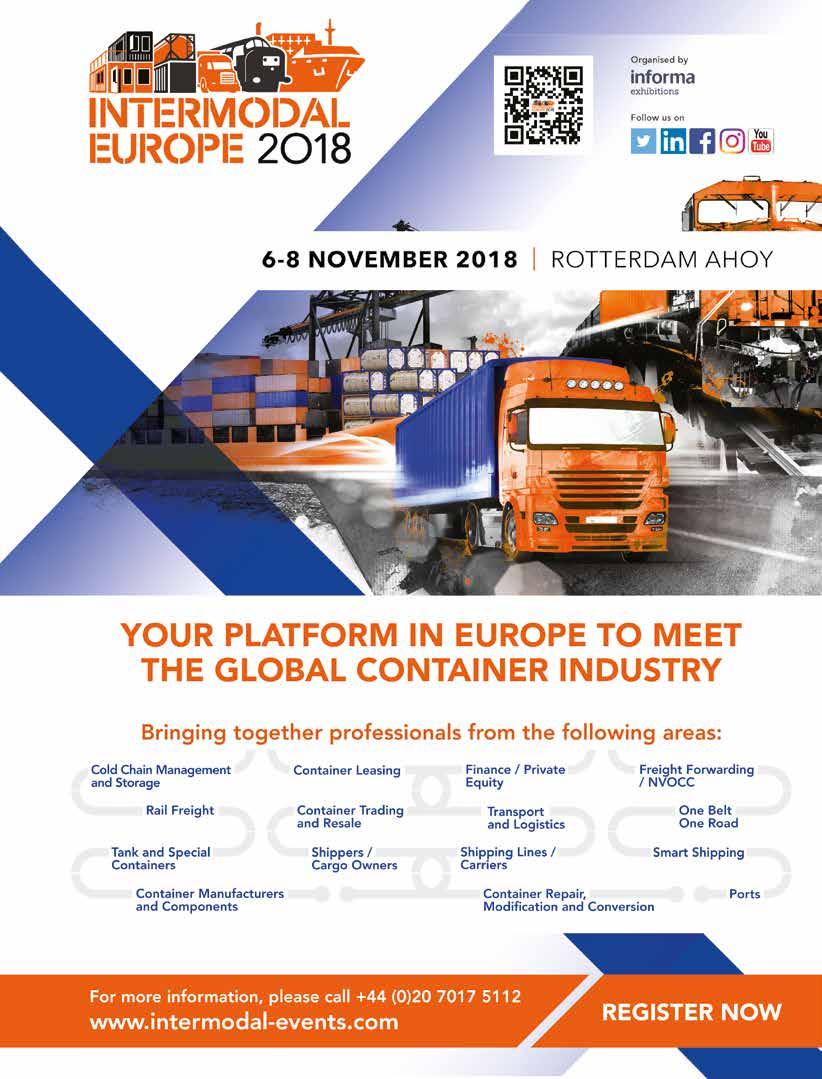
CONTENTS
VOLUME 39 • NUMBER 09
List of major steel drum producers 27 News bulletin – steel drums 32
INDUSTRIAL PACKAGING
Dump those drums Latest kit from Flexicon 34
diary
SAFETY
Log
Not in vain
CSB’s learnings on start-up risks
UP FRONT
Letter from the Editor 01 30 Years Ago 04
Learning by Training 05
View from the Porch Swing 06 Deal or no deal
What Brexit might mean for industry 08
STORAGE TERMINALS
What’s in the tank?
Terminals in a zero-carbon economy 13
Pros and cons
What to expect at TSA conference 18 Sink or swim
A&A addresses flood risks 20
Once in a lifetime Odfjell sells up in Rotterdam 22
News bulletin – storage terminals 23
STEEL DRUMS
Global goodies Greif expands around the world 25 Keep the faith Skolnik under new leadership 26
Investing in Selters Schütz adds to capacity 35
TANKS & LOGISTICS
Sohar, so good JTS expands in Oman, UAE 36
AdBlue – what’s new?
Storage Partners on a special supply chain 38
Joining forces
Transporeon, TMI agree merger 40 News bulletin – tanks and logistics 41
CHEMICAL DISTRIBUTION
That was the year that was Biesterfeld enjoys successful 2017 43 Trust Bodo Bodo Möller adopts ISO 37001 44 Seal that deal Maroon secures succession 45 News bulletin – chemical distribution 46
COURSES & CONFERENCES Training courses 48 Yes we can IATA promotes competency-based training 50
the expert Newson Gale on static hazards
on the line
NCEC on telephone response
A limit on bags
Cefic advice on flexibags
REGULATIONS
Ready or not
VCA looks at post-Brexit regulations




All over the world
COSTHA hears about rule changes
BACK PAGE
Not otherwise specified
Peter Mackay
Email: peter.mackay@hcblive.com Tel: +44 (0) 7769 685 085
Deputy Editor
Sam Hearne
Email: sam.hearne@hcblive.com Tel: +44 (0) 208 371 4041
Managing Director
Samuel Ford
Email: samuel.ford@hcblive.com
Tel: +44 (0)20 8371 4035
HCB Monthly is
Commercial Manager

Newall
Email: ben.newall@hcblive.com Tel: +44 (0) 208 371 4036
Campaigns Director
Craig Vine
Email: Craig.Vine@hcblive.com Tel: +44 (0) 20 8371 4014
by
NEXT MONTH
The Europe issue
talks digitisation
RID/ADR/ADN update
Shortsea shipping market
Reporting back from Fecc Congress
Media
Managing Editor
Email: stephen.mitchell@hcblive.com Tel: +44 (0) 20 8371 4045
While the
and
in good faith and every effort is made to check accuracy,
in HCB are
should verify facts and
directly with
can accept no responsibility in this respect.
sources before acting upon them, as the
2059-5735
Cargo Media Ltd Marlborough House 298 Regents Park Road, London N3 2SZ www.hcblive.com
UP FRONT 03 WWW.HCBLIVE.COM
Editor–in–Chief
published
Cargo
Ltd.
information
articles
published
readers
statements
official
publisher
ISSN
Ben
Stephen Mitchell
Associate Editor Brian Dixon Designer Natalie Clay Conference
52
Incident
53
56 Ask
58 Voice
59
60
62
68
72
EPCA
30 YEARS AGO
A LOOK BACK TO SEPTEMBER 1988
Thirty years ago, HCB notched up a significant milestone: 100 issues since it was first published in January 1980. Things were a bit easier for the staff in those days: no website to feed, no social media, no weekly newsletter. So all the congratulatory editorial coverage was poured into a bumper issue, with several articles by leading figures in the industry looking back at the progress that had been made in recent years in improving safety in the transport of dangerous goods by all modes.

Kicking off those articles, editor Mike Corkhill recalled that, less than a year after HCB opened for business, keen readers were worried that it would have covered everything by the time 1980 was out. But, as we know, things don’t necessarily work out like that. Just in terms of regulation, there had been an extensive revision of ADR and RID to bring them into line with the UN model, and the US, through the fabled HM-181 rulemaking, was heading in the same direction.
In fact, so dramatic had been those changes that Mike felt able in September 1988 to report that most of the pundits corralled into giving their opinions felt that the regulations were nearing their final form and that “only fine-tuning remains”. We can laugh now, but then they didn’t have lithium batteries to worry about in those far-off days.
Consultant Hugh Martin did in fact have plenty of ideas for making the IMDG Code more user-friendly, many of which came to fruition when IMO revamped the Code some years later to fit the UN model. John Cox, former secretary of the ICAO Dangerous Goods Panel, felt the Technical Instructions were working well and that the focus
should swing towards compliance, as recent serious incidents in Boston and Nashville and over Mauritius had shown what could happen if the regulations were ignored.
Herbert Kennard (‘HJK’ to HCB readers) highlighted the difficulty in maintaining modal harmonisation, using the recently adopted provisions for IBCs to show how different regulatory bodies could take very different approaches, despite the existence of a UN model to follow. This would, he predicted, cause problems in European transport when both road and sea legs were involved.
Consultant Bob Lakey, looking at the transport of chemicals in bulk by sea, said that the adoption of Marpol Annex II – which at that time had been in place for just over a year – was “a truly remarkable feat” that would provide both economic and environmental benefits. It also stood the test of time – at least until GHS came along and forced industry to take a close look at some of the provisions.
Helmut Gerhard, managing director of WEW (now part of Thielmann), provided a lucid explanation of the multifarious offerings that could fall under the broad definition of ‘tank container’, still a relatively new concept in international trade although one that, through its promise of safety and reliability, held out the promise of playing a considerable role.
Harri Mostyn, chief dangerous goods officer at PIRA, wondered if there were a better alternative to the UN performance testing regime for packagings; as it was now being taken up by the US and had also been used as the model for new IBC provisions, he thought not.
HCB MONTHLY | SEPTEMBER 2018 04
LEARNING BY TRAINING
By Arend van Campen
OBSOLETE BUSINESS MODELS
A few days ago I received an email from an old friend in the cargo inspection business. He sent me a link to a report which was issued by the Dutch Human Environment and Transport Inspectorate. It was titled: ‘Heavy Fuel Oil for Sea-going vessels, On Road Fuels for West Africa, blended in the Netherlands’.
When analysing fuel oil used for bunkers for vessels, waste oil had been used as blending material and PCBs were found in some of the samples taken. In the Road Fuels section of the report a statement was made that pygas, containing a benzene percentage of over 40 per cent, was used as blendstock for gasoline; light cycle oil (LCO), with a high aromatic and sulphur compound content including polycyclic aromatic hydrocarbons (PAHs) also related to carcinogens, was used as a blendstock to create diesel. The report talked about noncompliance with REACH, SOLAS and MARPOL.

The reason why I am writing this today is that those who may have read my previous columns will immediately understand that something is not right about such a practice. The first rhetorical question I ask is this: “Is blending hazardous materials threatening life and environment good or bad?” You already know the answer.
Without being judgemental I wanted to write something about actually controlling or managing such practices. Would a trader who blends such compounds still be able to control or manage potential risks and effects? Would he or she be able to control the risks of being found out? Again you will know the answer to these questions.
This report can therefore be considered as a non-manageable risk or a so-called non-linear effect driving the trading, shipping and storage business into entropy (disorder). If anyone involved in facilitating such
blends believes that this can be controlled and managed he or she is mistaken, because it directly renders vulnerable anyone allowing this harmful practice.
Let’s talk for a moment about winners and losers. Winners are the traders, the ports, storage terminals, inspection companies, shipping agents, additive suppliers, refiners, waste terminals, transport and shipping companies. Losers are people, human and non-human life, the environment, social cohesion, society and those who know that something wrong is going on, but in order to keep their jobs, must stay quiet. Blending is therefore only possible when everyone profiting won’t speak about it. Blending toxic and hazardous materials may not be illegal, but the main question is this; is it moral? Is it responsible to expose people and the environment? You already know the answer to that question.
Our conscience cannot be switched off. Remorse cannot be escaped. This is a scientific fact. Regulating this obsolete business model will not change it. It needs to be replaced. In systems science we speak about negative interdependent business models, benefiting some at the cost of others. These costs, which may not be listed on the final invoice, are also known as negative externalities. From now on, let’s start including them as the true cost of doing business.
This is the latest in a series of articles by Arend van Campen, founder of TankTerminalTraining. More information on the company’s activities can be found at www.tankterminaltraining.com. Those interested in responding personally can contact him directly at arendvc@tankterminaltraining.com.
UP FRONT 05 WWW.HCBLIVE.COM
FROM THE PORCH SWING
PUT YOUR MONEY WHERE YOUR MOUTH IS
Dear Air Carriers,
I hear that you are interested in reducing the number of undeclared Dangerous Goods packages offered to you. If you are serious about this, read on. I think we can dramatically reduce the number of unintentionally undeclared DG shipments. I also have a separate suggestion for those caught intentionally offering DG undeclared, but public hanging isn’t likely to make a comeback as a regular method of punishment, so this letter is about the ‘Un-Un’s’, the unintentionally undeclared shipments.
As background, you should know that I’ve had customers unintentionally offer DG undeclared, and get caught, which is how they became my customers. Their first reaction, without exception, has been “that stuff isn’t hazardous”, usually, but not quite always, followed by “I can buy it in a grocery store”. The goods shipped undeclared were common sizes of lithium batteries or aerosols. So, a
quick and dirty root cause analysis leads me to believe that if the public knew these kinds of retail products are Dangerous Goods, they wouldn’t ship undeclared.
Of course, it’s more than a bit much to ask air carriers to educate the public around the world about the regulatory difference between personal transport from retail establishments and commercial airline transport. But rather than try to educate everyone, we do have many, many great opportunities to educate a significant portion of the public, those who fly as passengers. And likely, those who can afford to fly regularly are more likely to be in positions of influence at their jobs.
Now, I do realize that some of you are cargo-only carriers, but bear with me, and remember you are sometimes in conferences or trade associations with the passenger carriers, who are perhaps more likely to listen to you than to me. And you are the ones that suffer most from un-un shipments.

Passengers often - heck, probably usually - bring DG with them when they fly. Not just lithium batteries and aerosols, but perfumes, colognes, hand sanitizers, and other personal items as well. Sure, certain amounts of these personal care items are allowed in checked luggage, carry-ons, or both. But that doesn’t mean that they aren’t DG, it just means that they’re ‘allowed’ or ‘permitted’ DG.
It’s this crucial distinction that makes all the difference in whether the passenger learns what’s DG, or, whether they remain with a misconception that leads to un-un. Simple changes could easily teach passengers about what’s really DG. For example, when checking in, a passenger could be asked “do you have more than the allowed 70 ounces of personal care dangerous goods, such as batteries, perfumes, or aerosols”, instead of the typical “do you have any DG”. The latter question, when answered “NO”, and receiving no later correction when bags are inspected, reinforces in passengers’ minds that personal
HCB MONTHLY | SEPTEMBER 2018 06
items are NEVER (emphasis added) DG. The former question though, instills in the passenger the idea that their aerosols or fragrances or computers/tablets/phones might possibly be DG.
Again, what my customers have told me about why they committed a violation can be relevant. One customer, whose company had shipped aerosols un-un, lamented that he’d flown on vacation two weeks before, and no one had told him that the aerosol sunscreen in his luggage was DG. The implication is that if he’d been told it was DG, albeit ‘allowed’ DG, he wouldn’t have committed an un-un violation when he returned to his workplace.
An objection that has been raised to this approach is that it may “frighten” the passengers, who may then choose a different air carrier that ‘doesn’t allow DG in the hold’. First, I’m not convinced that passengers will suddenly become afraid of their personal articles. But, more importantly, second, if all passenger carriers started communicating
the regulations more effectively, and at the same time, there would be no alternative airlines that are ‘less frightening’.
So, that’s it. If all air carriers work together to make sure that passengers understand that although their DG is allowed, it is still DG, then when those passengers get back to work, they can stop offering those things as un-un. All it requires is a bit of cooperation and coordination amongst yourselves. Are you truly serious about reducing unintentionally undeclared shipments being offered? Show us.
Sincerely, A DG consultant not afraid to lose some business as violations decrease.
This is the latest in a series of musings from the porch swing of Gene Sanders, principal of Tampa-based WE Train Consulting; telephone: (+1 813) 855 3855; email gene@wetrainconsulting.com.
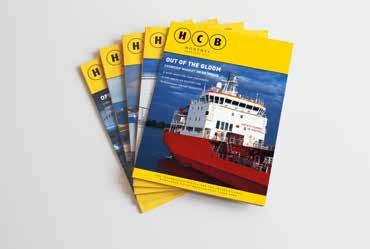
UP FRONT 07
LIVE WEEKLY MONTHLY BRINGING NEWS AND ANALYSIS OF THE DANGEROUS Subscribe todayfor just£1 38 1980-2018 YEARS www.hcblive.com
IF THE PUBLIC KNEW SOME RETAIL PRODUCTS ARE DANGEROUS GOODS, THEY WOULDN’T SHIP UNDECLARED
DEAL OR NO DEAL
in international transport. These are not EU instruments in any case, and steps are in hand to make the necessary changes to legislation, referring directly to the agreements rather than to the EU Directive that mandates their implementation.
It also seems likely that the UK will find a way to remain involved with the European Chemicals Agency (ECHA) on some basis, which will enable UK-based manufacturers to obtain the necessary registrations to allow them to place chemical substances on the EU market.
IN SIX MONTHS’ time, the UK will – barring a last-minute change of heart – remove itself from the EU. Even at this late stage, there is considerable uncertainty about the future relationship between the UK and the EU, its biggest trading partner, and that uncertainty is causing problems for industry on both sides of the divide.
There are a few things that are known; the UK will continue to apply the ADR Agreement and RID to the road and rail transport of dangerous goods within the country as well as
Pretty much everything else is up in the air. We are still no clearer on issues such as:
• The nature or terms of any trade agreement between the EU and UK
• The nature or terms of any customs agreement between the EU and UK

• The collection of VAT on goods moving between the EU and UK
• The ability of haulage companies on both sides to move goods between the EU and UK
• The status of the land border between Ireland (EU) and Northern Ireland (UK)
It is worth stressing that the current
impasse has nothing whatsoever to do with trade or economics; it is an inevitable outcome of the long-standing schism within the UK’s ruling Conservative party between pro- and anti-Europe factions. The vote on Brexit was former Prime Minister Cameron’s attempt to bridge that divide; not only did it fail to achieve that target, the schism remains and has perhaps even deepened. It is certainly making it difficult for the government to agree its position in discussions with EU over the terms of the divorce.
KNOWN UNKNOWNS
In this article, HCB has attempted to look at how (or if) those important issues are likely to be resolved and illustrate some of the the problems that will be faced post-Brexit by industries and logistics service providers on both sides of the English Channel.
Trade associations have mostly been lobbying hard for a ‘soft’ Brexit, which would retain some of the benefits of EU membership, and have been working hard to try to highlight the issues. They are also trying to prepare their own members for whichever future awaits.
A recent survey by Close Brothers Asset Finance asked 900 businesses about their plans for Brexit. When asked whether they
HCB MONTHLY | SEPTEMBER 2018 08
BREXIT • WITH THE UK’S DEPARTURE FROM THE EU LOOMING EVER CLOSER, UNCERTAINTY OVER THE NATURE OF ANY FUTURE RELATIONSHIP IS MAKING LIFE DIFFICULT FOR ALL THOSE ENGAGED IN TRADE
had started planning for the various possible outcomes of Brexit, 47 per cent said ‘yes’. “This kind of forward thinking is typical of the enterprise shown by UK’s SMEs,” says Neil Davies, chief executive of Close Brothers Asset Finance. “It clearly demonstrates that in the absence of certainty, businesses have taken it upon themselves to assess the impact leaving the EU will have on the supply chain, which for many businesses exposed to Europe is critical.
“Every sector we polled had some level of export dealings with Europe, which demonstrates clearly just how entwined we are with the continent and how important it’s going to be to ensure the movement of goods isn’t disrupted, both in the short and long term.”
The negotiations surrounding customs and trade are a source of trepidation for any UK company with trade links in the EU. A recent white paper published by the UK government details proposals for “a free trade area for goods” and a “facilitated customs arrangement” which aim to make cross-border trade as frictionless as possible post-Brexit. However, the rifts within the ruling Conservative party in the UK mean that it is far from certain that such proposals will come to fruition.
With this in mind, the Freight Transport Association (FTA) recently said that, if the UK wants to leave the customs union and the EU single market after Brexit, solutions need to be agreed on both the fiscal security and safety side of customs.
There are two points raised by the FTA. The first is the need for a complete security and safety waiver that will remove the need for entry and exit summary declarations. The second is the negotiation of a Mutual Recognition Agreement for Authorised Economic Operator (AEO) status, which will enable companies that are accredited on one side to benefit from the same easements on the other side.

Businesses with AEO status voluntarily meet a wide range of criteria, work in close cooperation with customs authorities to ensure supply chain security and are entitled to enjoy benefits throughout the EU. To qualify for AEO status, businesses must be able to demonstrate that they have both the policies and physical arrangements
required to guarantee that the goods have been transported securely and are properly accounted for. To qualify for the linked status of Authorised Economic Operators (Customs) (AEOC), businesses must currently be able to show at least three years’ experience of meeting customs obligations.
The white paper suggests that where a good reaches the UK border and the destination can be robustly demonstrated by an AEO, it will pay the UK tariff if it is destined for the UK, and the EU tariff if it is destined for the EU. However, the usefulness of any such AEO scheme is dependent on mutual recognition.
Any end-to-end process for the import or export of goods can only work if both the countries of consignment and destination are in agreement.
Currently, the government’s white paper cannot guarantee that AEO status granted in the UK will be recognised by the EU. Without mutual recognition through a full political agreement with the EU, the trusted traders concept would have little value and would not provide ‘frictionless trade’ as the white paper currently suggests.
WORKING TOGETHER
On 9 August, Chris Grayling MP, secretary of state for transport, hosted a road haulage
round table with professional representatives, the Department for Transport (DfT) and other government departments to consider plans for Brexit, including a no deal scenario.
Reflecting on the meeting, Kevin Richardson, chief executive of the Chartered Institute of Logistics and Transport (CILT) said: “Logistics and transport are key to our citizens’ freedoms, security and national prosperity, and frictionless borders are essential. All must now play their part; inaction is not an option, and everyone should collaborate on creating the most effective and efficient solutions for our future outside the EU, as a significant global player.”
During the meeting, CILT requested that the government provides clarity on plans and timelines to assist businesses in their contingency planning. Furthermore, requests were made to conduct research and assess logistics capacity against the demands of the nation under different scenarios, so that major gaps, risks and the implications for private and public sector investment can be determined. This should include assessments on access to non-UK EU labour on which the profession is heavily dependent. Clearly there is not much time for such research to be undertaken.
“It is imperative that we work together to get a solution that ensures that our supply »
UP FRONT 09 WWW.HCBLIVE.COM
chains continue to operate without friction,” says Richardson. “Although we should be prepared for a no deal scenario, CILT will continue to highlight the disruption that such a situation will present to both UK and EU businesses and societies.

“The Institute has been consistent in its advice to government through our Brexit round table meetings, select committee responses and our involvement in advisory groups. One area that CILT has been advocating for many months is the importance of AEO accreditation as a means of supporting international supply chains in customs applications and processing.”
CUTTING TIES
The European Chemicals Agency (ECHA) is the body that administers the Registration, Evaluation, Authorisation and Restriction of Chemicals (REACH), an EU regulation that aims to improve the protection of human health and the environment from the risks that can be posed by chemicals, while enhancing the competitiveness of the EU chemicals industry.
One of the most pressing questions being asked by small and medium sized enterprises
(SMEs) is: ”will the UK still be covered by REACH after Brexit?”
Back in 2016 when the result of the EU referendum was announced, It became obvious that there are two options with regard to REACH and the UK. One is that the UK could choose a new status of a non-EU country that is a part of the European Economic Area (EEA) and the single market, termed the ‘Norway model’. The other option is for the UK to choose to be part of the European Free Trade Area (EFTA) and be outside the single market but with free trade agreements, like Switzerland. The key difference between the two options is that REACH does apply in Norway but not in Switzerland.
As no mutual agreement has yet been struck between the UK and EU, by 30 March 2019 the UK will no longer have direct access to ECHA and its database and will no longer be able to participate in its regulatory and enforcement coordination. The UK will no longer have a legal obligation to maintain a national helpdesk to provide UK-based companies with advice and assistance in fulfilling their obligations under the EU chemical legislation.
With negotiations still underway, it cannot be determined what the ultimate impact
of the withdrawal will be on ECHA or the economic operators within the EU. However, ECHA has stated that the withdrawal will significantly reduce the Agency’s cooperation with UK authorities.
The Chemical Business Association (CBA) has commented on the Prime Minister’s commitment “to explore the terms on which the UK could remain part of EU agencies such as those that are critical for the chemicals, medicines and aerospace industries.” The Prime Minister said that the UK would negotiate ‘associate membership’ of ECHA.
“The term ‘associate membership’ requires further clarity before industry can begin to make commercial and investment decisions based on a settled regulatory framework,” says Peter Newport, chief executive of CBA. “The industry has already invested many millions of pounds in complying with these regulations, which form a central contractual term in commercial agreements for the supply of chemicals to EU markets.
Regulatory compliance is the key to market access. Without it there can be no trade.”
The uncertainty caused by Brexit has already had an impact on the chemical supply chain with some companies taking matters into their
HCB MONTHLY | SEPTEMBER 2018 10
own hands. CBA is aware of some member firms setting up subsidiary companies in EU member states in order to have a legal entity that can register with ECHA and place substances on the market within the EU.
NEW RULES
With negotiations currently underway, the UK has hinted that it is taking an active role in shaping new EU VAT regulations by 2020. “The government aims to keep VAT processes after EU exit as close as possible to what they are now,” according to Mel Stride, financial secretary to the Treasury.
Should Britain wish to remain inside the EU VAT area, it will continue to be bound by rules set in Brussels that are policed by the European Court of Justice. The other option is to leave the EU VAT regime, which will require infrastructure to impose VAT at borders, similar to the situation at the Swiss-German border. While it might seem an obvious choice for UK consumers, the former breaks one of Prime Minister Theresa May’s fundamental negotiating red lines and so, as with the state of customs, uncertainty still remains.
The implications of exiting the EU without a deal in place would be detrimental for many sectors, particularly road haulage.
The Haulage Permits and Trailer Registration Act gives the UK a legal framework for hauliers to operate in the EU if they need permits or registrations.
The Road Haulage Association (RHA) is concerned that this Act is not enough to allow free passage to UK lorries travelling abroad within the EU if a no-deal Brexit is realised and has been campaigning relentlessly for the UK to strike a deal that maintains free access across borders. “A no-deal Brexit would be a disaster for business,” says Richard Burnett, chief executive of RHA. “Relying on permits would be like a step back in time and would mean a very limited number of UK trucks working abroad, so many firms relying on cross-border haulage won’t survive.”
According to Burnett, “the Dover Strait handles 10,000 lorries each day and processing them is currently seamless. The stark reality is that if customs are put in place, it will take an average of about 45 minutes to process one truck on both sides of
the Channel. If that happens then the queues of HGVs in Kent will make the jams seen in the summer of 2015 appear as little more than waiting for the traffic lights to change.”
If a customs agreement is not put in place in March 2019, hauliers will be faced with the prospect of coming to the UK and having to wait days or even weeks before they can return home, which will be a huge deterrent to them making the journey at all.
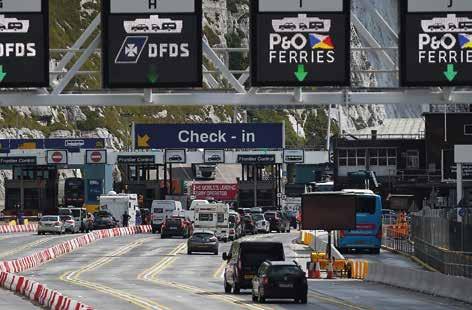
On top of customs problems, hauliers would be required to hold a European Conference of Ministers of Transport (ECMT) permit for lorries to carry good internationally, as the EU
Community Licenses that currently allow lorry movement within the EU will cease to be valid when the UK exits the EU. In the 12 months to June 2018, 3.5 million road goods vehicles travelled from Great Britain to Europe, with 2 million of these being foreign-registered vehicles. Needless to say, the increased bureaucracy will cause a massive disruption to cross-border trade.
BORDER CONTROL
Perhaps the most intractable problem concerns the land border between the UK and the rest of the EU – that between Northern Ireland and the Republic of Ireland. The border has been frictionless for people since the Irish Free State was formed in 1922 but it was a customs point for goods until both the UK and Ireland joined the EU. Few want to go back to the pre-EU days, when smuggling was a good source of revenue for the various sectarian groups involved in violence in Northern Ireland and such a move would also threaten the 1998 Good Friday Agreement, which finally ended the violence.
Extensive negotiations to avoid a hard border between the Republic of Ireland and Northern Ireland have been held but, as the departure date looms ever closer, important steps still have to be taken by both governments to ensure a seamless transition. HCB
UP FRONT 11 WWW.HCBLIVE.COM
“LOGISTICS AND TRANSPORT ARE KEY TO OUR NATIONAL PROSPERITY AND FRICTIONLESS BORDERS ARE ESSENTIAL”

WHAT’S IN THE TANK?
the UK and Ireland, says it recognises the need for decarbonisation and the focus on road transport as a major contributor to this goal. However, TSA says, the strategy raises several significant concerns for the bulk liquid storage sector, and more widely for the downstream oil industry.
THE CURRENT POSITION
THE PUSH FOR decarbonisation is gathering pace, nowhere more rapidly than in Europe. Governments are planning to phase out liquidfuelled vehicles within the lifetime of many of those currently at work and, according to a recent study by Wood Mackenzie, we can expect to see global peak oil demand in around 2036.
The massive reduction in the use of gasoline and diesel in particular, along with the concomitant increase in demand for electricity generation, raise serious questions about the future structure of the downstream oil industry. That applies most obviously
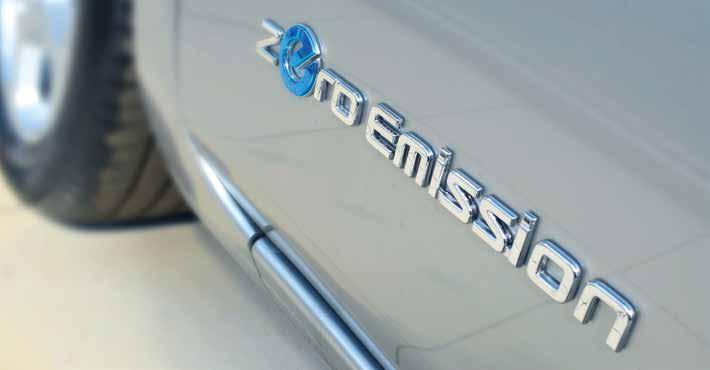
to refiners but also to bulk liquids storage terminals. The reduction in refinery capacity in Europe over the past decades means that independent bulk liquids terminals have taken on an increasingly important role in managing fuel supply security. But what future do they have if those fuels are to be withdrawn?
The UK government released details of its decarbonisation strategy in July this year. The Road to Zero – Next steps towards cleaner road transport and delivering our Industrial Strategy sets out the future needs of the country and the steps that will be taken to move towards zero tailpipe emissions. The document does not, though, address the question of how the transition will impact the existing fuel supply infrastructure.
The Tank Storage Association (TSA), which represents bulk liquids storage terminals in
Bulk liquid storage in the UK is an essential part of the fuels supply chain, providing an interface between sea, road, rail, inland barge and pipeline logistics. The tank storage sector provides many of the raw materials and finished products required to ensure that the UK economy thrives and that energy needs are met. The UK is a net importer of both diesel and aviation fuels, which are imported to, and distributed from, bulk liquid storage facilities.
Hydrocarbons account for more than 60 per cent of the volumes of bulk liquids stored at TSA member sites and provide the infrastructure necessary to support the UK demand for transport fuels. UK businesses also rely on these facilities for the export of bulk liquids, including gasoline. Import facilities also provide greater resilience within the supply chain by ensuring flexibility to »
STORAGE TERMINALS 13 WWW.HCBLIVE.COM
DECARBONISATION • WHAT DOES THE FUTURE HOLD FOR THE DOWNSTREAM OIL INDUSTRY IN A WORLD MOVING AWAY FROM HYDROCARBONS? TSA RESPONDS TO THE UK GOVERNMENT
WHAT ROLE WILL TERMINALS PERFORM IF THERE ARE NO LIQUID FUELS GOING INTO TOMORROW’S ROAD VEHICLES?
meet demand, particularly in periods where domestic supplies of transport fuels cannot be guaranteed.
All industrial facilities are subject to continuous maintenance and improvement to ensure that they are efficient, meet the demands of their customers and are compliant with relevant legislation and standards. Financial performance is measured against the returns that those investments make, which ultimately determines viability. Without careful consideration and planning regarding the impacts of decarbonisation, assets that are required to meet current and near-term demand may no longer be viable for owners and investors – impacting on energy security, as well as those businesses that rely on the import and export of bulk liquids in the chemical, agricultural and food markets.
SWITCH TO ELECTRICITY
Electrification is an important aspect of the UK strategy for decarbonisation, particularly for shorter journeys carried out in urban areas and in hybrid vehicles for longer journeys. The government’s strategy sets
out how it intends to encourage the installation of electric charging points both in domestic dwellings and within the existing retail network.
Careful consideration must be given to the logistics for installing charging points on the existing retail network – the number of charging points and their nature (for example fast chargers) will have a significant impact on how and if these can be installed, TSA notes.
All charging points, and access and egress to them, will be required to comply with the current industry best practice as described in the Energy Institute ‘Blue Book’. Where space is available to install charging points, in many instances separate feeds will be required for the site, which will necessitate obtaining the appropriate planning consent and wayleaves.
Legislating sites to provide charging points without providing access to funding may also result in many existing retail sites closing, particularly in rural areas where the demand will be highest.
Emerging technologies should also be considered, for example e-fuels and Power to Liquid (PtL), which are carbon-neutral and can utilise existing infrastructure and
vehicles, TSA says. Consideration must be given to these alternatives, which may have less impact on the environment, economy and required investment within the supply chain as part of the overall strategy. Fuels Europe recently published a vision for 2050, which looked at different viable energy sources that collectively could be developed to meet government targets.
HOLE IN THE POCKET
Any move away from existing liquid fuels will also have a major impact on the UK government’s income. The duty paid on fuels, either as import duty or fuels duty paid by the consumer, is a significant contributor to the UK economy. For all fuels this is estimated to be £28.2bn for 2018-2019, a large proportion of which represents duty paid on road fuels. It would appear that the government has not considered how the loss of this income will be addressed during the transition towards full decarbonisation. At present, electric vehicles enjoy lower per-mile costs than conventionally fuelled vehicles but, if the current level of duty is to be maintained there will have to be some movement in electric power prices.
“We ask that the UK government fully engages with all those businesses engaged in the supply of transport fuels to the UK market and provides appropriate opportunities for formal consultation as necessary,” TSA says.
It is, of course, not just the government that will lose money; terminals are highly reliant on hydrocarbon fuels for occupancy and income and, if those fuels are to be replaced, terminal operators will need to find other cargoes to fill their tanks. Given that any investment in new storage capacity has a long payback period, terminal operators are right to be nervous about the future. What level of capacity will be appropriate? Where should those tanks be located? What other services will need to be provided to meet the very different future needs of industry, consumers and the country at large?
These questions are not specific to the UK. Terminal operators across Europe and, increasingly, in the rest of the world are now trying to find answers. HCB www.tankstorage.org.uk
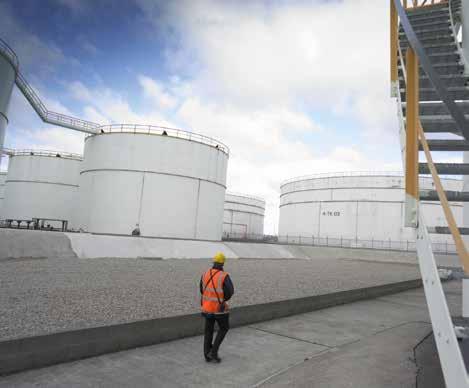
HCB MONTHLY | SEPTEMBER 2018 14 STORAGE TERMINALS



PROS AND CONS
PREVIEW • THIS YEAR’S TSA CONFERENCE WILL DISCUSS CHALLENGES FACING THE STORAGE SECTOR IN THE UK, WHILE THE EXIBITION WILL OFFER A RANGE OF IDEAS TO HELP MEET THEM
THE TANK STORAGE Conference and Exhibition, the UK’s leading event for the bulk liquid storage sector, will take place on 27 September this year, once again at the Ricoh Arena, Coventry. The conference sessions will feature presentations from government, regulators and industry experts on topics of interest for those working in this sector, while the associated exhibition will offer space to more than 60 vendors to show their wares to a large and interested audience.
The event will begin with an introduction by Paul Denmead, recently installed as president of the Tank Storage Association (TSA), followed by a keynote presentation on trade imbalances and the impact on European storage from Giacomo Boati, director of HIS Markit Oil Markets, Midstream and Downstream Consulting. Other topics to be addressed during the conference include cybersecurity
and mental health in the workplace, led by Sarabjit Purewal of the Health and Safety Executive and independent consultant Jamie Walker, respectively. Both topics will provide a springboard for further discussion.
AROUND THE HALLS
During breaks in the conference, delegates will be able to wander the exhibition hall overlooking the hallowed pitch at the Ricoh, home to both Coventry City FC and Wasps RUFC. Among those hoping to attract buyers will be systems and engineering technology consultancy Frazer-Nash, which will be discussing how it helps the bulk liquids storage sector to develop, enhance and protect its critical assets, systems and processes.
The company offers technical solutions to the problems and challenges facing the sector and aims to deliver safe and effective
bulk liquids storage operations for its clients. Frazer-Nash supports companies’ asset management through integrity, subsidence, fitness-for-service assessments, obsolescence management and helping to improve processing efficiency of a terminal’s assets.
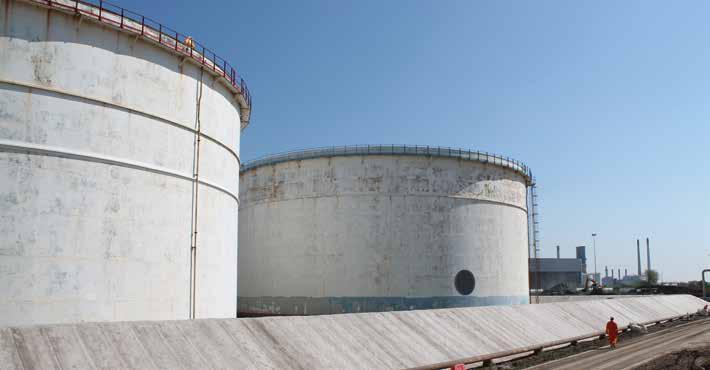
With safety a key focus in the tank storage sector, Frazer-Nash’s safety, risk and reliability services help to assure design compliance of tanks through code assessments and adference to environmental standards. The company has extensive experience in developing safety cases for clients across safety-critical industries. With more than 800 employees, Frazer-Nash works from a network of nine UK and three Australian locations.
When it comes to safety concerns, working at height is quite literally an accident waiting to happen. IFC Inflow, a liquid loading equipment and safe tanker access specialist, will present its fall prevention systems at this year’s TSA exhibition. IFC is a Basildon-based company whose mission is to keep workers safe when accessing road and rail tankers, tank containers and the tops of vehicles used for fluid distribution.
Founded in 1987, IFC began by specialising in plant installations where it installed high-volume liquids transfer equipment.
HCB MONTHLY | SEPTEMBER 2018 18
Progressing forward some years, it sensed increased demand for gantries and safety cages that could keep workers from falls while working in hazardous locations like the tops of tankers. What resulted was a wide range of items, designed in the company’s Essex headquarters and installed in more than 30 countries around the world.
“It’s a sad fact that in 2018, workers are still suffering injuries and even death when working on the tops of tankers or in any truckbased activity,” says Kiran Shaw, director of IFC. “We take a lot of pride in knowing that our safe access systems are becoming the standard for companies who don’t want to wait for a fatality before they act.”
According to recent government statistics, 35 workers were killed by falling from a height at work in 2017. This figure is just one less than the 36 that were killed by moving vehicles and, although safety in the UK has generally increased, manufacturing, agriculture and construction are still the most dangerous industries for workers.
FUTURE-PROOFING
A decline in the number of young people applying for jobs across the fuel storage and distribution sector has become more and more prevalent in recent years. Lincolnshirebased Reynolds Training Services (RTS) will use the TSA exhibition to highlight its new apprenticeships for bulk liquids terminal technicians and the associated qualification that accompanies it.
Internships such as the ones offered by RTS are a proven way to entice young people into skilled labour roles such as technicians and engineers. On 27 June this year, RTS hosted TSA’s ‘SHE’ meeting at the CATCH facility in Stallingborough, where its managing director John Reynolds provided an overview of the progress that has been made in relation to development of the apprenticeship for operational personnel in the bulk liquids warehousing sector. The company has laid out a work-based learning guide that includes competences that need to be achieved by anyone being trained for the occupation, with the first cohort planned to start in 2019.
Concrete Canvas Ltd, which is exhibiting at TSA for yet another year, will be previewing its
award-winning products Concrete Canvas™ (CC) and Concrete Canvas Hydro™ (CCH), both of which have seen growth in sales in the petrochemical and oil and gas sectors. CCH has become the material of choice for projects at tank storage sites both across the UK and globally.

CC is part of a revolutionary new class of materials called Geosynthetic Cementitious Composite Mats (GCCMs). GCCMs consist of a three-dimensional fibre matrix filled with a specially formulated cement mix and backed with PVC. CCH uses the same innovative material technology, with an added thermally weldable geomembrane backing for full impermeability. CC is primarily used for erosion control applications, while CCH is specifically designed for containment.
Notably, CCH was used for the largest UK bund-lining project to date. A 5mm thick variant of CCH (CCH5) was specified for the project at the SemLogistics Ltd oil storage facility in Milford Haven, west Wales. It involved laying 4,000 m² of the material in bunds surrounding two of the facility’s tanks in separate phases between 2014 and 2016. The flexibility of CC and CCH products means that they can be used for a variety of uses outside their core applications and across multiple sectors. These include use in sectors such as temporary works, pipe protection, mining vent walls, tunnel lining and cable protection.
INSPECTION IS KEY
Eddyfi Technologies, which recently acquired M2M, will be previewing its Amigo 2 inspection device. The rugged unit takes advantage of TSC alternating current field measurement (ACFM) technology, able to detect cracks with accurate length and depth.
The Amigo 2 is capable of inspecting a wide range of geometrics through thin metallic and non-conductive coatings several millimetres thick. Although primarily used for above-water inspection projects, Amigo can also be used in shallow-water applications and splash zone weld inspection with the use of underwater probes.
The Amigo 2’s ability to detect the presence of small cracks poses a major benefit over competitive devices; locating small defects early means less work is required to fix it in terms of manpower, equipment and time, which translates into a significant cost saving. Amigo 2 can support a wide variety of singlesensor probes as well as multi-channel array probes. In order to make its products as accessible as possible, these products are available for sale, lease, rent or as part of Eddyfi’s on-site inspection.
HCB will report back on the TSA conference and all the news from the exhibition hall in the November issue. Full details of the event can be found at www.tankstorage.org.uk/ conference-exhibition/. HCB
STORAGE TERMINALS 19 WWW.HCBLIVE.COM
SINK OR SWIM
THE UK IS becoming more susceptible to extreme weather and businesses are being forced to view flooding as a growing concern – one that needs to be better understood and mitigated against. For organisations storing and transporting hazardous goods, extra risk is attached to rising waters, which could lead to pollution, litigation and downtime.
From the floods of 2015/2016 to the heavy snow much of the UK experienced last winter, factors such as climate change and urbanisation are leaving increasing numbers of businesses at risk. Just one of the storms from 2015/2106 – Desmond – cost the UK
economy around £5bn; a huge amount of money that filtered down to the bottom-line of businesses across the UK. From lost days due to staff being unable to get into work, to long-term damage to assets such as stock, equipment and machinery, even businesses that didn’t suffer directly may have been hit by disruption to their supply chain.
More than ever before, a proper understanding of the likelihood of flooding, regular maintenance of assets at risk and the implementation of appropriate flood plans should be taken seriously, to limit damage and the potential of negative environmental
impact. The latter is of particular concern for businesses dealing with hazardous substances where the risk goes beyond operational issues to a duty of care to prevent pollution and keep people safe.
MAKE A PLAN
A Flood Risk Assessment (FRA) will help businesses assess the likelihood of a flooding event so that they can decide how best to protect themselves. In the short term, businesses can sign up the Environment Agency’s flood alert service, which will provide notification when adverse weather conditions are on the horizon.
Adler & Allan has developed a Flood Risk Mapping Platform, FloodMarshal™, which draws on live and historic data to provide an accurate and immediate assessment on the probability of flooding.
Business that find themselves at risk should enlist the support of a local flood responder.
If flooding does strike, they will have the expertise and equipment to help lessen the impact and be able to provide clean-up and pollution prevention services afterwards so that
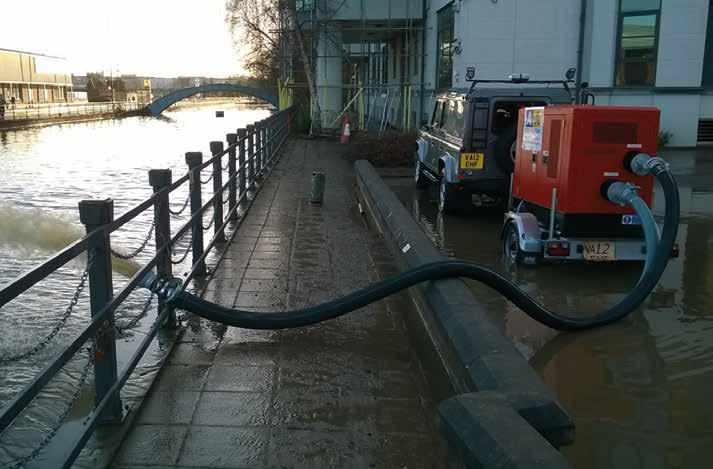
HCB MONTHLY | SEPTEMBER 2018 20
FLOOD RISKS • ALAN SCRAFTON OF LEADING FLOOD RESILIENCE PROVIDER ADLER & ALLAN EXAMINES HOW TO PROTECT THE TERMINAL AND KEEP THE ENVIRONMENT FREE FROM POLLUTION
businesses can get back up and running again as quickly as possible.
Key to reducing the risk of damage is the implementation of a regular inspection and maintenance regime for assets. In bulk liquids terminals, tanks and bunds are vital to containing hazardous substances so it is essential that they are kept in good order. Where substances are stored on site, drains should be clear and, for fuels in particular, separators must be kept clean and fully operational so that in the event of a flood any excess water can flow away safely.
Responsible businesses understand the challenges of a changing environment and know that preparation is essential to mitigating the risks to business continuity. That includes having local first response measures such as A&A Soakbags™ and appropriate spill kits are on site. Further, permanent flood defences will make the site more resilient to rising water levels.
THE PROBLEM OF WATER
Water ingress can contaminate product, particularly in the case of fuels. When water gets into a fuel storage system, both the fuel and the tank itself are put at risk. The water introduces microbial bacteria to the system and this contamination almost always leads to the corrosion of the metal parts of the tanks and the associated dispensing equipment. This corrosion will produce sludge, which will then contaminate the fuel; if contaminated fuel is used in an engine, it can lead to the degradation of parts.
The age of the tank has no bearing on potential damage - new tank systems seem to be equally as susceptible as old. Problematic levels of rust and sludge have been seen as a result of microbial contamination in as little as 6 to 12 months.

Apart from regular maintenance, protective coatings and linings will provide an additional barrier, helping to stop leakage, water ingress
and corrosion, while extending asset life –a useful step whether flooding is an issue or not.
Since 1988 the UK has been subject to at least one major flood every year, with the risk, severity and frequency on an upward trend, leaving more of us likely to suffer on a regular basis. At the moment, as many as 500,000 commercial properties are located in flood affected areas. For many it’s not a case of ‘if’ flooding happens, but ‘when’.
Adler & Allan offer a 360° flood resilience service, providing businesses with support before, during and after a flood, including access to the latest innovations in flood data mapping and the very best flood mitigation measures. Should the worst happen, A&A is able to deliver 24/7 emergency response and clean-up, 365 days a year thanks to its nationwide team. For more information, visit: http://flood. adlerandallan.co.uk/. HCB
STORAGE TERMINALS 21
ONCE IN A LIFETIME
Goldberg’s exit process “is still ongoing” and that further announcements will be made during the third quarter.
FAMILIAR TERRITORY
KOOLE TERMINALS BV has jumped at the chance to acquire a major bulk liquids terminal in Rotterdam, northern Europe’s largest port. The opportunity arose after Odfjell Terminals BV announced it was considering selling the terminal after its financial partner, Lindsay Goldberg, said earlier this year that it was looking to divest its 49 per cent stake.
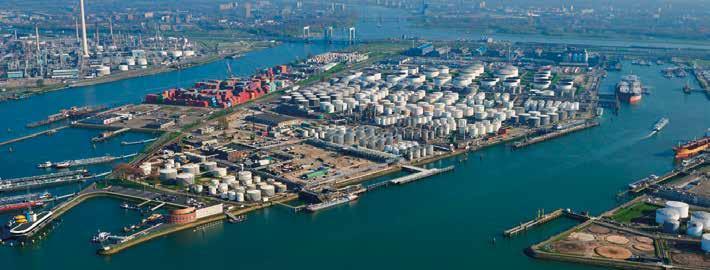
Odfjell Terminals (Rotterdam) (OTR) has been in recovery mode for the past five years after a number of incidents led to it being closed by Dutch environmental authorities for remedial work; the process of reintroducing tanks to service is nearing completion but, says Odfjell, more investment is needed to complete the rehabilitation of all its 1.6m m3 of tank storage capacity.
“This is a landmark transaction for us,” says Kristian Mørch, CEO of Odfjell SE.
“We have been working hard to restore profitability at OTR during the past years and the terminal is now ready for the next step of development, which will require significant investments. We are therefore pleased to have Koole as the potential purchaser. Koole has great ambitions for the terminal and we are confident in their ability to realise the value potential this business represents. Following a sale of OTR, Odfjell will have a network of seven tank terminals worldwide. We remain committed to our tank terminals business and will allocate capital for growth of Odfjell Terminals in the years to come.”
Frank Erkelens, CEO of Odfjell Terminals, adds: “OTR is well positioned to continue with building a successful future on the fundaments of its strategic location in the Port of Rotterdam, its unique capabilities, its top quartile safety performance and its strong organization. On behalf of Odfjell Terminals, I pay tribute to all the stakeholders of OTR for their continuous support. Odfjell Terminals remains focused on providing best in class safety and service performance to our respected customers across our terminal network.”
Odfjell SE will receive around $100m as its net proceeds from the $155m cash transaction and expects to record a book loss of some $100m. Odfjell also says that Lindsay
Koole Terminals is no stranger to Rotterdam. It has two terminals in the Pernis area of the port, in which it has recently been investing heavily. It has expanded biodiesel storage and block train handling capacity at its Koole Terminals Minerals (KTM) facility, which will allow customers to centralise their biodiesel and diesel storage requirements at one well-equipped site.
“KTM will be the first terminal operator in ARA to offer block train capabilities of this magnitude and could become a serious competitor to the Hamburg port, which is currently the only high-throughput diesel block train distribution location amongst the larger ports in North West Europe,” says John Kraakman, Koole Terminals’ CEO. Work is expected to be completed later this year. The quay at KTM was recently extended to open the terminal up to Suezmax tanker calls.
Koole has also completed construction of 33 new stainless steel tanks at its Pernis terminal in Rotterdam, adding some 52,000 m3 of new capacity. The work makes the site the largest provider of stainless steel tankage in the ARA region, Koole says. The terminal provides access by truck, train and barge and is designed to serve a variety of markets, including high-density products. HCB www.odfjell.com www.koole.com
HCB MONTHLY | SEPTEMBER 2018 22
ACQUISITION • IT IS NOT OFTEN THAT THE OPPORTUNITY ARISES TO ACQUIRE A MAJOR TERMINAL IN ROTTERDAM. ODFJELL’S DESIRE TO DIVEST ITS FACILITY IS GOOD NEWS FOR KOOLE
NEWS BULLETIN
STORAGE TERMINALS
OILTANKING SHEDS BIO PLANT
Oiltanking has agreed to sell the biodiesel plant at its Amsterdam terminal to Greenergy. The facility was built in 2010 to process vegoils but was never commissioned. Greenergy plans to convert the plant to process waste oils rather than vegoils, in order to meet growing demand for waste-based biofuel in the UK and Europe. The two parties have struck a long-term storage contract for raw materials and biodiesel.
“Oiltanking will also be investing into its own infrastructure in order to accommodate Greenergy’s logistical needs. As Greenergy’s logistical partner we are proud to become an integral part of this green sustainable supply chain,” says Jan Willem van Velzen, managing director of Oiltanking Amsterdam (above). www.oiltanking.com
CLH BUYS INTO MEXICO
Spain’s CLH has agreed to acquire a 60 per cent share in Mexican company HST, which is building a near-100,000-m3 oil products storage terminal in the Valle de México, due to
open in 2020. The terminal will have pipeline connections and is located conveniently for road and rail access for the distribution of fuels to the country’s largest market.
José Luis López de Silanes, president of the CLH Group, says the deal “constitutes a new step forward in the company’s process of internationalisation and one which enables us to continue to move forward in the American continent”.
The project will be the fifth international operation for CLH, following on from investments in the UK, Ireland, Oman and Panama. “The emerging opportunities for the development of infrastructure in Mexico are strengthened by the liberalisation process of the energy sector and the growing level of consumption that the country is experiencing,” says the company.
www.clh.es
TOPOLOBAMPO PICKS SEMPRA
Sempra Energy’s Mexican subsidiary Infraestructura Energética Nova (IEnova) has
won a public tender organised by the Integral Port Authority of Topolobampo to build and operate a marine storage terminal to handle imports of fuels, chemicals and other liquids in the state of Sinaloa. IEnova will be responsible for the full implementation of the project, valued at some $150m, which is due to commence operations late in 2020.
“The Topolobampo project will facilitate access to additional international fuel supplies and help meet growing demand in Mexico,” says Joseph A Householder, president/COO of Sempra Energy. “IEnova’s success in developing new energy infrastructure is contributing to Mexico’s economic growth, creating jobs and diversifying energy supply while benefitting millions of Mexican energy consumers.” www.sempra.com
PBF BUYS NJ ASSETS
PBF Logistics has reached agreement with Crown Point International to acquire CPI Operations LLC, including its storage facility and other idled assets on the Delaware River near Paulsboro, New Jersey. The terminal has some 4m bbl (635,000 m3) of tank capacity, of which half is heated, an Aframax-capable jetty, and rail and truck loading racks. It is also close to PBF Energy’s Paulsboro refinery.

PBF says it is paying a total of $107m for the assets and plans to invest another $8.5m over the coming two years to enhance capabilities. The transaction is due to close this year.
“The acquisition of the East Coast Storage Assets will be immediately accretive and will strategically position the Partnership for the upcoming IMO low-sulphur fuel specification change in 2020 by adding significant marineaccessible storage assets to our portfolio that are capable of handling a range of material from finished petroleum products and residual fuel oils to heavy, high-sulphur refinery feedstocks,” says Matt Lucey, PBF Logistics’ executive vice-president. www.pbflogistics.com
WWW.HCBLIVE.COM STORAGE TERMINALS 23
AMID CLOSES ONE DEAL
American Midstream Partners (AMID) has closed the sale of its marine products terminalling business to institutional investors advised by JP Morgan. The deal includes the Harvey and Westwego terminals in New Orleans and a third facility in Brunswick, Georgia. The sale is part of AMID’s programme to divest non-core assets.
The sale of its refined products terminal business in Texas and Arkansas to DKGP
Energy Terminals has, though, not completed as a result of “extensive federal regulatory approvals delays”. AMID says it will look for alternative buyers. DKGP was established earlier this year as a 50/50 joint venture between Green Plains Partners and Delek Logistics Partners specifically to acquire the terminals.
www.americanmidstream.com
FASTER CRUDE EXPORTS IN TEXAS
Enterprise Products Partners has announced plans to build an offshore crude oil export terminal off the Texas coast. The planned terminal will be able to load VLCCs without
the need for lightering vessels. FEED work has already started and regulatory permitting applications are being prepared.
“On the heels of our second successful loading of a VLCC at the Texas City terminal, we are now planning to expand our capabilities to load crude oil faster and more cost efficiently,” says AJ ‘Jim’ Teague, CEO of Enterprise’s general partner. “Given the long-term outlook for growing supplies of US crude oil production, increasing global demand requiring super tankers, and the future limitations of Gulf Coast port and lightering capacities, we are confident this project will be embraced and supported by both domestic and international customers.”
www.enterpriseproducts.com
CRUDE EXPORT PROJECT FOR TALLGRASS
Tallgrass Energy is to build a new crude oil terminal, Plaquemines Liquids Terminal (PLT), in a joint project with Drexel Hamilton Infrastructure Partners and, in a public/private partnership, the Plaquemines Port & Harbor Terminal District.
The terminal, which is permitted for up to 20m bbl (3.18m m3) of capacity, will be linked to Cushing by a new 30-inch pipeline to be built by Tallgrass. The terminal is expected to be fully operational by mid-2020 and will be able to handle Post-Panamax tankers; Tallgrass says it anticipates building a separate offshore pipeline extension to give the option to load VLCCs, beginning in 2021.
www.tallgrassenergylp.com
ARCLIGHT EYES TLP TAKEOVER
ArcLight Energy Partners has made an offer to take full control of TransMontaigne Partners, through a merger with an ArcLight subsidiary. The all-cash offer is subject to the approval of the Conflicts Committee and holders of a majority of the outstanding common units in TransMontaigne Partners.
ArcLight Capital Partners acquired TransMontaigne’s general partner and a 20 per cent holding in the partnership in 2016.
www.transmontaignepartners.com
MORE TANKS FOR SEABROOK
Seabrook Logistics, the 50/50 joint venture between Magellan Midstream Partners and LBC Tank terminals, is to add nearly 110,000 m3 of additional capacity for crude oil and condensate at its terminal in Texas (left). A new dock will be added, capable of handling Suezmax tankers.
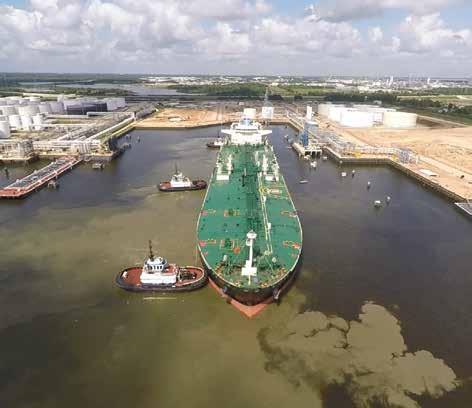
“With increased crude oil production in the Permian Basin and other prolific regions, demand for crude oil storage and export capabilities continues to grow in the Houston Gulf Coast area,” says Michael Mears, Magellan’s CEO. John Grimes, LBC’s group COO, adds: “With the expansion of the Panama Canal and the growing role of the US in increased flows of oil, this is an important development for our project and for the success of our customers.”
Following the expansion, the Seabrook terminal will offer some 490,000 m3 of tankage capacity with two docks for Aframax and Suezmax tankers. There is space available for further expansion of storage capacity up to 870,000 m3, if demand warrants the work.
www.magellanlp.com
HCB MONTHLY | SEPTEMBER 2018 24 STORAGE TERMINALS
GLOBAL GOODIES
MANUFACTURING • GREIF HAS MARKED ONE MILLION DRUMS PRODUCED AT ITS SAUDI PLANT AND ENHANCED ITS OFFERINGS IN ARGENTINA, THE US AND SINGAPORE
GREIF REPORTS THAT it has shipped the one-millionth steel drum produced at its recently opened facility in Jubail, Saudi Arabia. Manufacturing both tighthead and open-top units with or without internal coatings and with gauges ranging from 0.8 mm to 1.2 mm, the Jubail plant, Greif says, can supply drums “using tailor-made solutions that allow automatic loading onto chemical filling lines”. Moreover, as a “specialist supplier to the chemical sector” across Saudi Arabia and other GCC states, the facility “is strategically located in close proximity to major customers, allowing for 24-hour, seven-days-per-week operations and supply, providing potential operational efficiencies for these customers”. “Our team is fully engaged and working every day to provide solutions that improve our customers’ operational efficiency and profitability,” says Europe, Middle East and Africa (EMEA) regional manager Abdennour El Mosor. “Greif strategically located this plant close to key customers to ensure a reliable, quality service that meets or exceeds their expectations. Reaching this significant milestone is key for our business.”

IN-TRANSIT PROTECTION
Sticking with drums, Greif reports that its Latin American operations have now improved the design of the shipping sleeves it employs to protect finished units during transport. “Our plan is to expand the new designs across the region,” says Luciano Levitin, Greif LATAM’s senior sourcing and supply chain director. “This is the result of the hard work of the LATAM sourcing and supply chain team to drive this across the region, providing excellent customer service to our customers.”
Meanwhile, the company has also introduced new branding for the fleet of trucks and trailers it uses to deliver products from its San Juan and Tigre facilities in Argentina. “These new trailers offer customers improved logistical capabilities, including increased load capacity, protecting the products during transport and safe loading and unloading of the trailers,” Levitin notes.
IBCS AND MORE
Further up the packaging mix, Greif has added a new blow moulding machine at its intermediate bulk container (IBC) facility in Alsip, Illinois.
This, the company reveals, will double its current IBC production capacity within the US Midwest. Furthermore, thanks to its use of automated
systems, the new machine “will improve the consistency of the products that are produced, improve the quality of the product and minimise potential contamination”.
“As Greif continues to grow in the IBC marketplace, it is imperative that we are able to meet our customers’ demands for product,” says Gaylord Benner, vice-president and Midwest general manager. “This new blow moulder increases our capacity in the Midwest region and creates the production flexibility to provide our customers with more true value.”
At the other end of the spectrum, Greif Singapore has expanded its plastics jerrycans range with the addition of two new 20-litre and 25-litre models. Boasting “a unique lightweight design for improved handling and transportation”, the new jerrycans are imbued with “an effective anti-glug system [that] provides a consistent, fast and safe flow of product” and are each fitted with a “light yet robust” tamper-evident PlastiCap screwcap closure. “The expansion of [the jerrycan] portfolio will definitely further enhance our leading position in the market as a strategic supplier with the most comprehensive product range,” says Singapore-based key account manager Gezali Rasidi. HCB www.greif.com
STEEL DRUMS 25 WWW.HCBLIVE.COM
KEEP THE FAITH
THE PAST FEW months have seen a number of key management changes at Chicagobased steel drum manufacturer Skolnik Industries, with erstwhile president and CEO Howard Skolnik becoming board chairman and Dean Ricker moving to the post of president. At the same time, Jon Stein, a former business unit manager at Van Leer who most recently served as vice-president of sales and marketing at reconditioning giant Industrial Container Services, has now joined the company as its new sales manager.

However, despite this shuffling of the pack, Skolnik’s commitment to production quality, unit integrity and customer service remains undented. “Skolnik Industries has always positioned itself as the industry leader
in design and innovation,” Ricker says. “To sustain this position, we employ an on-site staff of engineers that work hand-in-hand with our customers, taking conceptual ideas or complicated material requirements and modelling a functional drum design while ensuring requirements are met for UN recommended performance regulations.”
OPEN LINES
“A priority for Skolnik Industries is to keep our reputation beyond reproach by keeping open lines of communication with top management when needed and a staffed customer service department that treats every customer as if they were our only customer,” he continues. “Skolnik Industries is also known by our customers for being very responsive to sales inquiries, with an experienced and engaged sales staff that provides a quick and knowledgeable response.”
Often described as a ‘boutique manufacturer’, Skolnik serves a diverse
range of customers and industries, including “packaging distributors, military suppliers, energy contractors, chemical manufacturers and winemakers”, with a broad array of standard and bespoke carbon and stainless steel designs that range from seamless and crevice-free drums to 7A Type A units for the handling of radioactive materials. This, Ricker says, seems unlikely to change significantly for the foreseeable future.
“Steel drums remain as a strong competitive option in the industrial packaging arena. Steel drums and pails are easy to fill and handle and also offer superior resistance to impact or puncture. Their functionality, combined with their recyclability, make them a workhorse of the dangerous goods community,” he continues, noting that the company will happily refer any customers in need of drum collection or reconditioning services to an appropriate member of the US Reusable Industrial Packaging Association (RIPA).
TRADE TARIFFS
On the whole, Ricker notes, “the market for steel drums has remained steady” of late, aided by “strong economic activity” in the US and abroad. However, there does appear to be one possible cloud forming in the shape of US trade tariffs. “While the ultimate impact of the tariffs remains unseen, we are continuing to see record price increases by the industry and negative impacts to the global supply chain,” he reports.
“The uncertainty of the impact of the tariffs has caused fear within our customers, supply chain issues in global markets and record price increases in raw material costs domestically,” he says. “The tariffs have also created a degree of uncertainty in the market, with some companies delaying expansion plans while awaiting a resolution.”
Nevertheless, Ricker remains upbeat about the future. “Skolnik Industries sees a continued demand for specialised packaging, with drums manufactured in carbon and stainless steel,” he states. “Over the next five years, we see a growing potential for dangerous goods applications of such specialised drums, with features that will support reusability while continuing to ensure safety.” HCB www.skolnik.com
HCB MONTHLY | SEPTEMBER 2018 26
MANUFACTURING • RECENT MANAGEMENT CHANGES HAVE NOT ALERTED SKOLNIK INDUSTRIES’ COMMITMENT TO PRODUCING HIGH QUALITY STEEL DRUMS
SKOLNIK INDUSTRIES PRIDES ITSELF ON ITS ABILITY TO DELIVER HIGH-QUALITY, BESPOKE DRUM DESIGNS
Algeria Greif (+213 414) 737 23
Argentina Greif (+54 11) 4715 1333
Australia Diversipak (+61 2) 9729 1588
Morris McMahon (+61 2) 9597 1988
VIP Packaging* (+61 3) 8326 9319
Austria Huber Packaging Group (+43 7229) 8789 50
Pirlo (+43 5372) 649 230
Belgium Greif (+32 3) 491 0657
Metalfuts (+32 4) 387 4904
Feraxo (+32 51) 46 01 50
Brazil Greif (+55 11) 5694 9700
Mauser do Brasil* (+55 11) 2168 055
Canada Greif (+1 905) 407 9931
Mauser* (+1 985) 624 5632
Chile Greif (+56 2) 351 0320
Rheem Chilena (+56 2) 557 2064
China Greif (+86 21) 539 65505
OMCE China (+86 398) 285 3686
Tianjin Datian (+86 2) 2256 95335
Wuxi Sifang (+86 1396) 186 0902
Colombia Greif (+57 1) 423 2240
Costa Rica Greif (+50 6) 272 4767
Czech Republic Greif (+420 47) 566 8952
STEEL DRUMS 27 WWW.HCBLIVE.COM
● ● ●
● ● ● ● ●
● ● ▲
● ● ▲ ▲
● ● ● ● ● ● ● ▲ ▲
● ● ● ▲
● ● ●
● ● ● ● ● ▲ ▲
● ● ● ● ▲
● ● ● ● ▲
● ● ● ● ● ▲
● ● ● ● ● ● ● ▲
● ● ● ● ●
● ● ▲
● ● ●
● ● ● ● ● ● ● ▲
● ● ● ▲
● ● ● ▲
● ● ● ● ●
● ● ● ● ●
● ● ● ● ●
● ● ●
● ● ● ● ▲ Denmark Greif (+45) 9627 2100 ● ● ● ● ● ● ▲ ▲ Egypt El Fath* (+203 44) 88733 ● ● ● ● Greif (+20 2) 588 1110 ● ● ● ● ● ▲ ▲ Fiji National Can (+679) 362 944 ● ● Finland Huber Packaging (+358 9) 759 591 ● ● ● ● France Avez (+33 3) 2075 6305 ● ● ● Greif (+33 2) 3518 2081 ● ● ● ● ▲ ▲ Huber Packaging (+33 2) 3518 2661 ● ● ● Mauser* (+33 1) 4940 7812 ● ● ● ● ● ● ▲ ▲ Germany Beckmann (+49 2382) 62 051 ● ● ● ▲ Blechwarenfabrik Limburg (+49 6431) 2990 ● ● ● ▲ Duttenhöfer (+49 6324) 5900 ● ● ● ● ● ● ● ▲ Greif (+49 2) 234701 5265 ● ● ● ● ● ● ▲ ▲ Hemeyer Verpackung (+49 5524) 851 13 ● ● ● ● ● ● ▲ Huber Packaging Group (+49 7941) 660 ● ● ● ● ● Kleeman (+49 6188) 7880 ● Key: ● – UN ● - Non UN ▲ – Available * – Drumnet member OUTPUT FROM SOME MAJOR STEEL DRUM PRODUCERS WORLDWIDE Lessthan20 litres 20to25 litres >25and <100 litres 100to <210 litres 210litres(opentop)210litres(tighthead)Above210litresInnerlinersRecyclingnetworkCountry Company
Mauser* (+49 2232) 781360
Muhr & Söhne (+49 2722) 6970
Müller (+49 7623) 9690
Rheinische (+49 221) 597 740
Wilhelm Schmidt (+49 6257) 82051
Schütz (+49 2626) 770
Siepe (+49-2273) 56921
SL Packaging (+49 5221) 994 440
Greece Greif (+30 210) 555 5527
Ferrosteel (+30 210) 2849 330
Guatemala Greif (+502) 633 1561
Hungary Greif (+36 34) 548 218
Huber Packaging Group (+36 96) 550 650
Pacsai (+36 92) 368 102
India Balmer Lawrie (+91 22) 2417 1489
Bharat Barrel & Drum (+91 33) 3292 3119
Mueller Unifab Packaging (+91) 265 264 3369
Pearson Drums & Barrels (+91 33) 2442 0112
Royal Stainless Steel Containers (+91 79) 2289 4731
Sivasakthi Engineering (+91 80) 2839 4980
Time Mauser* (+91 22) 2857 0302
Indonesia Poli Contindo Nusa* (+62 21) 4402 166
Alborz Chelic (+98 21) 2205 1600
Pachmas (+972 4) 625 0202
3F (+39 019) 560007
HCB MONTHLY | SEPTEMBER 2018 28
● ● ● ▲ ▲
● ● ● ● ● ● ● ▲
● ● ● ● ● ● ●
● ● ● ●
● ● ● ● ● ● ● ▲
● ● ●
● ● ● ● ● ● ● ▲
● ● ● ● ● ● ● ▲
● ● ● ● ● ▲
● ●
●
● ● ● ● ● ▲
● ● ●
● ● ● ● ●
● ● ●
● ● ●
● ● ●
● ● ●
● ● ● ● ● ●
● ●
● ● ● ▲
● ● Iran
● ● ● ● ● ● ● Israel
● ● ● ● ● ● ● ▲ ▲ Italy
● ● ● Galdram (+39 02) 9063 1521 ● ● ● ● ● ● ● ▲ ▲ Greif (+39 02) 95124 202 ● ● ● ● ● ▲ ▲ OMCE (+39 071) 791 101 ● ● ● ● ● ● ▲ ▲ Jamaica Greif (+1 876) 757 5205 ● ● ● Japan Daikan Corp (+81 6) 6466 4601 ● ● ● ● ● ● ▲ Japan Pail Corp (+81 6) 6535 1741 ● ● ▲ JFE Container (+81 727) 80 6100 ● ● ▲ Kyowa Yoki (+81 25) 274 0371 ● ● ● ● ▲ Maeda Manufacturing (+81 3) 5246 6301 ● ● ● ▲ Morishma Metal Ind (+81 43) 498 3551 ● ● ● ● ▲ Nagao Seikan (+81 737) 52 2591 ● ● ▲ Nippon Steel & Sumikin Drum Co (+81 3) 3681 7245 ● ● ● ● ● ● ▲ ▲ Key: ● – UN ● - Non UN ▲ – Available * – Drumnet member OUTPUT FROM SOME MAJOR STEEL DRUM PRODUCERS WORLDWIDE Country Company Lessthan20 litres 20to25 litres >25and <100 litres 100to <210 litres 210litres(opentop)210litres(tighthead)Above210litresInnerlinersRecyclingnetwork
Japan cont. Saito Steel Drum Industry (+81 45) 521 3881
Sanyo Steel Drum Industry (+81 86) 465 3680
Sinpo Kogyo (+81 3) 3861 5285
Toho Sheet & Frame (+81 3) 3274 6214
Tokyo Drum Manufacturing (+81 3) 3695 8511
Yamamoto Industries (+81 93) 681 2431
Jordan OMCE Jordan (+962 5) 381 3356
Kazakhstan Greif (+7 8327) 291 0390
Kenya Greif (+254 41) 200 1407
Korea, South Daesei Industrial (+82 2) 562 2800
Insung (+82 2) 2639 6711
Malaysia Greif (+60 12) 220 2255
SMI (+60 6) 351 6521
PGEO (+60 7) 251 4971
Stanta Mauser* (+60 3) 3341 0215
Mexico Greif (+52 777) 329 5954
Schütz Elsa (+52 555) 888 0875
Morocco Greif (+21 22) 2355 970
Imafu (+21 22) 356 991
Mozambique Greif (+258 21) 720 153
Netherlands Greif (+31 294) 238 338
Schütz (+31 168) 334 600
New Zealand National Can (+64 9) 828 7199
VIP Packaging* (+64 9) 820 6610
Nigeria Greif (+234 1) 587 0866
Norway Greif (+47)
Papua
Greif
Poland Greif
Greif
Russia Greif
Huber
Saudi
South
Greif
Greif
STEEL DRUMS 29 WWW.HCBLIVE.COM
● ● ● ● ▲
● ●
● ● ▲
● ● ▲
● ● ● ● ● ▲
● ● ● ● ▲
● ● ● ● ● ● ● ▲
● ● ●
● ● ● ● ●
● ●
● ● ●
● ● ● ● ● ▲
● ● ▲
● ●
● ● ▲
● ● ●
● ● ● ● ●
● ●
● ● ● ● ● ●
● ● ● ●
● ● ● ● ● ● ● ▲ ▲
● ● ●
● ●
● ● ● ● ● ● ● ▲ ▲
● ● ● ●
6932 0036 ● ● ● ● ● ● ▲ ▲
NG National Can (+675) 457 110 ● ● Philippines
(+63 2) 674 1375 ● ● ▲
(+48 32) 429 5040 ● ● ▲ ▲ Beczkopol (+48 56) 466 5002 ● ● ● ● ● ● Portugal
(+351 2) 1953 3000 ● ● ● ● ▲ ▲ Neorelva (+351 256) 460 160 ● ●
(+7 495) 933 5947 ● ● ● ▲
Packaging Group (+7 495) 7218 950 ● Mauser* (+7 495) 730 3573 ● ● ●
Arabia
(+966 1) 499 5849 ● ● ▲ Singapore
(+65) 9818 9653 ● ● ● ● ● ● ▲ Mauser* (+65) 6896 9321 ● ● ▲
Africa Greif (+27 16) 930 1100 ● ● ● ● ● ● ● Rheem* (+27 31) 910 6913 ● ● ● ● ● ● ● OUTPUT FROM SOME MAJOR STEEL DRUM PRODUCERS WORLDWIDE Country Company Lessthan20 litres 20to25 litres >25and <100 litres 100to <210 litres 210litres(opentop)210litres(tighthead)Above210litresInnerlinersRecyclingnetwork
Spain Greif (+34 9377) 66900
IMTO (+34 925) 324 000
Reyde* (+34 93) 478 7600
Schütz (+34 902) 102 856
Sweden Greif (+46 8) 504 41 880
Switzerland Huber Packaging (+41 61) 756 1313
Müller Steel Packagings (+41 61) 416 1202
Taiwan Hua I Industrial (+8868) 755 9161
Lung Hsing (+8867) 696 0196
Thailand Thai Metal Drum* (+66 2) 264 0817
Saeng Thai Metal Drum (+66 2) 235 43339
Tunisia Metalplast (+216 71) 498 648
Sepim* (+216 71) 295 915
Turkey Greif (+90 262) 751 1330
Izvar (+90 216) 680 2080
Mauser* (+90 26) 2655 6060
UAE INTC Steel Drums (+971 4) 880 0139
Greif (+380 67)
Kingdom Briggs
Burton (+44 1283)
(+44 151)
Huber Packaging (+44 151)
G
Drum Company
(+44 141)
1388)
HCB MONTHLY | SEPTEMBER 2018 30 STEEL DRUMS
● ● ● ● ● ● ● ▲ ▲
● ● ● ● ● ● ● ▲ ▲
● ● ● ● ● ● ▲ ▲
● ● ● ▲
● ● ● ● ● ● ▲ ▲
● ● ●
● ● ● ● ● ● ● ▲ ▲
● ● ● ● ●
● ● ● ●
● ● ●
● ● ●
●
●
● ● ● ● ● ● ▲
● ● ● ● ● ● ● ▲ ▲
● ● ● ● ● ● ▲ ▲
● ● ▲ Ukraine
466 2589 ● ● ● United
of
566 661 ● ● ● ● ● ● ● ▲ ▲ Greif
373 2000 ● ● ● ● ● ● ● ▲ ▲
522 2222 ● ● James
Carrick
558 6008 ● ● ● ● ● ● ▲ Metal
(+44
720 391 ● ● ● ● ● ● ● ▲ Ramsden & Whale (+44 121) 557 3656 ● ● ▲ AW Stokes & Son (Drums) (+44 121) 553 1713 ● ● Uruguay Greif (+598 2) 367 7622 ● ● USA ENGY (+1 281) 501 8963 ● ● ▲ General Steel Drum (+1 704) 525 7160 ● ● ▲ ▲ Greif (+1 740) 549 6000 ● ● ● ● ● ● ● ▲ ▲ Mauser* (+1 908) 203 9500 ● ● ● ● ● ● ● ▲ ▲ Meyer Steel Drum (+1 773) 522 3030 ● ● ● ● ● ● ▲ ▲ Myers Container (+1 503) 255 0557 ● ● ● ● ● ▲ ▲ North Coast Container (+1 216) 441 6214 ● ● ▲ ▲ Packaging Specialties (+1 330) 723 6000 ● ● ● ● ● ● ● ▲ ▲ Schütz (+1 908) 526 6161 ● ● Skolnik Industries (+1 773) 735 0700 ● ● ● ● ● ● ● ▲ ▲ Venezuela Greif (+58 24) 5571 3546 ● ● Vietnam Greif (+84 91) 374 3023 ● ● ● ▲ Key: ● – UN ● - Non UN ▲ – Available * – Drumnet member Country Company OUTPUT FROM SOME MAJOR STEEL DRUM PRODUCERS WORLDWIDE Country Company Lessthan20 litres 20to25 litres >25and <100 litres 100to <210 litres 210litres(opentop)210litres(tighthead)Above210litresInnerlinersRecyclingnetwork

www.hcblive.com LIVE • WEEKLY • MONTHLY • SPECIALS THE INFORMATION SOURCE FOR THE INTERNATIONAL DANGEROUS GOODS PROFESSIONAL STAND OUT WITH
NEWS BULLETIN
STEEL DRUMS
MORE TIN AT HUBER
Germany’s Huber Packaging, which operates eight production sites across seven European countries and which commands annual revenues of around €200m, has further expanded its extensive range of UN-approved tin-plate packagings with the addition of a new 30-liter design (above). Intended for the transport and storage of higher density liquids with specific gravities of up to 1.8, the new unit, the company reports, is capable of handling both regulated and non-regulated products thanks to its UN Y1.8 approval.
Serving the needs of customers drawn primarily from the paints, coatings and chemicals sectors, the company’s Industrial division commands what Huber describes as the “widest range of products/UN approvals in Europe”. Indeed, it states, “due to the large number of official approvals, our assortment satisfies virtually all requirements demanded in international transport: on the road and on the rails as per RID/ADR, maritime traffic according to the IMDG Code with UN approvals and for air freight in accordance with IATA regulations”.
“International hazardous material regulations require comprehensive type tests before official
approval is issued by the appropriate authorities,” the company continues. “After the individual approval is issued, the hazardous goods packaging is tested continuously for its reliability using regular official internal and third-party inspections and the results are documented. This ensures that the higher requirements placed on hazardous material packaging are satisfied at all times by every unit.”
In addition to producing cylindrical and rectangular packagings with filling capacities ranging from 250 ml up to 50 litres, the company also manufactures its own range of automatic unit closing machines. These include the TopExpand and FlexoClose systems designed for handling various-sized open-top pails employing clamping rings, of which demonstration videos can be watched online via the Huber website and company YouTube channel.
While Huber anticipates some marginal growth over the coming months borne of wider economic developments, it is also aware that there could be a “downturn in demand” for vehicles, which would have a negative knock-on effect for industrial packagings. That said, the company, which will be exhibiting its wares at the forthcoming FachPack show in Nuremburg
this month, remains confident that the market “will remain stable” over the years to come “due to the advantages metal offers for dangerous goods”, including strength and dexterity, UV stability and ease of reuse/recyclability. www.huberpackaging.com

NEW DRUM LINE AT FERAXO
Belgium-headquartered Feraxo reports that it is currently investing in a second high-speed steel drum production line at its plant in Pittem, near Ghent. Expected to be fully operational by the end of this year, the new drum line, the company says, will “create a 100 per cent internal back-up”, enabling it to guarantee customers complete supply security as it will be “always able to produce” units.
Serving the needs of the European chemical and petrochemical sectors, the company reports that the market is “slightly growing” at the moment, aided in general by the many intrinsic benefits of steel drums. “Steel drums are recyclable, which is also effectively done, [and] are frequently reused,” Feraxo says, stating that while plastics units and composite intermediate bulk containers (IBCs) “are also recyclable”, “this is less frequently the case” in practice, something that it believes leads to “a lot more waste”.
Furthermore, while Feraxo is keen to work with “third parties for reconditioning if requested”, the company’s environmental performance is greatly advanced by the fact it only produces drums finished with water-based coatings. In so doing, it thus reduces its overall emissions while eradicating the creation of smog-causing pollutants from its drummaking processes.
www.feraxo.com
ENGY ENJOYS GROWTH
ENGY Southwest Container Products, which describes itself as “the first new US drum manufacturing organisation in the last 70 years”, reports that while the overall market volume for
HCB MONTHLY | SEPTEMBER 2018 32
steel drums is flat it is nevertheless recording annual growth of around 2 per cent. Primarily serving customers from the chemicals, lubes, paints and adhesives sectors, the company identifies the market as being helped by general “improvements in the economy and balance of trade”, noting that steel drums “are an acceptable package across all product groups where HDPE products will only handle certain ladings”. Exclusively manufacturing high quality tighthead and open top 55-gallon (208-litre) steel drums, ENGY began producing units during the first quarter of 2017. However, the company’s management team together commands more than “120 years of collective drum business experience”. Priding itself on its “products, experienced employees and exceptional customer service” as well as its ability to “exceed industry expectations”, ENGY is “currently working on a number of exciting projects” and partners with third parties “to offer additional services”, such as unit collection and reconditioning, when so requested by customers.
www.engycontainers.com
MYERS FORGES AHEAD
Having recently celebrated its centenary, US-headquartered Myers Container, which also
owns and operates General Steel Drum and reconditioning firm Container Management Services (CMS), has received a Successful Family Business Award from Oregon State University. “We are the largest remaining independent manufacturing and reconditioning business in America, providing our customers with an alternative to the multinational corporations,” says CEO Kyle Stavig Stavig (above, second left, with his brothers)..

“Our customer base has been stable for steel drum demand,” he continues, noting that the company lists the chemicals, petroleum, paints and coatings, foodstuffs and hazardous waste industries among the key markets it serves. And in terms of the market as a whole, Stavig reports that Myers is seeing “strong demand in North America due to the import restrictions imposed by the US government”. However, these very same import restrictions “have also increased steel prices”, leading to concerns that some customers may be tempted to switch to alternative packagings forms “due to steel container costs”.
Looking to the future, though, Stavig remains upbeat: “North America is the lowest energy cost producer in the world so we expect chemical and petroleum production,
which is energy-intensive, to grow, which will spur industrial container demand.”
Moreover, steel drums remain imbued with many important safety features that continue to help them fend off advances from rival systems. “Steel drums with fusible plugs stacked in a proper storage array can safely be stored up to four high in a warehouse,” he states. As such, steel drums “are the workhorse for flammable and combustible materials”, something that looks set to remain unchanged for some time to come.
Meanwhile on the management front, James Bise Jr has been promoted to vice-president of sales, having held numerous key posts during his more than 29 years at Myers/CMS, including account manager, sales manager, technical sales director, lean leader and director of sales. In his new role, Bise will be responsible for commercial strategy, developing a focused team and strengthening relationships with customers, including national accounts.
“Through Jim’s leadership, along with his product knowledge in the manufacturing and reconditioning of industrial packaging and his depth of sales experience, he will lead Myers/ CMS to new heights in customer satisfaction and sales growth,” Stavig states.
www.myerscontainer.com
WWW.HCBLIVE.COM STEEL DRUMS 33
DUMP THOSE DRUMS
EQUIPMENT • FLEXICON HAS ADDED TO ITS EXTENSIVE RANGE OF HANDLING EQUIPMENT WITH THE LAUNCH OF TWO NEW TIPTITE DRUM DUMPERS
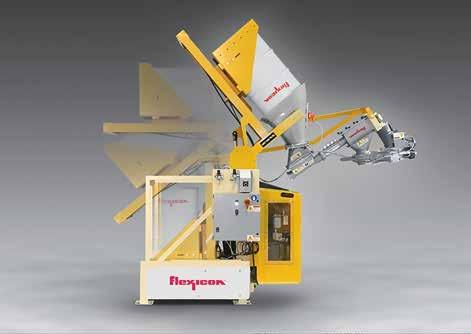
US-HEADQUARTERED FLEXICON has unveiled a new Tip-Tite® drum dumping system that automatically rolls drums containing bulk material into position, dumps the material into downstream equipment and then rolls empty units out of the dumping station. This, it says, allows for the “safe, high-capacity transfer from drums of all popular sizes” weighing up to 340 kg.
“Once full drums are rolled onto the dumping station platform, a hydraulic cylinder raises and seats the drum rim against a discharge hood,” the company continues. “A second hydraulic cylinder then tips the drum to an angle of 45°, 60° or 90° with a motion-dampening feature. At full
rotation, the slide gate opens to allow controlled discharge of material into downstream process equipment.”
After the empty drum is returned to its upright position, the rolling motion is then reversed and the drum is halted in front of a pneumatically actuated pusher that transfers the empty drum to the return conveyor for removal. While this is happening, another full drum rolls into position on the dumping platform ready for the process to repeat again.
“Photoelectric sensors located along the powered roller conveyor relay the position of empty and full drums to the system controller, which actuates the conveyor to advance full and empty drums upon completion of each dumping cycle,” Flexicon reports. Moreover, the system can also be supplied with high-lift configurations for the dumping of drums into elevated receiving equipment and in open-chute and dust-free Tip-Tite designs for the dumping of boxes, bins, pails and other containers.
SCREW CONVEYOR
Flexicon has also developed a new Tip-Tite drum dumper fitted with an integral flexible screw conveyor that allows for the dust-free volumetric feeding of bulk material from drums into downstream processes. “A hydraulic cylinder raises and seats the drum rim against a discharge cone, after which a second hydraulic cylinder tips the drum to an angle of 45º, 60º or 90º with a motion-dampening feature,” it explains. “At full rotation, a pneumatically actuated slide gate valve opens and charges the conveyor, which meters the material volumetrically according to infinitely adjustable user controls.”
“As the flexible screw rotates, it selfcentres within the tube, providing ample clearance between the screw and the tube wall to eliminate or minimise grinding,” the company continues, noting that “the flexible screw is top-driven beyond the point at which the material exits the conveyor, preventing contact with bearings or seals”. Moreover, the conveyor transports bulk materials from sub-micron powders to large pellets, “while the gentle rolling action of material prevents the separation of blends”.
INCREASED RELIABILITY
“The rugged inner screw is the only moving part contacting material, resulting in reduced maintenance and increased reliability,” Flexicon says. “A broad range of screws with specialised geometries is available to handle free- and non-freeflowing materials, including products that pack, cake or smear in other types of conveyors.” Meanwhile, an optional pneumatically actuated vibrator on the discharge cone “promotes complete evacuation of non-free-flowing materials”.
Designed to accommodate drums weighing up to 340 kg and with filling capacities ranging from 114 litres up to 208 litres, the drum dumper is available constructed of carbon steel with durable industrial finishes; with material contact surfaces of stainless steel; or in all-stainless steel finished to food, dairy, pharmaceutical or industrial standards as required. HCB www.flexicon.com
HCB MONTHLY | SEPTEMBER 2018 34
FLEXICON’S LATEST DRUM DUMPING EQUIPMENT OFFERS A COMPLETELY AUTOMATED PROCESS, OBVIATING MANUAL HANDLING
INVESTING IN SELTERS
MANUFACTURING • SCHÜTZ HAS EXPANDED AND AUTOMATED ITS HOME PLANT IN GERMANY AND HAS ALSO OPENED A NEW RECONDITIONING PLANT IN BRAZIL
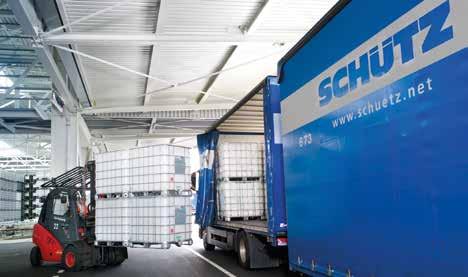
GERMANY’S SCHÜTZ REPORTS that it has fully upgraded its injection moulding facilities at its headquarters in Selters while also investing in a new logistics centre at the site. “In the newly created injection moulding centre, we can now manufacture the full range of plastics components with exceptional efficiency: screw caps in different colours, with and without bungs, for DN150 and DN225 filling openings; ball or butterfly valves, integrated or screwable, with diameters of 50, 80 or even 150 mm, earthed for Ex zones or suitable for camlock couplings,” it states.
“All types of plug systems are made here, with and without aeration or ventilation; sealing caps; seals of different materials; and various adapters for different connection types. Additional capacities were also installed for the production of our plastics pallets.”
“As part of the expansion of our injection moulding capacities, investments were made
in additional fully automatic assembly lines,” it continues. “Individual injection moulded components are assembled fully automatically to produce complete components – with the highest precision and, in the case of the outlet valves, including integrated quality inspection of the finished component. After assembly, the finished components are collected in transport containers with a sequential identification number and transported automatically on conveyor systems to the newly opened high-bay warehouse.”
Boasting 2,400 m2 of floor space, a ceiling height of 20 m and 6,000 storage spaces, this new warehouse facility is fully controlled by an intelligent warehouse management system, with “sophisticated conveyor technology” installed to ensure the smooth and fast flow of materials. “Thanks to these new stateof-the-art systems and advanced control technology,” Schütz states, “accessing
products in our warehouse has become even more efficient. With additional capacities and higher material stocks, we have further increased supply reliability for our customers as part of our global contingency programme and have expanded our backup capacities. As an additional benefit, these optimisation measures also ensure that all components are fully traceable.”
BETTER IN BRAZIL
Further afield, Schütz reports that its Brazilian joint venture, Schütz Vasitex, has opened a new reconditioning plant that “sets new technology standards” within Latin America. “In addition to producing new IBCs, PE drums and jerrycans, the company has an extensive portfolio of logistics, reconditioning and recycling services,” Schütz says. “Now a modern, highly automated plant for [the] cleaning, decontamination and reprocessing of used containers has been added for IBC reconditioning. The new equipment enables [the] highest productivity and efficiency with top-quality reconditioned packaging and a further reduction in the use of natural resources.”
Meanwhile, Schütz Vasitex has received a 2018 Supplier Excellence Award from BASF in Brazil for the Schütz Ticket Service. “In January 2018, CEO Luiz Francisco presented this globally proven Schütz collection system to the jury of the BASF Prize. He highlighted the central points of the scheme, which was launched around three decades ago and has been continuously updated since: comprehensive tracking of all IBCs sent out and individual monitoring of each IBC throughout its entire service life,” Schütz says.
“Services include the continuous followup of all BASF customers with the aim of boosting the number of IBCs returned,” it continues. “Fixed contracts for the return transport of used IBCs are signed with forwarding agents who meet the legal requirements for the transport of hazardous goods. The central aspect is the environmentally friendly recycling of used IBCs and contaminated parts as well as the reuse of metal grids, while at the same time retaining the original UN and INMETRO certificates.” HCB www.schuetz.net
INDUSTRIAL PACKAGING 35 WWW.HCBLIVE.COM
SOHAR, SO GOOD
DEPOTS • JOINT TANK SERVICES HAS ANNOUNCED PLANS TO EXPAND ITS BUSINESS IN THE MIDDLE EAST WITH TWO PROJECTS DESIGNED TO HELP COPE WITH GROWTH IN LOCAL CHEMICAL TRANSPORT
JOIN TANK SERVICES (JTS) is developing a new depot in Sohar, Oman. The 20,000-m2 depot, located in Sohar Port Freezone, will be dedicated to cleaning, storage, repairs and support services for tank containers. The move responds to the recent expansion of Oman’s petrochemical industry and the consequent pressing need for additional tank depot capacity in the sultanate.
“Right now, tanks imported into Oman are being repositioned into Jebel Ali or other nearby locations for cleaning,” says Mr K Pasupathy, general manager of JTS. “Once the new facility is operational, these tanks can be cleaned directly in Oman. Moreover, a considerable amount of money will be saved by companies no longer having to move empty tanks between the UAE and Oman.”
Once the new facility is up and running in Sohar, JTS plans to not only consolidate existing services to the tank container industry but also to expand its portfolio in the future by developing other business services for the chemical industry. This could include areas such as chemical drumming, warehousing and distribution.
“Oman is a growing market, with a lot of petrochemical companies only showing up in the last three to four years,” Pasupathy continues. “The new facility will employ
seven to ten members of staff initially, with plans to increase this number over time. We aim to start construction of the new facility during the third quarter of 2018 and we hope to be operational by the second quarter of 2019.”
MOVING SOUTH
In addition to the new facility in Oman, JTS, formerly headquartered in the Jebel Ali Free Zone North, Dubai, is increasing its involvement in the regional liquid chemicals market with a new division in the Jebel Ali Free Zone South called JTS Chemical Logistics. The new, 28,000-m2 facility will be approximately six times larger than its existing facility in the north, which is located next to the DP World container terminal.
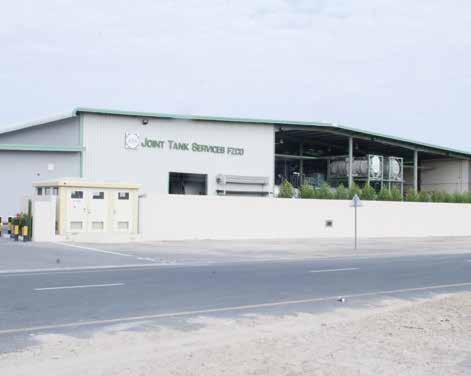
JTS obtained all the necessary approvals from the relevant authorities, allowing construction to begin in May 2018. A trial run of the facility’s operations is proposed for the first quarter of 2019, with operational activities planned for this division to include the storage of full tank containers with dangerous goods of Classes 3, 4.1, 6.1, 8, 9 and non-hazardous chemicals. The depot will also handle the drumming of liquid chemicals from tank containers or road tankers and placing them into IBCs and interim storage as well as cross-stuffing of liquid chemicals from tank to tank or road tanker to tank containers.
Joint Tank Services was established in 1998 in the Jebel Ali Free Zone North and deals with cleaning, repair, testing and storage of empty tank containers containing hazardous and non-hazardous liquid chemicals. The company states that its mission is to provide comprehensive and effective service solutions to the tank container and chemical industry by investing in technology, people and safety.
JTS says it has set a standard in the Middle East by obtaining quality, environment and Occupational Health and Safety Assessment Series (OHSAS) certification. The company’s depot in Dubai is also the only depot in the region to have been audited according to the Safety and Quality Assessment for Sustainability (SQAS) scheme. HCB www.jts.ae
HCB MONTHLY | SEPTEMBER 2018 36 TANKS & LOGISTICS
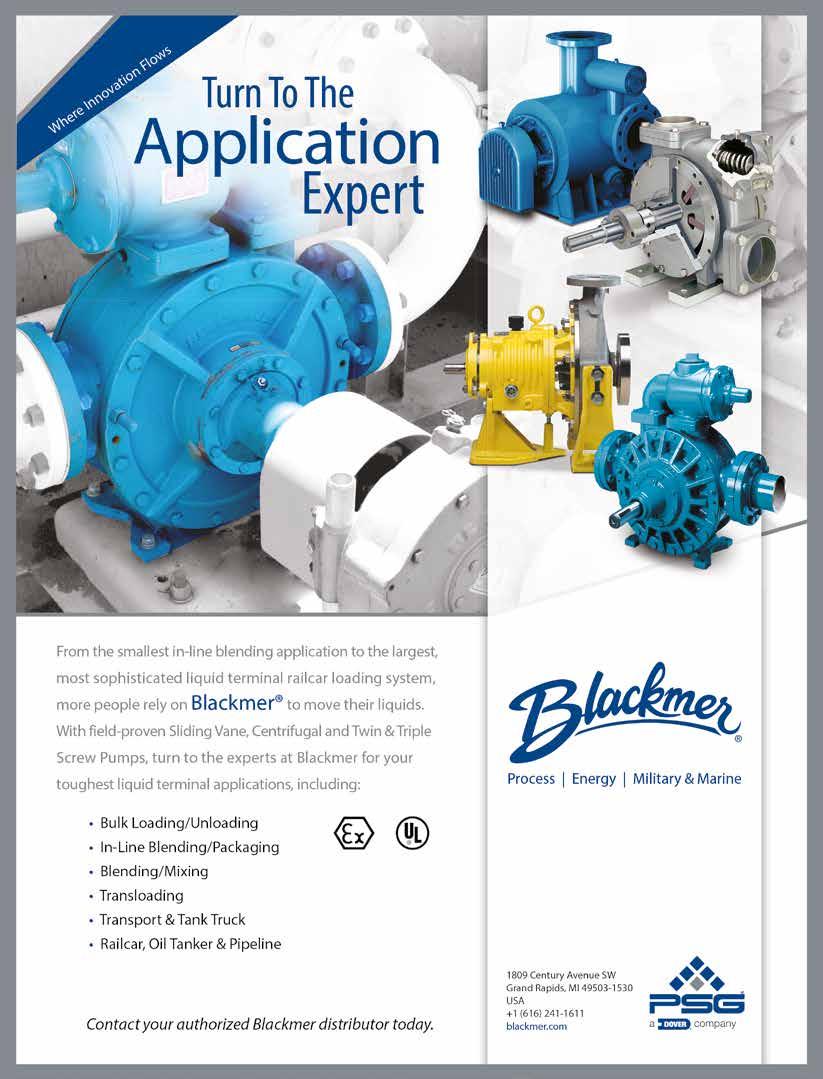
ADBLUE: WHAT’S NEW?
FUEL ADDITIVES • HENK ELLENS, FOUNDER AND CEO OF STORAGE PARTNERS, SPEAKS TO HCB ABOUT THE COMPANY’S WORK IN GROWING THE ADBLUE BUSINESS
HCB: You told us your company is a specialist in urea solution handling in the automotive sector. Could you give us short overview of the company?
HE: Storage Partners was founded back in 2005 to develop and produce dispensing and production equipment for urea solutions such as AUS 32, AdBlue, diesel exhaust fluid (DEF) and Automotive Nitrogen Oxide Liquid Reducing Agent (ARLA 32). Since then we have grown from a regional European company to a world class business leader, active in five continents.
With our highly efficient, new-build production facilities in Poland and our dedicated team, we have managed to build
strong partnerships around the world. Not only do we serve the automotive industry but also the shipping business and power plants. Our products can therefore be found at commercial fuel stations, big multinational chemical production sites as well as in smaller privately owned transport companies or urea-solution traders and urea producers.
HCB: What is Selective Catalytic Reduction (SCR) technology and why is it interesting to our readers?
HE: New worldwide legislation is forcing all diesel-engine driven vehicles to reduce their emissions. The latest SCR technology is offering a solution and is now being used by all main diesel engine producers around the world. SCR technology requires AUS 32 (also called AdBlue/DEF/ARLA 32) or AUS 40 or AUS 50.

These automotive urea solutions are difficult to source and/or very expensive. As
a result, we are now offering a compact ‘plug and play’ production unit, called ProLine, to produce these solutions on-site. As urea solution consists mainly of water, the ProLine unit reduces transportation costs and saves a lot of time in comparison to deliveries over a long distance.
HCB: How easy to use is the ‘plug and play’ functionality of the ProLine unit?
HE: The ProLine unit is designed in such a way that the production process is controlled continuously to guarantee a quality product. Furthermore, the automatic production process can be supervised and steered remotely, only requiring an internet connection. As a result, there’s no need for specially trained staff to be present on-site, which gives a significant cost saving. We also have a team of international staff that personally commission the ProLine unit and train our clients’ staff on-site. This is a part of our standard service and guarantees that our client can effectively use the equipment instantly.
HCB: What types of companies benefit the most from these solutions?
HE: As a global company, we receive requests from all kinds of companies around the world. Commonly, our clients are traders, producers or even users of automotive urea solutions. We create bespoke proposals for each of them as our core business model is to reduce the supply chain costs of urea solutions for the client. It can be difficult to put an exact figure on our clients’ savings, but we aim to achieve between 10 per cent and 30 per cent of their current costs.
HCB: What factors do you think have contributed to your company’s success?
HE: As a family-owned company, we have built a very strong team that is very involved and understands the way we work. Our partners and clients are our best performance indicator so we like it when they reap the benefits from our products. As a result, we have been able to keep the majority of our clients on board since the company’s inception and we hope to create a lot more long-lasting relationships with new clients in the future. HCB www.storage-partners.com/en/
HCB MONTHLY | SEPTEMBER 2018 38 TANKS & LOGISTICS
THE SUPPLY CHAIN FOR DIESEL EXHAUST FLUID IS A SPECIALIST BUSINESS AND REQUIRES A DIFFERENT APPROACH TO TECHNOLOGIES AND LOGISTICS

JOINING FORCES
DIGITISATION • TIM CONSULT AND THE TRANSPOREON GROUP HAVE AGREED A MERGER THAT WILL BENEFIT BOTH BUSINESSES AND THEIR WORLDWIDE CUSTOMER BASE

TIM CONSULT, AN international business logistics consultancy company has agreed a merger with the Transporeon Group. TIM Consult was founded in Germany in 1995 and provides business logistics consultancy, market intelligence and procurement services on a global basis, across all transport modes and industry verticals. The new, combined group will offer customers a global cloudbased platform dedicated to intelligent transport logistics and multi-modal freight procurement solutions.
“Tens of thousands of transport orders are assigned via our cloud-based platforms every
day and around €10bn worth of freight tenders are carried out every year,” says Martin Mack, managing partner of the Transporeon Group. “In these customer relationships, there is an enormous untapped potential. Together with TIM Consult, we can provide our customers with an even more comprehensive and wider portfolio of consulting services and products, whilst further optimising our solutions.”
By adding the portfolio of TIM Consult to the Transporeon Group platform, customers will be able to benefit from new high-quality market intelligence products and consultancy services, as well as faster access to innovative big data applications, Transporeon says.
TIM Consult will benefit from access to the extensive network of the Transporeon, Mercareon and Ticontract platforms, expanding its data-driven business model.
“As a part of Transporeon, we are significantly expanding our reach and gain access to the company’s first-class IT expertise,” adds Björn Klippel, chief executive and founder of TIM Consult. “Through the pooling of our efforts and know-how, we can offer our customers a variety of innovative services and tools worldwide.”
WHAT THEY DO
Following the merger, although TIM Consult will be fully integrated into the Transporeon Group, it will continue to operate as an independent business, retaining its two offices in Mannheim, Germany and New York City. Tim Consult’s separate business units ‘warehousing and intra-logistics’ and ‘waste management’ will also continue to operate independently, pursuing their individual development strategies.
Björn Klippel has become a shareholder of the Transporeon Group and remains managing director of TIM Consult. Oliver Kahrs will also be appointed as an additional managing director, an upward move from his current position as director of strategic initiatives.
Transporeon describes itself as “the worldwide cloud platform for intelligent transport logistics”. It connects a global network of more than 1,000 shippers and trading companies, 65,000 carriers and 100,000 users in more than 100 countries, supporting transparent and cost-efficient movement of goods around the world. This is achieved through the company’s ‘software as a service’ solutions, currently available in 24 languages. Together with TIM Consult, the companies have a combined industry presence of 40 years and the merger will provide each company with invaluable expertise and experience from both sides.
Provision of individual, customised solutions for every customer through the digitisation of the entire transport chain, Transporeon says, improves the performance of logistics providers and can lead to lower costs, optimisation of logistics providers’ margins and reduced carbon dioxide emissions. HCB www.transporeon-group.com www.timconsult.com
HCB MONTHLY | SEPTEMBER 2018 40
THE TRANSPOREON/TIM MERGER WILL BRING
A
WHOLE LOT EXPERTISE UNDER ONE ROOF
NEWS BULLETIN
TANKS & LOGISTICS
EUROTAINER SWALLOWS TML
Ermewa Group has agreed to take over Taylor Minster Leasing (TML), with TML’s tank container fleet and contractual leasing activities moving over to Ermewa’s Eurotainer operation.
TML’s fleet consists of more than 5,000 owned and managed tank containers, consisting of standard and special tanks for liquid products as well as tanks for liquefied and cryogenic gases. It has been a pioneer in the tank container leasing business and has one of the largest owner-managed leasing fleets in the world.
“With this acquisition, Eurotainer will strengthen its global leadership in the leasing of gas and cryogenic tank containers, focusing on its long-established and recognised strategy of providing the largest specialised fleet of equipment worldwide,” says Eurotainer. It currently has around 39,000 tanks on its books. www.eurotainer.com
HOYER GOES ELECTRIC
The Hoyer Group is this year concentrating on expanding its pioneering digital solutions to add value for both itself and its customers. It appointed Lutz Rahn to the post of Head of Digitalisation and Projects in May and he will be responsible for developing a groupwide strategy.
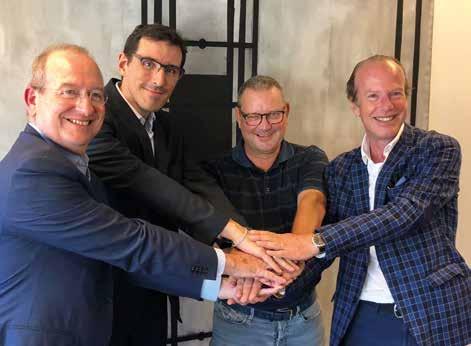
The strategy involves not just process automation, but also constant optimisation to ensure the sustainable handling of resources, the precise forecasting of requirements and efficient international and intermodal route planning. Alongside compliance with the values of the family-led company, transparency, networking and creating synergies are given the highest priority.
“With Lutz Rahn and his team, we are further strengthening our competence in the digitalisation of logistics,” explains Ortwin Nast, CEO of the Hoyer Group. “In the past, Hoyer has developed products that have pushed
through new market standards”, says Rahn. “I see the development and enhancement of pioneering products as the major challenge.” Lutz Rahn was previously CIO at Hermes Europe GmbH and most recently developed strategies on digital transformation for logistics companies on a consultancy basis.
Hoyer has already been pushing networked solutions such as Track & Trace, Vendor Management Inventory, Geofencing, Smart Tank and Supply Chain Solutions. All developments are highly user-friendly: complex connections are presented to customers in concise analyses. For example, Smart Tank sensors report temperature deviations and Track & Trace provides information on journey time deviations. Electronic data handling is also used for delivery notes, certificates and invoicing.
Hoyer also actively supports cross-company initiatives such as KV 4.0, which aims to digitise intermodal supply chains and is funded by the German Federal Ministry of Transport and Digital Infrastructure as part of the mFUND (modernisation funding) initiative.
Hoyer also reports that more than 96 per cent of its trucks operating in Germany are fitted with Euro 6 low-emission engines.
“We have been working on converting our entire fleet to vehicles powered by Euro 6 engines for quite a while, which is proving to be a good decision,” explains Mark Binns, managing director of Petrolog and Group SHEQ at Hoyer. The company is now testing alternative fuels, such as LNG, as it seeks to evade growing pressure for restrictions on diesel-powered vehicles in major conurbations. www.hoyer-group.com
ALBATROSS TANKS ONLINE
Albatross Tank-Leasing has introduced a new service, Albatross Fleet Specs, that provides its customers with 24/7 access to tank container documentation. The database currently holds documentation on tank specification, GA
WWW.HCBLIVE.COM TANKS & LOGISTICS 41
drawing and initial construction certificate for each tank; it will be updated with test certificates after each test.
“Albatross Tank-Leasing is continuously upgrading its service structure to support the growth of its tank container fleet, enabling regional and global customers easy access to operational information which will promote the efficient management of equipment leased from Albatross,” says the company. www.albatross-tanks.de
VTG IN DEMAND
Warwick Holding GmbH has made a voluntary offer to acquire all outstanding shares in VTG AG at a price of €53 per share. Warwick Holding, an indirect subsidiary of funds advised by Morgan Stanley Infrastructure Inc, currently owns approximately 29 per cent of VTG shares and it has received a commitment from Kühne Holding AG, which owns some 20 per cent, to sell its holding.
The deal is subject to the usual closing conditions and to the closing of the previously announced acquisition of Nacco, due to be completed in the second half of this year. Another condition of the offer is that VTG will have no business relationships with parties sanctioned by the US Office for Foreign Assets Control.
VTG, however, does not regard the offer as reflecting the full value of the company. Dr Heiko Fischer, CEO of VTG AG, says, “We
are always open for constructive discussions with the Bidder. As soon as we have received the offer document, we will examine in detail whether it is in the interest of the Company, our employees and shareholders. From today’s perspective of the Executive Board, the announced offer price of €53 does not adequately reflect the potential of the company and is therefore not appropriate.” www.vtg.com
SUTTONS WINS BIG
The Suttons Group is investing more than £6m this year in new cabs for its road haulage fleet in the UK. Suttons is buying around 70 FM Volvo Globetrotter XL cabs as part of an ongoing replacement strategy; the latest units have extra-large cabs with better audio and a fridge and will also feature the new corporate livery, which will be rolled out to the entire fleet over the next five years (below).
“We are the UK’s largest bulk chemical logistics company and are continuing to grow with a number of key business wins. It’s therefore vital that we invest in the latest equipment and technology,” says CEO John Sutton. “The £6m investment is part of our 5-year strategy for growth and the modernisation of our business. As part of this, we have refreshed our brand to represent our focus on advanced technology, excellent customer service and our continued focus on safety.”
Suttons Tankers, meanwhile, has won a new contract with Yara UK involving the transport of liquid fertilisers in seven Yara-liveried tankers. The contract covers the movement of fertilisers from ports in the north-east and south-east of England to storage depots in Yorkshire and Suffolk.

“As experts in bulk liquid and chemical transportation this is a significant contract for our tanker division, allowing the company to diversify into another new market,” says Michael Cundy, Suttons Tankers’ managing director.
Suttons Tankers’ Scunthorpe depot has been awarded a 2018 Roadworthiness Award by the Freight Transport Association (FTA). The award recognises the site’s excellence in vehicle and trailer fleet maintenance and control of safety related defects. ‘This award reflects the very high benchmark set by Sutton’s Tankers and I would like to congratulate everyone involved in the efforts that are obviously being made to ensure the fleet is safe, legal and efficient at all times,” said Eric Higham, FTA’s senior contract manager, announcing the award. Steve Hassall, regional director for Suttons Tankers, added: “We are incredibly proud of the high standards we maintain throughout our fleet and our track record of providing a flexible, reliable, and safe service. Our team makes an exceptional contribution to maintain our excellent safety record and this award is testament to that.” www.suttonsgroup.com
HCB MONTHLY | SEPTEMBER 2018 42 TANKS & LOGISTICS
THE HAMBURG-HEADQUARTERED
Biesterfeld Group reports that in 2017 and “based solely on organic growth”, its total corporate sales rose to €1.2bn while its operating result hit €51.2m. This compares to respective prior-year figures of €1.1bn and €46.1m. “As a result of this positive development, Biesterfeld can look back on another record-setting year, consolidating its position as one of the world’s leading chemical and plastics distributors,” the company says, noting that “the family-owned business generated its growth largely in European markets, with its home market of Germany being particularly worthy of mention”.
Commenting on the results, CEO Thomas Arnold states: “2017 was once again a very
successful business year for us. We have our outstanding employees to thank for that, who have used their knowhow, commitment and rich set of ideas to make Biesterfeld what it is today: an internationally successful and highly specialised family-owned company. All 800 employees are following the strategic approach of ‘One Biesterfeld’ to achieve successful long-term business development.”
GROWTH ACROSS THE BOARD
Breaking the results down, the company reveals that its four business divisionsBiesterfeld Spezialchemie, Biesterfeld Plastic, Biesterfeld Performance Rubber and Biesterfeld International - all contributed to the upward trend. “Both the expansion of Biesterfeld Plastic’s market shares in Europe and Latin America and Biesterfeld International’s ongoing development of international trading activities strengthened the company’s consistent record of growth,” it states.
Biesterfeld Spezialchemie, meanwhile, “which is focused on technically demanding and consultation-intensive solutions”, grew its business in its 13 core sectors and expanded its highly specialised product and service portfolio. As for Biesterfeld Performance

Rubber, the company’s newest business division enjoyed “a successful start to its sales activities in Brazil and was able to expand its European product portfolio”.
Regarding the current year, the company says that the first quarter of 2018 proved to be similarly successful, making the corporate group optimistic that it will be able to “continue its success story of [recent] years, despite persistent geopolitical and industry-specific challenges”. Biesterfeld, it notes, “remains focused on its areas of specialisation and on expanding its portfolio of products and services accordingly”. As a result of this and its long-term partnerships with suppliers and customers, the distributor is confident that it will “continue to operate with expertise, reliability and success on the international chemical distribution market”.
NEW CONTRACT SIGNED
Indeed, on the contracts front, Biesterfeld Spezialchemie has signed an agreement with US-headquartered Sandream Impact to distribute pigments to cosmeticssector customers within Germany, Austria, Switzerland, eastern Europe and Turkey. “Colour cosmetics has become one of the fastest growing segments in the personal care industry, with a high rate of innovation,” says Bettina Heick, Biesterfeld Spezialchemie’s personal care market manager. “We have a strong colour cosmetics expertise at Biesterfeld and we are more than pleased that we can now also offer the Sandream Impact effect pigments to our customers. With Sandream Impact we have found the perfect fit for our existing portfolio and we are now in the position to offer a one-stop shop to all our colour cosmetic customers.”
“With their strong presence in the assigned territory and their great spirit and knowledge, we are convinced that Biesterfeld is the right partner to represent our portfolio on the European market,” adds Todd Ahern, Sandream’s vice-president of sales and marketing. “We have a common understanding of how to optimally serve customers and we are very excited to start our cooperation with Biesterfeld.” HCB www.biesterfeld.com
CHEMICAL DISTRIBUTION 43 WWW.HCBLIVE.COM
THAT WAS THE YEAR THAT WAS RESULTS • GERMANY’S BIESTERFELD REPORTS A “VERY SUCCESSFUL” 2017 AND IS LOOKING FORWARD TO FURTHER GROWTH THIS YEAR, SIGNING A NEW DEAL WITH SANDREAM IMPACT
TRUST BODO
CERTIFICATION • THE BODO MÖLLER CHEMIE GROUP IS TAKING A LEAD ON ANTI-CORRUPTION MEASURES, ADOPTING THE NEW ISO 37001 STANDARD AROUND THE WORLD
GERMANY’S BODO MÖLLER Chemie reports that it has become “one of the few companies in the world” to achieve ISO 37001 anti-bribery certification. Offering “clear guidelines for combating corruption and white-collar crime”, ISO 37001, it says, “is the first supranational standard for setting up an anti-bribery management system and operating it on an ongoing basis”. Moreover, “the supranational and cross-sector policy provides instruments for preventing and uncovering potential corruption, as well as corresponding procedures for dealing with suspected corruption”.
Describing itself as “a leading applications expert and a supplier of speciality chemicals and high-performance adhesives, as well as other epoxy-resin-based products”, Bodo operates a growing network of locations across its native Europe as well as Africa, Asia and the Americas. Thus, while its new certification is valid for its German headquarters in Offenbach am Main, the company notes that “its subsidiaries throughout the world will likewise adapt their working practices to comply with ISO 37001”.

CLEAR GUIDELINES
“Even countries where the risk of corruption is high, such as Brazil, Iraq, China, Cameroon and India, agreed to [this new] ISO standard,” the company continues, adding that when working with ISO 37001-certified partners, “global operators will benefit from clear guidelines for preventing unethical business practices”. But there’s arguably more to it than that.
“Trust is a key element in the chemicals sector. This ISO standard is a global
standard that reflects our understanding of permissible management practices,” says Bodo CEO Frank Haug. “Over the last few years, our corporate group has expanded to include numerous international subsidiaries. In addition to the long-standing working relationship with our many customers and partners, we also want to establish common standards, such as ISO 37001, as a basis for a trusting business relationship.”
KENYAN HUB
And on the subject of expansion, Bodo has now widened its global reach with the opening of a new office in Nairobi, Kenya. Previously, the company had served customers in the sub-Saharan region via two offices in South Africa that it established in 2011. However, due to growing demand, the
company has now broadened its regional footprint “to intensify existing business” and better meet the needs of the market. “We are happy about this step,” Haug says. “Our presence enables us to effectively serve customers in Kenya and neighbouring countries. Kenya is the hub for East Africa. With [our] own office in Nairobi, we will be present in a very dynamic part of Africa.”
Headed by Philip Kamau, the new Kenyan location will offer customers from the automotive, coatings, textiles and construction sectors specialty adhesives, epoxy resins, additives and pigments sourced from such principals as Huntsman Advanced Materials, Huntsman Textile Effects and DowDuPont. “We are delighted that Mr Kamau is representing Bodo Möller Chemie in Kenya,” says Mark Hepburn, Bodo’s managing director in South Africa. “It is an exciting role as part of the Sub-Saharan team, which has already made a name for itself for expert and solution-focused distribution”.
In addition to its sub-Saharan activities, Bodo’s operations on the continent also include offices in Morocco and Egypt, from which it services customers across the Maghreb. The opening of the new office in Kenya, it says, is therefore “an important milestone in the company’s geographic expansion in Africa”. HCB www.bm-chemie.com
HCB MONTHLY | SEPTEMBER 2018 44
SEAL THAT DEAL
“The opportunity to expand our successful relationship with Huntsman Corporation is a significant event for Maroon,” says Dan Canavan III, Maroon’s vice-president of principal management, coatings, adhesives, sealants and elastomers (CASE). “Our partnership with Huntsman spans more than three decades of success through our DB Becker business, which has been recognised repeatedly as their Distributor of the Year. We look forward to delivering the same level of success with our Midwestern sales teams in our newly expanded region.”
EXTENDED COVERAGE
The news comes shortly after DB Becker was selected by Chromaflo Technologies to distribute colourants and chemical dispersions across an expanded 21-state territory encompassing the Gulf Coast, New England, Mid-Atlantic and Southeast regions.

“We are excited to extend our coverage with Chromaflo as a principal in this expanded territory,” says Eric Post, Maroon’s vicepresident, principal management, CASE.
“This further strengthens and complements our product and service offering to the paints and coatings markets.”
by Howard Hubert, president of the Maroon CASE and plastics verticals. This, Maroon says, “is the culmination of a long-term transition plan” that has seen both Canavan and Hubert working closely together to facilitate a smooth handover.
“On behalf of our entire organisation, I would like to thank Dan for his tireless leadership and visionary approach as he led DB Becker through decades of sustained growth,” says Maroon president and CEO Mark E Reichard. “Dan has had a remarkable career, focused on service to our customers and suppliers and developing the next generation of leaders. He built the foundation for the numerous opportunities that lie ahead.”
THE US-HEADQUARTERED Maroon Group has been chosen by Huntsman’s Polyurethanes Division to distribute isocyanates, prepolymers and polyols across Ohio, Michigan, Southern Illinois, Southern Indiana and Kentucky. This newly added territory, the company say, “will align with the current representation, from Maine to Miami,” that at present is the remit of Maroon-owned DB Becker.
“Maroon Group is well-respected in the industries we serve and has been Chromaflo’s distributor in the 13 Mid-Western US states since 2013,” says Elizabeth Campbell, Chromaflo’s business director coatings, Americas. “I am confident their industry knowledge and strong customer relationships through Maroon Group’s DB Becker Company will strengthen and enhance Chromaflo Technologies’ product availability, service and support in the eastern US. The goal is to make the transition to Maroon Group as easy and effortless as possible for our customers in the eastern US. Our plan for a concerted effort between all parties will ensure a seamless transition.”
CHANGE AT THE TOP
Meanwhile on the management front, Maroon has announced that Dan T Canavan, Sr is to retire from his post as president of DB Becker, which he purchased in 1990 and which he subsequently sold to Maroon in 2015. Canavan will be succeeded at the helm

At the same time, Rhanisha Tillman-Hill has been named as DB Becker’s new northeast regional account manager. She will support the company’s CASE business in the Tri-State Area of Connecticut, New Jersey and New York. “Rhanisha comes to us with a wealth of coating formulation experience that will provide immense value to our customers and suppliers as we strive to offer best-in-class technical sales to the markets we serve,” says Bill Nicholas, DB Becker’s vice-president of sales, eastern region.
“We’re very excited to have her on board and look forward to the great things she will do as part of Maroon Group.” HCB www.maroongroupllc.com
CHEMICAL DISTRIBUTION 45 WWW.HCBLIVE.COM
CONTRACTS • THE MAROON GROUP HAS ANNOUNCED SOME NEW DISTRIBUTION DEALS AND A CHANGE OF MANAGEMENT AT ITS DB BECKER UNIT
ABOVE: DAN CANAVAN III; RIGHT: NEW DB BECKER PRESIDENT HOWARD HUBERT
NEWS BULLETIN
CHEMICAL DISTRIBUTION
AZELIS BUYS INTO IRELAND

Azelis has strengthened its presence in Ireland through the acquisition of Dublin-based P-K Chemicals. While Azelis notes that a large part of P-K’s business activity is linked to the food segment, the acquired company also distributes speciality chemicals to customers within the pharmaceuticals, healthcare, coatings, adhesives, sealants and elastomers (CASE) and other non-food manufacturing sectors. The deal, which is expected to close within the next three months, thus enables Azelis “to cover the market through [a] strong local presence both in life sciences and industrial chemicals” while illustrating “the support provided by funds advised by Apax Partners since the initial acquisition of Azelis” announced this past June.
“With the acquisition of P-K, we establish a strong physical footprint in Ireland,” says Azelis EMEA CEO Anna Bertona. “There is an excellent strategic fit and we are excited by the opportunity we now have for further growth in this market. P-K will provide us with an improved product offering and customer reach with a potential to cross-sell.”
“Joining such a well-established global player as Azelis will enable us not only to continue to
deliver high quality products and service to our customers, but also to access new growth opportunities,” adds P-K general manager Graeme Locke, who will now become managing director of Azelis Ireland.
“Our business will benefit from the speciality chemicals focus of Azelis and their immense technical knowledge, including access to food labs.”
Meanwhile, on the other side of the Atlantic, Azelis Americas has expanded its exclusive distribution partnership with Lonza Consumer Product Ingredients to include the sale of hygiene and preservation products to customers within Arizona, California, Idaho, Montana, Nevada, New Mexico, Oregon, Utah, Washington and Wyoming. “Our longstanding relationship with Lonza continues to grow stronger with this opportunity to expand our geographic footprint, offering our customers on the West Coast access to the leading hygiene brands, technology and regulatory expertise that Lonza has in this field,” says Tim Dooling, Azelis Americas’ managing director, personal care and home care and industrial cleaning.
The news comes shortly after Azelis extended its personal care distribution
agreement with Lonza to include the UK, Ireland and Italy. This particular deal builds upon existing agreements between the two companies covering the homecare, CASE and personal care sectors that, among other things, sees Azelis distributing Lonza personal care products throughout Austria, the Benelux countries, Germany, Scandinavia, Russia, Switzerland and Turkey. “Lonza and Azelis have a longstanding relationship which combines Lonza’s ingredient expertise with Azelis’ unique knowledge of personal care markets to offer our customers the best possible solutions for today and creativity for tomorrow,” says Tony Craske, Azelis’ market segment director, personal care, EMEA. www.azelis.com
IMCD CLOSES HORN DEAL
Netherlands-headquartered IMCD has completed its acquisition of ET Horn, which it describes as “an excellent fit” with its US activities. “Horn was established in 1961 and is a leading specialty chemicals distributor in the US with a focus on coatings, construction, plastics, personal care, human food and nutrition, animal nutrition, nutraceuticals and other specialties,” IMCD continues.
Headquartered in La Mirada, California, Horn “represents leading suppliers and is primarily focused on the west and south-west regions of the US”. Employing a staff of around 200, Horn last year closed its books with revenues worth $276m and a normalised EBITDA of $12m. www.imcdgroup.com
HELM SEALS PROPYLENE DEAL
Hamburg-headquartered Helm has announced that from the start of January it will market “a major share” of propylene produced by the PCK Schwedt, MiRO Karlsruhe and Bayernoil Vohburg refineries in Germany. Propylene, the company notes, is used by the chemical industry to produce a variety of products,
HCB MONTHLY | SEPTEMBER 2018 46
including polypropylene, oxo-alcohols and acrylic acid. “I am very pleased with this collaboration,” says Fried Hansen, Helm’s executive manager, feedstocks. “Thanks to our extensive network of customers and suppliers, as well as our highly efficient logistics, we are able to off-take and market propylene reliably.”

“We look forward to the cooperation with Helm in our marketing and sales business,” adds Brian Chesterman, managing director of Rosneft Deutschland, which holds a significant shareholding in all three refineries. “Arranging [the] distribution of petrochemical products from [the] PCK, Bayernoil and MiRO refineries is another step in the development of the company’s business activities in Germany.”
In other news, Helm reports that it has now relocated its US operations, moving from its long-time home in New Jersey to new premises in Houston (below). “The relocation will enable Helm to maintain closer contact with our core business partners and therefore allow us to further promote Helm’s unique business model of product-focused, longterm-oriented and sustainable value creation for industrial producers and consumers – right in the heart of the US chemical industry,” says Phillipp Mangold, president of Helm US Corp. “Additionally, this move is necessitated by the significant growth the company is about to realise over the next few years, amongst other factors driven by two new exclusive marketing agreements in ethylene glycols and bio ethyl acetate.” www.helmag.com
OQEMA BUYS WHYTE
Germany’s OQEMA, which previously traded as Overlack, has acquired the business and assets of UK-based Whyte Chemicals. The deal, which saves 44 jobs, follows the appointment of Quantuma as Whyte’s administrators after it was forced to restructure its credit facilities earlier this year. Based in north London and Denaby, South Yorkshire (above), Whyte, Quantuma says, “was one of the largest privately owned distributors of chemicals in the UK, with an annual turnover in the region of £70m”.
“We are delighted to welcome a strong force in the UK chemical distribution industry into the OQEMA family. This deal will bring to an end the recent uncertainty regarding the future of Whyte Chemicals,” says Robert Moss, managing director of OQEMA’s UK operations. “Whyte Chemicals has been a driving force in the UK chemical industry for 40 years and we are excited about the possibilities that lie ahead of us all.”
All employees will transfer to the new company OQEMA Whyte Ltd. www.oqema.com www.quantuma.com
CHARKIT ACQUIRES CHAYSECHEM
US-based Charkit, a subsidiary of LBB Specialties, has acquired the assets of ChayseChem, a North American distributor of fine chemicals, custom-manufactured intermediates and active pharmaceutical
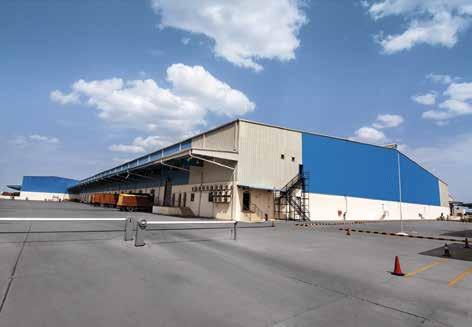
ingredients (APIs). “This acquisition, along with new supplier relationships, is further evidence of how our expansion forms the cornerstone of the LBB Specialties growth strategy,” says Charles Hinnant, who serves as both Charkit president and LBB CEO and president. “We are looking for companies that would fall into the ‘tuck-in’ category (up to $50m), as well as larger businesses in the range of $100m, which would become platform companies along with Charkit and [sister firm] AIC.” www.charkit.com
BASF PICKS CHEMROY
Ontario-based Chemroy has signed an agreement with BASF for the distribution of antioxidants, base stocks, surfactants and additives across Canada. The new deal, BASF says, “supports customers participating in the lubricants and metalworking market” and, among other things, will cover such BASF product brands as Irganox®, Irgacor®, Irgalube®, Irgaflo®, Synative®, Plurasafe® and Breox®.
“Chemroy’s industry expertise, agility and adaptability to meeting individual customers’ needs makes them the right distributor for our lubricant additives and metal working products in Canada,” says Eric Escobar, BASF’s director of corporate distribution. www.chemroy.com
WWW.HCBLIVE.COM CHEMICAL DISTRIBUTION 47
TRAINING COURSES
AIRSAFE TRANSPORT TRAINING PO Box 347
Cloverdale, WA 6985, Australia
T (+61 8) 9277 6968 www.airsafe.com.au
Dangerous Goods by Air –Acceptance
• October 1-3 – Perth
• October 8-19 – Darwin
• October 17-19 – Sydney
• October 24-26 – Brisbane
• November 13-15 – Perth
Dangerous Goods by Air –Refresher
• September 26 – Perth
• October 11 – Darwin
• October 16 – Sydney
• October 17 – Perth
• October 23 – Brisbane
• October 31 – Perth
• November 8 – Perth
AMSA Full Acceptance
• October 4-5 – Perth
• October 12 – Darwin
• October 15 – Sydney
• October 22 – Brisbane
AMSA Full Acceptance –Refresher
• October 16 – Perth
Dangerous Goods by Road
• November 7 – Perth
AUSTRALIAN FEDERATION OF INTERNATIONAL FORWARDERS
Westfield Office Tower, Suite 403, Level 3, 152 Bunnerong Road Eastgardens, NSW 2036 Australia
T (+61 2) 9314 3055 www.afif.asn.au
Dangerous Goods Acceptance (Air)
• October 9-11 – Sydney
• October 16-18 – Melbourne
• November 13-15 – Sydney
Dangerous Goods Re-certification (Air)
• October 8 – Brisbane
• October 8 – Sydney
• October 15 – Melbourne
• November 12 – Sydney
Dangerous Goods Awareness (Air)
• October 25 – Melbourne
Dangerous Goods by Sea – Full Acceptance
• September 25-26 – Sydney
• October 23-24 – Brisbane
BRITISH INTERNATIONAL
FREIGHT ASSOCIATION (BIFA)
Redfern House, Browells Lane Feltham, Middlesex TW13 7EP, UK
T (+44 20) 8844 3625
www.bifa.org
Dangerous Goods by Air
• September 24-26 – Leeds/ Bradford
• October 1-3 – Coventry
• October 1-3 – Feltham
• October 8-10 – Bristol
• October 15-17 – Newcastle
• October 29-31 – Feltham
• November 12-14 – Altrincham
Dangerous Goods by Air –Revalidation
• September 20-21 – Glasgow
• September 27-28 – Leeds/ Bradford
• October 4-5 – Coventry
• October 4-5 – Feltham
• October 11-13 – Bristol
• October 16-17 – Newcastle
• November 1-2 – Feltham
• November 15-16 – Altrincham
Infectious Substances by Air
• November 13-14 – Watford
Dangerous Goods by Road
• October 15-17 – Feltham
• October 29-31 – Coventry
• November 5-7 – Altrincham
Dangerous Goods by Sea
• October 18-19 – Feltham
• October 18-19 – Glasgow
• November 1-2 – Coventry
• November 8-9 – Altrincham
Dangerous Goods Safety Advisor
• November 12-16 – Feltham
• November 12-16 – Manchester
BY PASS DRIVER TRAINING
Unit 2B Deer Park Industrial Estate
Knowle Lane, Fair Oak, Eastleigh Hampshire, S050 7PZ, UK T (+44 23) 8069 5956 by-pass.co.uk
ADR Initial
• October 2-6 – Eastleigh
• November 6-10 – Eastleigh ADR Refresher
• October 2-4 – Eastleigh
• November 6-8 – Eastleigh
CAMEON PO Box 17345 Edinburgh EH12 1DJ, UK T (+44 131) 334 1929 www.cameon.com
Dangerous Goods Safety Adviser (DGSA)
• November 12-16 – Manchester Dangerous Goods by Air
• October 8-10 – Manchester
Dangerous Goods by Air –Revalidation
• September 21 – Manchester Dangerous Goods by Road and Sea
• September 18-20 –Manchester Dangerous Goods by Road –Upgrade
• October 11 – Manchester Dangerous Goods by Sea –Upgrade
• October 12 – Manchester
CHEM FREIGHT HONG KONG Suite 907, Silvercord Tower 2 30 Canton Road, Tsim Sha Tsui Kowloon, Hong Kong T (+852) 2961 4887 www.chemfreight.com.hk
IATA Basic DG Regulations
• September 17-21 – Kowloon
• October 22-26 – Kowloon
• November 12-16 – Kowloon
IATA Refresher DG Regulations
• September 26-28 – Kowloon
• October 8-10 – Kowloon
• November 5-7 – Kowloon
IATA Dangerous Goods Awareness
• September 24 – Kowloon
• October 15 – Kowloon
• October 29 – Kowloon
• November 8 – Kowloon
CHEMICAL HAZARDS COMMUNICATION SOCIETY
PO Box 899 Oxford OX1 9QG, UK T (+44 333) 210 2427 www.chcs.org.uk
Essentials of Regulatory Chemistry
• October 3 – London
EU Classification for Supply –Substances
• October 30 – London
EU Classification for Supply –Mixtures
• October 31 – London
EU Labelling for Supply
• October 31 – London
Introduction to Basic SDS Writing
• September 26 – London
Advanced preparation of SDSs
• November 6 – London
COMMERCIAL OPERATOR TRAINING SOLUTIONS Unit 6, Queensway Swansea West Business Park Swansea SA5 4DH, UK T (+44 1792) 587250 www.cotsolutions.co.uk
ADR All Classes and Tanks
• September 24-28 – Swansea
• October 22-26 – Swansea
DG AIR FREIGHT PO Box 140 Botany, NSW 1455, Australia T (+61 8) 8234 1622 http://dgair.com.au
DG by Air – Initial
• October 8-10 – Sydney
• October 15-17 – Melbourne
• October 22-24 – Brisbane
• October 29-31 – Adelaide DG by Air – Refresher
DG by Sea – Initial
• October 11-12 – Sydney
• October 18-19 – Melbourne
• October 25-26 – Brisbane
• November 1-2 – Adelaide
DGI TRAINING CENTER
1060 El Camino Real, Suite B Redwood City, CA 94063-1645, USA T (+1 650) 306 8450 www.dgitraining.com
HCB MONTHLY | SEPTEMBER 2018 48
IATA Initial
• October 30-31 – Los Angeles
• November 6-7 – Atlanta
• November 13-14 – Chicago
• November 13-14 – New York
• November 13-14 – Seattle
IATA Recurrent
• September 24 – Philadelphia
• October 29 – Dallas
• October 29 – Los Angeles
• November 5 – Atlanta
• November 12 – Chicago
• November 12 – New York
• November 12 – Seattle
• November 28 – Las Vegas
IMDG Recurrent
• September 26 – Philadelphia
• October 31 – Dallas
Ground Transportation (49 CFR)
Initial
• October 1-2 – Philadelphia
• October 22-23 – San Francisco
• November 5-6 – Dallas
Ground Transportation (49 CFR)
Recurrent
• September 25 – Philadelphia
• October 30 – Dallas
Multimodal Initial (49 CFR/IATA/IMDG)
• October 1-5 – Philadelphia
• October 22-26 – San Francisco
• November 5-9 – Dallas
Radioactive Materials (Multimodal)
• September 27-28 –Philadelphia
DGM TRAINING INSTITUTE
1813 Greens Road Houston, TX 77032, USA
T (+1 281) 821 0500
www.dgm-usa.com
IATA/ICAO Dangerous Goods by Air – Initial
• October 8-10 – Atlanta
• October 8-10 – Houston
• October 15-17 – Miami
• November 5-7 – Atlanta
• November 12-14 – Dallas
IATA/ICAO Dangerous Goods by Air – Recurrent
• October 9-10 – Atlanta
• October 11-12 – Houston
• November 6-7 – Atlanta Dangerous Goods by Air, including Radioactives
• November 5-8 – Houston
IMDG Code - Initial
• October 22-23 – Atlanta
• October 29-30 – Houston 49 CFR Dangerous Goods by
Road – Initial
• October 2-3 – Houston
Multi-Modal (Air, Road and Sea)
– Initial
• October 22-25 – Houston
Transporting Radioactives
• November 8 – Houston
Transporting Batteries
• October 4 – Houston
FREIGHT TRANSPORT ASSOCIATION
Hermes House, St John’s Road
Tunbridge Wells TN4 9UZ, UK T (+44 1892) 526171 www.fta.co.uk
Dangerous Goods Safety Adviser
• October 22-26 – Tunbridge Wells
ADR – Initial
• September 24-28 –
Leamington Spa
• October 8-12 – Tunbridge Wells
• October 22-26 – Stirling
ADR – Refresher
• October 9-11 – Leamington Spa
Dangerous Goods Awareness
• October 18 – Tunbridge Wells
GULF CENTRE FOR AVIATION STUDIES (GCAS)
PO Box 94449
Abu Dhabi, UAE T (+971 2) 494 2355 www.gcas.ae
IATA DGR - Category 6 – Initial
• September 16-23 – Abu Dhabi
• October 7-14 – Abu Dhabi
• November 4-11 – Abu Dhabi
IATA DGR - Category 6 –
Recurrent
• October 22-25 – Abu Dhabi
INTERNATIONAL AIR TRANSPORT ASSOCIATION
800 Place Victoria, PO Box 113 Montreal H4Z 1M1 Quebec, Canada. T (+1 514) 874 0202 www.iata.org/training
Dangerous Goods Regulations (DGR) – Shippers and Packers –Cat 1 and 2
• September 26-28 – Montreal
Dangerous Goods Regulations (DGR) – Initial, Category 6
• September 24-28 – Amsterdam
• October 1-5 – Rome
• October 22-26 – Singapore
• October 29-Nov 2 – Geneva
Dangerous Goods Regulations
(DGR) – Recurrent, Category 6
• September 19-21 – Singapore
• September 25-27 – Lagos
• November 7-9 – Singapore
Professional Skills for DGR
Instructors – Categories 1,2,3,6
• September 24-28 – Singapore
• October 29-Nov 2 – Amsterdam
Instructional Techniques for DGR (for categories 4, 5, 7, 8, 9, 10, 11, 12)
• October 22-26 – Stockholm
DGR for Auditors and Inspectors
• October 15-19 – Miami
Shipping Lithium Batteries by Air
• October 1-2 – Miami
Infectious Substances Transport
• November 14-16 – Geneva
Transport of Dangerous Goods by Sea (IMDG)
• September 26-28 – Singapore
Dangerous Goods Management and Regulatory Updates
• November 8-9 – Singapore
• November 12-13 – Geneva
LION TECHNOLOGY
570 Lafayette Road Sparta, NJ 07871-3447, USA
T (+1 888) 546 6511 www.lion.com
Multimodal Hazmat Shipper Certification (49 CFR/IATA/IMDG)
• September 17-20 – Dallas
• October 9-12 – San Francisco
• October 15-18 – San Diego
• October 15-18 – Seattle
• October 23-26 – Kansas City, MO
• October 29-Nov 1 – Detroit
• October 29-Nov 1 – Cincinnati
Hazmat Ground Shipper Certification (49 CFR)
• September 26-28 – Denver
• October 1-2 – Phoenix
• October 9-10 – San Francisco
• October 11-12 – Las Vegas
• October 15-16 – San Diego
• October 15-16 – Seattle
• October 23-24 – Kansas City, MO
• October 29-30 – Detroit
• October 29-30 – Cincinnati
• October 29-30 – Milwaukee
Hazmat Ground Shipper Certification - Recurrent
• October 17 – Sparta, NJ
Hazmat Vessel Shipper Certification (IMDG)
• September 20 – Dallas
• October 12 – San Francisco
• October 18 – San Diego
• October 18 – Seattle
• October 26 – Kansas City, MO
• November 1 – Detroit
• November 1 – Cincinnati
Shipping Lithium Batteries
• October 18 – Sparta, NJ
Managing Hazardous Waste in New York
• October 29 – Plainview
• October 31 – Albany
• November 2 – Rochester
• November 5 – White Plains
• November 7 – Syracuse
• November 9 – Buffalo
Hazardous Waste in California
• September 24-25 – San Diego
• September 27-28 – Santa Ana
• October 1-2 – Bakersfield
• October 4-5 – Oakland
Industrial & Hazardous Waste in Texas
• October 23-25 – Arlington
• October 29-31 – Houston
OILSPILL RESPONSE TRAINING
Lower William Street Southampton SO14 5QE, UK T (+44 23) 8033 1551
www.oilspillresponsetraining.com
Oil Spill Clearance – On-Scene Commander (IMO Level 2)
• October 1-5 – Southampton
• November 12-16 – Singapore
On-Scene Commander – AsiaPacific (IMO Level 2)
• October 10-12 – Kota Kinabalu
• October 30-Nov 1 – Shenzhen
Oil Spill Response Management (IMO Level 3)
• October 9-11 – Cape Town
• October 29-Nov 1 –Southampton
Inland Oil Spill Response
• October 2-4 – Thailand Oil Spill Response Refresher (IMO 1 to 3)
• October 12 – Cape Town
UPS
55 Glenlake Parkway NW Atlanta, GA 30328, USA
T (+1 800) 634 5656
www.upshazmatseminars.com
49CFR & IATA Dangerous Goods Seminar
• October 16-18 – Philadelphia
• November 13-15 – Burlingame, CA
49CFR Dangerous Goods Seminar
• October 16-17 – Philadelphia
• November 13-14 – Burlingame, CA
COURSES & CONFERENCES 49 WWW.HCBLIVE.COM
YES WE CAN
training to complement how industry will be moving in the future,” he says.
Some things will be clearer: it is the employer’s responsibility to establish the training requirements for each employee –but employees’ roles are changing with the introduction of digital systems and processes, nowhere more significantly than in the dangerous goods sector.
For Horner, the introduction of competencybased training concepts offers an opportunity to standardise the training requirements across all players in the air transport chain and across all countries.
COMPETENCY-BASED TRAINING is on its way for those involved in the transport of dangerous goods by air. For some, this will be a big change; for others, it will only mean a tweaking of existing training programmes.
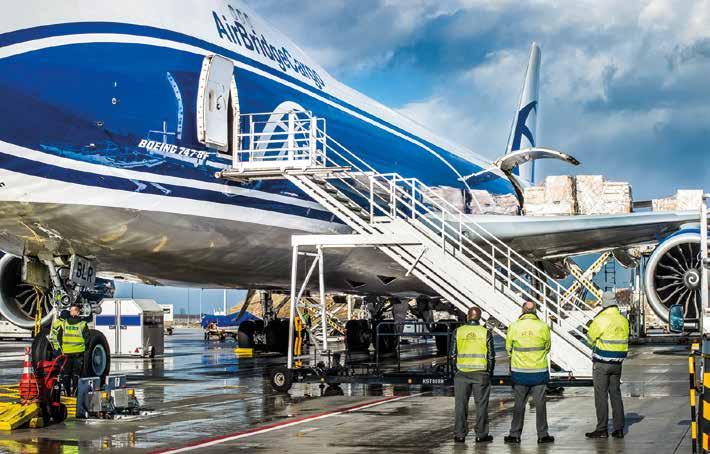
But, for Paul Horner, manager of dangerous goods standards at the International Air Transport Association (IATA), it involves a more fundamental change. “This is a great opportunity to bring a new approach to
At present, there are massive differences in training standards and programmes between countries. IATA is working on guidelines that will offer a standardised approach that will, hopefully, lead to a situation where approved trainers and programmes will be recognised by other competent authorities.
“Competency-based training offers that opportunity – it is a blank page to work from,” adds Alexandra Jimenez, secretary
of IATA’s Dangerous Goods Training Working Group. “It means that more countries and more stakeholders will be working in a standardised way.”
HELD UP IN TRANSIT
The International Civil Aviation Organisation (ICAO) planned to introduce the new dangerous goods training provisions based on competency-based training and assessment in its 2019-2020 Technical Instructions, with a two-year transition period and mandatory implementation from 2021. However, ICAO’s Dangerous Goods Panel has run up against some legislative issues and it needs to go back and discuss the change with other panels. It now appears that implementation will be delayed by two years.
IATA is, however, embracing the methodology moving forward. Competencybased training will be covered in Appendix H of the 60th edition of the Dangerous Goods Regulations, which will take effect on 1 January 2019. This Appendix will
HCB MONTHLY | SEPTEMBER 2018 50
AIR • THE ARRIVAL OF COMPETENCY-BASED TRAINING OFFERS THE OPPORTUNITY TO SET GLOBAL STANDARDS; IATA IS WORKING HARD TO GET THOSE STANDARDS IN PLACE
include a review of the ICAO provisions and guidelines for implementation developed by IATA’s Working Group, aimed at designers and developers of dangerous goods training programmes.
That guidance will also be made available separately on IATA’s website, with the aim of generating feedback from a range of stakeholders, including designers of training programmes and, importantly, competent authorities. IATA needs to know how competent authorities are planning to approve and oversee competency-based training programmes in their countries; Jimenez says she also wants to be able to use feedback to help develop the guidance further.
The main risk, according to Horner, is that competent authorities and airlines fail to have sufficient trust in the system. “Very strong guidance and standards are needed,” he says, and this is exactly what IATA is working on.
Horner also expects operators adopting competency-based training ahead of the
ICAO deadline. “Many already have similar systems in place,” he says, although they will probably need to be amended to match the new standards.
WORK FOR ALL
The main challenge will be for other players in the chain, especially SMEs in the shipper and freight forwarder sectors. This means competent authorities will have to make a bigger effort to oversee the process.
It seems likely that it will be easy to design suitable in-house training programmes, particularly for those handling only a few different products, but it will be much harder to address open-access training courses that currently typically cover the entirety of the regulations.
This could, Horner thinks, lend itself to a modular approach, possibly with the use of simulators and virtual reality – such tools are already being used in other areas of aviation training. But that also means that
there will be business opportunities for those training providers and designers that have the necessary skills.
Fundamentally, though, IATA-approved training schools (ATSs) will have to follow the IATA standards and guidance and implement the competency-based methodology in their training courses. The ATS Network has been involved in the development of the IATA guidance material and, Jimenez says, IATA will be undertaking outreach efforts to help spread the word, with a series of webinars already being planned.
This is, Jimenez adds, all part of a refocusing of IATA’s training strategy to be more ‘learner-centred’, transmitting not only knowledge but also skills. And that is what competency-based training is all about. Those affected by the changes will be able to keep up to date with the latest developments on IATA’s website at www. iata.org/whatwedo/cargo/dgr/Pages/index. aspx. HCB
COURSES & CONFERENCES 51
38 1980-2018 YEARS www.hcblive.com BRINGING NEWS AND ANALYSIS OF THE DANGEROUS GOODS SUPPLY CHAIN FOR 38 YEARS LIVE WEEKLY MONTHLY Subscribe today for just £1
CONFERENCE DIARY
SEPTEMBER
Gastech 2018
SEPTEMBER 17-20, BARCELONA
International conference and trade show for the LNG and LPG industries www.gastechevent.com
Expo Logisti-K
SEPTEMBER 18-21, BUENOS AIRES
13th international exhibition for logistics technology and equipment www.expologisti-k.com.ar
expo PetroTrans
SEPTEMBER 20-22, KASSEL
Biennial trade fair for the petroleum transport and logistics industry www.expopetrotrans.de
SCHC Fall Meeting
SEPTEMBER 22-26, ARLINGTON, VA
Semi-annual meeting of the Society of Chemical Hazard Communication www.schc.org/meetings
CVSA Annual Conference
SEPTEMBER 23-27, KANSAS CITY
Annual meeting of the Commercial Vehicle Safety Alliance http://cvsa.org/eventpage/events/ cvsa-annual-conference-and-exhibition/
FachPack 2018
SEPTEMBER 25-27, NUREMBERG
Biennial exhibition on the packaging process chain www.fachpack.de/en
Hazardous Areas Conference
SEPTEMBER 26-27, MELBOURNE
Seventh annual event for engineers working in hazardous areas www.events.idc-online.com
Tank Storage Asia
SEPTEMBER 26-27, SINGAPORE
The main annual exhibition and conference for the Asian tank terminal industry www.tankstorageasia.com
FIATA World Congress
SEPTEMBER 26-29, NEW DELHI
Annual conference of the International
Federation of Freight Forwarders Associations http://fiata2018.org/
TSA Conference & Exhibition
SEPTEMBER 27, COVENTRY
18th annual meeting of the UK Tank Storage Association www.tankstorage.org.uk/ conference-exhibition/
OCTOBER
World LP Gas Forum
OCTOBER 2-4, HOUSTON
31st annual meeting of the World LP Gas Association www.worldlpgforum2018.com/
Bulk Liquid Storage 2018
OCTOBER 3-4, CARTAGENA
Sixth annual conference on the European market for bulk liquids storage www.wplgroup.com/aci/event/europeanbulk-liquid-storage/
ECTA Responsible Care Workshop
OCTOBER 4, BRUSSELS
Update on Responsible Care implementation in European chemical transport www.ecta.com/event-2802694
EPCA Annual Meeting
OCTOBER 7-10, VIENNA
52nd annual meeting of the European Petrochemical Association www.epca.eu
Lithium Battery Workshop
OCTOBER 9-10, BANGKOK
Eighth IATA workshop on lithium battery regulations www.iata.org/events/Pages/lb-workshop.aspx
Oil & Non Oil 2018
OCTOBER 9-11, VERONA
Trade show on fuel and non-oil storage and distribution in Italy and Europe www.oilnonoil.it
Oil & Gas East Africa
OCTOBER 11-13, DAR ES SALAAM
Fourth exhibition for the oil and gas sectors in Tanzania www.expogr.com/tanzania/oilgas/
World LNG Series: Asia Pacific Summit
OCTOBER 16-19, SINGAPORE
Tenth annual meeting for LNG buyers and sellers http://asiapacific.cwclng.com/
FFA 2018
OCTOBER 18-19, SHANGHAI
Fifth annual conference on floating energy systems www.ffa-annual.com/indexen.html
DGAC
OCTOBER 22-24, ALEXANDRA, VA Annual conference of the Dangerous Goods Advisory Council www.dgac.org/2018-conferencemeeting-dates
IPANA Annual Conference
OCTOBER 23-25, HOUSTON
Annual meeting of the Industrial Packaging Alliance of North America www.industrialpackaging.org/#events
RIPA Annual Conference
OCTOBER 24-26, HOUSTON 77th annual meeting of the Reusable Industrial Packaging Association www.reusablepackaging.org/event/ fall-conference-2/
LNGgc
OCTOBER 29-31, LONDON
Annual conference on LNG shipping and trade, including summit on LNG as fuel and smallscale LNG distribution https://energy.knect365.com/lnggc-london/
NOVEMBER
Gas Asia Summit
OCTOBER 31-NOV 1, SINGAPORE Conference and exhibition, incorporating seminar on small and mid-scale LNG in AsiaPacific www.gasasiasummit.com
Tank Truck Week
NOVEMBER 5-7, NASHVILLE
National Tank Truck Carriers’ (NTTC)
Annual Tank Truck Show & Maintenance Seminar www.tanktruck.org/events/events-detailview/2018-tank-truck-week
HCB MONTHLY | SEPTEMBER 2018 52 COURSES & CONFERENCES
INCIDENT LOG
ROAD/RAIL/AIR INCIDENTS
Date Location Vehicle Type Substance Details Source
9/5/18 Trafford Park, road tanker fuel Fire broke out in road tanker carrying fuel on M60 on Barton Bridge, cause unknown; large fuel spill; MEN Manchester, UK several lanes of motorway closed, causing severe disruption; no injuries reported
9/5/18 nr Woodlands, road tanker sodium Driver lost control of tank truck, probably going too fast through curves; truck overturned, tanker separating Nevada California, US hypochlorite from cab and rupturing, spilling load; shelter-in-place ordered; driver died, not clear if from crash or chemical Appeal
10/5/18 Decatur, road tanker gasoline, Tank truck overturned at road junction when making turn; cargo of gasoline, diesel leaked, causing closure Decatur Alabama, US diesel of nearby businesses; driver unhurt Daily
13/5/18 Rockcastle county, road tanker fuel Tank truck caught fire after collision with truck on US 150; tanker had 8,000 gal (30 m3) unspecified fuel; LEX 18 Kentucky, US tanker driver injured, was rescued from burning cab by other drivers
14/5/18 Mobile, road tanker oil Tank truck carrying oil (crude?) crashed, caught fire on ramp to I-10 in downtown area; ramps were closed AP Alabama, US until fire was put; clouds of black smoke over centre of town
14/5/18 nr Brady, road tanker butane Faulty valve caused leak of butane from tank truck at rest stop on I-80; rest stop was closed and evacuated; KNOP Nebraska, US cargo of 6,500 lb (2,950 kg) butane transferred to second tanker without incident
15/5/18 Benton, road tanker gasoline, Tank truck ran off Highway 64, crashing into Ocoee River; not clear how much of 8,000 gal (30 m3) mixed Daily Tennessee, US diesel fuel load leaked to water; road closed during lengthy cleanup Herald
15/5/18 S Jacksonville, road tanker nitric acid Laidlaw Trucking tank truck with reported 30,000 gal (113 m3) nitric acid suffered leak at truck stop; JournalIllinois, US some damage to tarmac; acid had to be carefully transferred Courier
19/5/18 Kibarani, freight train gasoline 16-wagon oil train derailed, apparently due to garbage on the line, with two tank cars rolling into sea; Standard Kenya accident closed rail route to Mombasa Island; at least 3,000 litres gasoline spilt to water
20/5/18 Trichardt, road tanker sulphur Zalawi road tanker carrying sulphur overturned on Delmas road, spilling cargo close to reservoir; cleanup Ridge MP, South Africa expected to take a long time; diversions in place; no injuries reported; cause unknown Times
21/5/18 Boyle, road tanker hydrochloric Double tanker rolled off Highway 831 in single-vehicle accident; driver unhurt; some acid leaked from tanks, CTV Alberta, Canada acid prompting evacuation of nearby homes; traffic diversions in place
21/5/18 Muang, road tanker molasses Road tanker overturned after swerving to avoid motorcycle; cargo of molasses spilt from tanker, paving road Pattaya Chainat, Thailand with a sticky mess; road had to be closed for cleaning One
22/5/18 Victoria Island, road tanker diesel Road tanker making diesel delivery to generator of apartment block developed leak; spilt diesel caught fire; Pulse Lagos, Nigeria blaze spread to tanker, nearby car; residents fled; fire crews extinguished blaze without further injury
22/5/18 Harrison county, truck sodium Truck carrying 42,000 lb (19 tonnes) sodium bromide overturned on I-10 on-ramp; driver managed to get out; WLOX Mississippi, US bromide responders secured load, fearing that any contact with water would create noxious vapour; cause unknown
23/5/18 Trail, road tanker sulphuric Teck Trail Operations suspended its carrier, Westcan Bulk Transport, after second leak of acid in six weeks; Trail BC, Canada acid latest release caused by gasket failure, allowing acid to spill over several miles; no water impact Times
24/5/18 Victoria, road tanker furnace oil Tank truck rolled over after collision with van on Malahat Highway, forcing road closure; some oil leaked CBC BC, Canada to ditch; two people injured in crash; road closure caused severe delays, with water distributed to drivers
24/5/18 Barnum, freight train ethanol Six tank cars with ethanol from Valero plant derailed not far from Fort Dodge, due to faulty switching The Iowa, US mechanism in CN yard; tank cars remained upright, no spillage reported; nearby roads closed for response Messenger
25/5/18 Karwar, road tanker hydrochloric Southern Road Lines road tanker carrying acid to nearby nuclear power station leaked after driver took wrong NIE Karnataka, India acid turn and vehicle became stuck; leak caused fish kill in Kali River; locals warned against drinking water
26/5/18 North Dumfries, road tanker fertiliser Tank truck struck car that failed to obey stop sign; tanker rolled, spilling “thousands of litres” of liquid CTV Ontario, Canada fertiliser to ditch; three people hurt; fire crews worked to keep product from spreading further
26/5/18 Gbatse, road tanker gasoline Road tanker rolled over, spilling gasoline; locals rushed to collect spill; policeman fire shot into the air to Punch Benue, Nigeria control crown but ignited vapours; at least 13 died, dozens hurt in explosion; several homes, cars burned
26/5/18 Ughelli, road tanker gasoline Road tanker rolled over, ignited after driver tried to avoid stopping at checkpoint; flames spread to five Vanguard Delta, Nigeria cars nearby; at least 10 people killed in inferno
29/5/18 Kuwait City, road tanker gasoline Road tanker rolled over near 360 Mall, starting fire; driver severely injured; fired crews managed to bring Arab Kuwait blaze under control but some fuel escaped into sewers Times
30/5/18 Linden, road tanker gasoline Tank truck overturned, ruptured on Routes 1/9, spilling 9,000 gal (34 m3) gasoline; road closed in both Nj.com New Jersey, US directions; traffic diverted through side streets near Linden Airport; driver suffered minor injuries
WWW.HCBLIVE.COM SAFETY 53
ROAD/RAIL/AIR INCIDENTS (CONTINUED)
Date Location Vehicle type Substance Details Source
31/5/18 Kuthiran, road tanker phenol Road tanker overturned on Thrissur-Palakkad NH after colliding with truck; some 1,000 litres phenol The Kerala, India spilled, reaching water courses and causing fish kill; locals warned against using water Hindu
31/5/18 Mobile, road tanker acrylamide Employees at Kemira Water Solutions noticed rising temperature in pressurised tank with 5% acrylamide WKRG Alabama, US solution, arriving for discharge; tank vented; tank was cooled with water; local evacuation ordered
31/5/18 Batesville, truck sulphur Truck carrying sulphur overturned, caught fire on I-55; driver badly burned; two police officers rescuing him Local Mississippi, US from cab also injured when load exploded; nearby area evacuated Memphis
31/5/18 Campbell county, truck copper Truck carrying 4,500 gal (17 m3) copper sulphate crashed, overturned on I-75; not known how much cargo USA Tennessee, US sulphate spilled from drums on truck; one lane of highway closed while hazmat crew deal with spill Today
4/6/18 nr Placerville, road tanker jet fuel Tank truck with 800 gal (3,000 litres) jet fuel, also pesticides, overturned on SH 193 after driver lost control; Sac’mento California, US some 700 gal fuel spilled but did not reach nearby American River; highway closed for cleanup Bee
5/6/18 Kalamboli, road tanker ammonia Tanker driver lost control, crashed over wall of narrow bridge and into channel below; driver escaped but Times of Maharashtra, India tanker was dangling over bridge for 10 hours; no report of leakage but police had to keep bridge clear India
5/6/18 Madurai, road tanker diesel, Road tanker overturned after collision with bus on Madurai-Tirumangalam highway, spilling fuel to road; The TN, India gasoline fire crews deployed foam to prevent ignition; area cordoned off during response Hindu
10/6/18 Vizianagaram, road tanker chemicals Road tanker ran off NH 26, crashing into transformer; tanker was carrying unspecified chemical; fire broke Siasat AP, India out – not clear if it was transformer or tanker; driver suffered minor injuries; police investigating Daily
10/6/18 Ramban, road tanker chemicals Road tanker carrying unidentified chemicals ran off road, rolled into gorge; two people in cab were both Kashmir J&K, India killed; no indication of loss of product but must be considered highly likely Observer
MARINE/INLAND WATERWAY INCIDENTS
Date Location Vessel Substance Details Source
6/5/18 Mobile, barges cars Fire broke out in cargo of old cars on barge on Mobile River; fire spread to second barge with similar cargo; FleetMon Alabama, US tugs, fire boats brought blaze under control
8/5/18 off Busan, Sunny Orion xylene Product tanker (12,200 dwt, 2010), with 4,700 t xylene from Hong Kong to Ulsan, suffered fire in empty FleetMon South Korea cargo tank; crew managed to extinguish fire, bring vessel into port; coast guard helicopter monitoring
12/5/18 off Bridgehampton, Tofteviken Tanker (115,340 dwt, 2005), inbound to NY with unknown cargo, suffered 9-metre gash in hull after FleetMon New York, US collision with fishing vessel (the at-fault vessel); no reports of pollution; tanker brought to anchorage
13/5/18 Genova, Grande Fire broke out aboard chemical tanker (30,700 dwt, 2015) at or near Porto Petroli; not clear if vessel was in FleetMon Italy Riviere cargo at the time; crew managed to bring fire under control with no pollution; berthed next day at Genova
21/5/18 Incheon, Auto Banner cars Fire broke out on cargo deck of car carrier, reportedly due to overheating in engine of one of 2,100 used FleetMon South Korea cars bound for Libya; fire spread to 1,200 vehicles; fire raged for a day before being brought under control
23/5/18 River Don, Optimaflot diesel Ore/oiler (3,350 dwt, 1981), with 2,800 t diesel, was driven aground on River Don by strong current while FleetMon Russia heaving anchor; ship ended up out of fairway, required tug assistance; no pollution reported
25/5/18 Banjarmasin, Srikandi 511 oil Fire broke out aboard docked product tanker (2,700 dwt, 2013), cargo unknown; burning oil ran into river; FleetMon Kalim’tan, Indonesia at least four ships downstream damaged by fire; tanker still at Banjarmasin for repairs
26/5/18 Tema, Alice crude oil Small tanker with 1,200 tonnes crude oil split in two at anchorage; authorities claimed to have transferred PeaceFM Ghana all oil aboard before it could spill to sea; incident led to renewed calls for greater oversight of shipping
29/5/18 Cienfuegos, crude oil Unknown volume of crude oil, contaminated waste water spilled to Cienfuegos Bay after heavy rains caused OilPrice Cuba damage to Cupet refinery; booms deployed in attempt to contain spill
29/5/18 Morrisburg, Chem Norma Chemical tanker (17,100 dwt, 2009), with unknown cargo, ran aground in St Lawrence River due to steering CBC Ontario, Canada failure; inspection found no damage or leak; tanker refloated five days later with tug assistance
30/5/18 Oslo, heating oil Thousands of litres of heating spilled into Alna River and Oslo Fjord after leak from railyard use to store newsin Norway metro trains; spill happened during transfer of oil as part of environmental programme english.no
11/6/18 Tianjin, CSCL Spring containers Five-high container stack fell off containership onto bunker tanker Jinyou 8, refuelling alongside; twistlock FleetMon China failure thought to be cause; fortunate that falling boxes did not ignite vapours from bunkers
HCB MONTHLY | SEPTEMBER 2018 54
MISCELLANEOUS INCIDENTS
Date Location Plant type Substance Details Source
8/5/18 Box Elder, ammunition ammunition Fire broke out at Ultramax Ammunition plant in store with 2 million rounds; facility destroyed in blaze; AP S Dakota, US plant nearby businesses evacuated because of fears of exploding bullets; crews initially allowed fire to burn out
10/5/18 Oklahoma City, pipeline crude oil Hazmat crews called to investigate yellow liquid in street found it to be crude oil spilling from ruptured News9 Oklahoma, US Sunoco pipeline; line isolated; operator organising cleanup and line repair
11/5/18 Drayton Valley, pipeline crude oil Bonterra Energy reported leak of some 30,000 litres crude oil and produced water from line; leak impacted Red Deer Alberta, Canada body of water, affected wildlife; line isolated; operator to organise cleanup News
12/5/18 Shanghai, chemical benzene At least six workers killed by explosion at SECCO plant, reportedly during maintenance work on benzene Chemorbis China plant storage tanks; only minimal impact reported on operation of 1.1 mta ethylene cracker
14/5/18 Baldwin, pipeline LPG Tractor ruptured LPG pipeline, causing “chemical fog” to roll through area; emergency responders found and KPEL Louisiana, US closed valve on line, owned by Enterprise Products; all-clear sounded once leak had been shut off
16/5/18 Pugachyovo, arms depot ammunition Fire broke out at ammunition depot some 1,000 km east of Moscow, reportedly after grass fire encroached on AP Russia facility; nearby town’s 3,000 residents ordered to evacuate; depot was badly damaged by fire in 2011
17/5/18 Kiri Afghana, sugar mill molasses Large leak of molasses from Chadha Sugars & Industries plant to river and canal network caused major fish NIE Punjab, India kill and damage to wildlife; human water supplies affected; operator to be billed for cost of clean water
17/5/18 Ulsan, chemical chlorine 13 workers hospitalised after chlorine leak at Hanwha Chemical plant; suspected that leak happened while Yonhap South Korea plant chlorine was being transferred between storage tank and tanker; no off-site impact
18/5/18 Tampa, terminal fertiliser Up to 2 tonnes nitrogen-based fertiliser spilled to channel into Tampa Bay at Kinder Morgan dry bulk tampabay. Florida, US terminal, during vessel discharge operations; authorities and NGOs monitoring nearby waterways com
23/5/18 Tui, house fireworks At least one person killed, 12 injured by explosion in house being used as clandestine fireworks storage unit; Reuters Galicia, Spain unconfirmed reports said four died; dozens of houses destroyed; others damaged over 4-km radius
24/5/18 Ankara, gunpowder fuel One killed, four injured by explosion at state-owned MKEK gunpowder plant; blast appeared to be centred Daily Turkey factory in plant’s fuel handling unit, possibly due to blocked valve; investigation underway Sabah
25/5/18 Westminster, gas bottling propane One person hurt by explosion in refilling station; reported that a venting cylinder in the back of a running AP Colorado, US plant pickup truck ignited, triggering chain reaction that sent several other cylinders ricocheting around parking lot
26/5/18 Salini, fireworks fireworks Three people hurt at facility preparing fireworks for upcoming festival; facility fully licensed; four others on Indep’t Malta factory site escaped without injury; not clear what caused explosion
27/5/18 nr Kamloops, pipeline crude oil Some 4,800 litres crude oil spilt from flow meter at Darfield pump station on Kinder Morgan-owned pipeline; Global BC, Canada spill contained on property with no impact on waterways News
28/5/18 Labasa, port wood Storage tank ruptured at Fiji Forest Industries plant, spilling unknown volume of Tanalith chromated copper Fiji Fiji preservative arsenic; substance did not reach sea but nearby land was contaminated; stop-work notice issued Times
28/5/18 Dahej, chemical TDI Leak of gas from TDI unit at Gujarat Narmada Fertilisers plant; several nearby residents sought medical The Gujarat, India plant help; plant’s alarm system triggered automatic shutdown; plant was in start-up mode after earlier shut-down Hindu 28/5/18 Houston, warehouse chemicals Major fire at warehouse in NCG’s IBC cleaning/reconditioning plant; shelter-in-place ordered as thick black ABC13 Texas, US smoke poured from plant; thought that residual chemicals in empty IBCs may have reacted
29/5/18 Daejeon, munitions propellant Two killed, five injured by explosion at Hanwha facility; blast occurred while solid fuel was being loaded Yonhap South Korea factory into rocket’s propellant tank; Hanwha to investigate what happened and why, to improve processes
31/5/18 Shengang. chemical plastics Massive fire at chemical plant in Chuan-hsing Industrial Zone; fire quickly ran out of control due to presence Taiwan Changhua, Taiwan plant of flammable chemicals, plastics at site; authorities to fine operator under air pollution law News
7/6/18 Hampden, oil terminal fuel Fire broke out in storage tank at Zenith Energy terminal; no injuries or evacuations but roads and rail lines Penn.live Pennsylvania, US were closed; cause of fire not known
14/6/18 Ras Lanuf. oil terminal crude oil NOC reported “catastrophic damage” to two of the five storage tanks at Ras Lanuf terminal during fighting Maritime Libya between rival militia groups; NOC evacuated staff, declared force majeure; attack on Es Sider likely Executive
15/6/18 Harvey county, pipeline natural gas Explosion on Southern Star Central Gas line sent flames 100 feet in the air; fire spread to nearby fields; KWCH Kansas, US no injuries or property damage; operator to determine cause once area is secured
WWW.HCBLIVE.COM SAFETY 55
NOT IN VAIN
SHUT-DOWNS • ABNORMAL PLANT OPERATIONS, SUCH AS START-UPS AND SHUTDOWNS, PRESENT SPECIFIC AND UNEXPECTED HAZARDS. LEARNING FROM RECENT INCIDENTS CAN HELP
IT IS REMARKABLE that, after decades of warnings, HCB’s monthly Incident Log regularly carries reports of accidents –often including fatalities – during plant start-up after maintenance shutdowns and turnarounds.
Indeed, the Center for Chemical Process Safety (CCPS), an industry-sponsored membership organisation that identifies and addresses process safety issues in the
chemical, pharmaceutical and petroleum industries, has determined that most process safety incidents occur during plant start-up, even though that represents only a tiny portion of the operating life of plant. CCPS data indicates that incidents during start-up are five times more likely than during normal operations.
The US Chemical Safety Board (CSB) has now published a Safety Digest to remind operators of the particular risks during startup operations. To prevent such incidents, CSB says, operators should employ effective communication, provide employees with relevant and appropriate training, and have in place up-to-date and effective procedures to deal with start-up and shut-down activities.
THREE EXAMPLES
CSB’s Safety Digest highlights three incidents that offer insights into how such incidents
occur and can provide lessons to help minimise the risk of future events.
In March 2001, three workers were killed at the BP Amoco plant in Augusta, Georgia. Workers were opening the cover on a polymer catch tank when the cover unexpectedly blew off, expelling hot polymer that killed the three men; it also released a vapour cloud that subsequently ignited.
CSB’s investigation into the incident revealed that an attempt to re-start the plant 12 hours earlier had failed due to mechanical problems downstream of the reactor. However, the partial start-up had delivered an unusually large volume of partly reacted material to the catch tank, which then over-pressurised.
In October 2002, three workers were injured by an explosion at the First Chemical Corp plant in Pascagoula, Mississippi. Steam leaking through manual valves heated mononitrotoluene (MNT) in a chemical distillation column; the column had been shut down five weeks prior to the incident and was thought to be isolated and in standby mode. The hot MNT decomposed, forming unstable chemicals and leading to a runaway reaction.
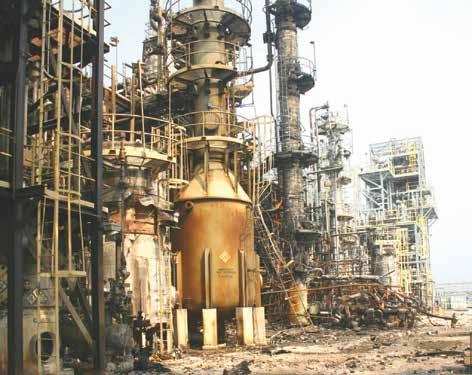
CSB’s investigation found that the facility lacked an effective system for evaluating hazards and for sharing safety information between the various operating teams.
In August 2008, two people were killed at the Bayer CropScience plant in Institute, West Virginia when a runaway chemical reaction in a residue treater caused a vessel in the methomyl unit to explode. The unit had been out of service while the original residue treater was replaced and a new control system installed.
CBS’s investigation determined that the pre-start-up safety review and turnover practices had not be applied to the redesign process. Further, new equipment had not been calibrated or tested before the restart and employees had not been adequately trained to operate the new unit and control system.
ELEVEN PILLARS OF WISDOM
Considering these and other similar events, CSB has identified eleven key principles that should be followed to ensure that effective process safety management avoids incidents like this.
HCB MONTHLY | SEPTEMBER 2018 56
1. Written operating procedures for startup must be based on a thorough safety review, follow proper safe work practices for opening lines and equipment, and incorporate a management of change (MOC) analysis if any new equipment, process or procedure is not a replacement in kind.
2. Written operating procedures need to be sufficiently detailed to avoid the potential for valve misalignment during start-up or shut-down; checklists and diagrams to verify proper valve positioning should be provided.
3. Frequently, operational variances were adopted ahead of start-up when the impact of the variance was unknown. A review of MOC policy should be undertaken to address such variances. For this policy to be effective, it is vital to understand the safe limits for process conditions and variables and to understand established operating procedures. Effective training needs to be provided so that employees can recognise when those limits are being exceeded.
4. A facility’s lockout/tagout system must require that equipment is rendered safe prior to inspection or maintenance. Operating procedures should include a stop-work provision in the event that safe operating conditions cannot be verified.
5. Proper procedures must be in place –and be followed – to isolate equipment after shut-down. A single block valve closure cannot be relied on; a double block and bleed, blind flange or physical disconnection can ensure proper isolation. Equipment placed in standby mode must be monitored while offline; operating procedures must identify the conditions under which standby equipment must be shut down.
6. Computerised control systems should include a process overview and,
if appropriate, material balance summaries to ensure full process oversight by operators.
7. In complex and critical process systems, multi-channel communication with feedback provides the best opportunity for operators to establish and maintain a common understanding of the process unit and its expected future state. During abnormal operating conditions, such as unit start-up, this becomes crucial. Effective communication and feedback is essential.
8. Operators must be supervised and supported by experienced and technically trained employees during start-up and shut-down. They must also be fully trained on the control systems they use. It is worth considering the use of simulators to help train personnel to deal with abnormal situations.
9. Shift rotation should recognise the potential for worker fatigue to impact safety, especially during abnormal operations.
10. New computer controls must be properly calibrated and tested for functionality before being used in any plant start-up process.
11. Critical safety devices must not be bypassed during troubleshooting operations while in plant start-up or shut-down mode.
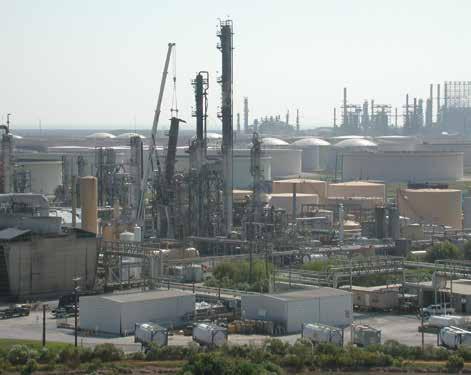
In summary, facility operators need to know exactly what equipment they have in any process that is being shut down or re-started; this is not always easy, especially in older plant where equipment may well have been changed in the past without a full record of the work. Much of the crucial information will be in the heads of older and more experienced personnel – assuming they have not yet retired (or been retired).
Greater use of sensors on equipment and the ongoing move towards full digitisation should help provide facility operators with a clearer idea of the equipment in their process units and also make it much easier to monitor performance during abnormal activities.
What will not change is the importance of effective MOC procedures. As CSB has highlighted before, a good MOC system involves input from a wide range of personnel and relies of good communication between all parties if it is to be effective. HCB
The CSB Safety Digest can be downloaded from the CSB website at www.csb.gov/assets/1/17/ csb_start_shut_02.pdf.
SAFETY 57 WWW.HCBLIVE.COM
OPPOSITE: THE INCIDENT AT THE BAYER CROPSCIENCE PLANT IN WEST VIRGINIA ONLY NARROWLY AVOIDED SPREADING HIGHLY TOXIC MATERIAL OVER THE SURROUNDING POPULATION
ASK THE EXPERT
STATIC • NEWSON GALE’S JAMES GRIMSHAW DISCUSSES THE IMPORTANCE OF ALERTING HEALTH AND SAFETY PROFESSIONALS TO STATIC ELECTRICITY AS AN IGNITION SOURCE IN HAZARDOUS ENVIRONMENTS
WHEN WE REFER to electrostatic discharge as an ignition source, like many other sources it is not tangible for the operator to see, smell or hear. This characteristic of static electricity can unfortunately promote an attitude of “it can’t happen to me”.
Although the generation and accumulation of static electricity is invisible and discrete, it holds a very real possibility of a potential discharge igniting combustible atmospheres. Since static accumulation occurs at the ‘atomic level’, it is naturally difficult to visualise how and why static electricity is a hazard in industries where flammable and combustible products are regularly processed. It is as potent as sparks resulting from mechanical and electrical sources and yet it is often underestimated, either due to a lack of awareness of the risks it poses or because of neglect and/or complacency.
Incidents that have occurred around the world are a testament to the potentially devastating effects of static electricity and mitigating against such risks is critical for loss prevention, business continuity and worker safety.
One of the biggest complacencies for any ignition source that cannot be seen, touched or heard is ‘do nothing’. Newson Gale actively generates case studies and white papers via the Knowledge Centre on our website, and delivers training to raise awareness of static electricity as an ignition
source. Health and safety professionals, either as decision makers or operators, should have an appreciation of the risks involved. Our recommendations are based on internationally recognised codes of practice and should be considered when planning to remove the fire and explosion risks represented by static discharges.
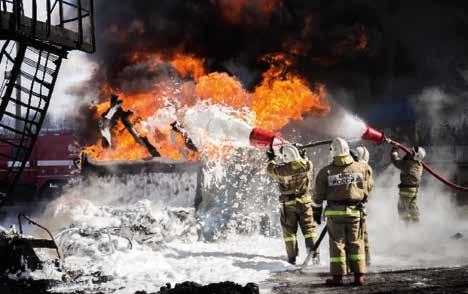
GRASP THE SOLUTION
Despite the ever-present dangers, by eliminating the accumulation of charge and the potential for an uncontrolled electrostatic discharge, the resulting ignition risk is eradicated. The primary consideration should be to source a grounding solution that provides the best fit for your objectives. It is important that users not only understand the risks but also are accommodated with a practical solution fit for their business and application needs. The more steps taken to safeguard personnel and plant assets alike against an ignition source, the more likely static will be controlled in a safe, repeatable and reliable way.
Ensuring that all process equipment and personnel involved in the transferring of hazardous materials are bonded and grounded to a verified earth is the main preventative cause of action. Providing a low resistance path to ground for the electrostatic charges to dissipate eliminates the threat. This can be achieved using clamps and cables, but integrity of the earthing network and sufficient ability of the verified earth to dissipate static charge is critically the responsibility of the operator.
Of course, recognition of the hazard is only the first step. Regular static hazard awareness training combined with grounding equipment that displays compliance with industry codes will go a long way to eliminating fires or explosions caused by static electricity. A Hazard and Operating (HAZOP) risk assessment report will identify hazards, evaluate those associated risks and provide guidance on the subsequent control of the hazards.
To help control these risks, we offer a wide range of static grounding and bonding equipment to provide optimum safety in explosive atmospheres for a variety of process applications. Our products help to prevent static charge accumulation by using practical and innovative design, and ensure effective static control on three levels: grounding and bonding clamps, visual verification systems and interlockable control systems. HCB www.newson-gale.co.uk
HCB MONTHLY | SEPTEMBER 2018 58
VOICE ON THE LINE
EMERGENCY RESPONSE • ACCESS TO INFORMATION CAN BE CRUCIAL IN THE EVENT OF AN INCIDENT. CEFIC HAS DETERMINED WHAT STANDARDS ARE EXPECTED
by a trained technical expert, typically a university graduate chemist, who has knowledge and tactical awareness of chemicals, chemical behaviour and hazards across a range of incident types. That person should also be aware of the regulations relevant to the supply and transport of dangerous goods.
Advice should be provided in the local language, which is already required by law in many European regions, and connection with local language interpreters must be straightforward. The emergency responder should be able to provide initial advice in the local language in under 10 minutes and further detailed advice in 30 minutes if required.
The guidance also includes features for best practice beyond immediate telephone response, including the recommendation that SDSs should be notified with the relevant poison centres. This is already a regulatory obligation in most EU regions.
THE EUROPEAN CHEMICAL Industry Council (Cefic) has published a new set of guidelines for the supply and transport of hazardous materials to help chemical companies deliver best practice in telephone chemical emergency response.
Chemical companies in Europe are strongly advised – and often legally obliged – to include a telephone number on supply and transport documentation for hazardous goods, which can be called to provide emergency response advice during a chemical incident.
The new Cefic guidelines, which have been adopted by all national Intervention in Chemical Transport Emergencies (ICE) centres in Europe, detail the fundamental requirements of an emergency response service. They aim to help companies enhance
their internal emergency response provisions or guide the procurement of a professional third-party supplier.
Among the core requirements specified by Cefic is the need to provide robust and reliable telephone infrastructure that can receive and handle calls 24/7, with fast connection to a chemical expert. This restricts the use of mobile phone networks as the sole or primary means of contact.
STANDARDS FOR RESPONSE
The guidelines state that the emergency responder should have access to the relevant safety data sheets (SDS) and be able to provide proportional advice tailored to the circumstances of the incident. According to the new guidelines, this should be provided

Daniel Haggarty, head of emergency response for the UK’s National Chemical Emergency Centre (NCEC), led the Cefic group that generated the guidance. He explains: “In publishing its new guidance, Cefic and the ICE national schemes have defined best practice for emergency response in Europe. By following this guidance when implementing or procuring an emergency response service, companies can be confident that a caller will receive immediate advice from a trained professional on how to mitigate the impact of a chemical incident and protect people, the environment, assets and reputation.”
A full list of ICE centres can be found on the Cefic website at http://www.cefic.org/ Documents/RESOURCES/Guidelines/ Transport-and-Logistics/ICE_National_ Scheme_Cefic2018.pdf.
NCEC also offers a very useful document that summarises the global standards for emergency telephone number for use on SDSs and for use in road transport. This can be downloaded from the NCEC website at https://the-ncec.com/en/resources. HCB
SAFETY 59 WWW.HCBLIVE.COM
A LIMIT ON BAGS
READERS OF HCB know – or at least should know – that flexitanks are not authorised for the transport of dangerous goods. The primary reason for that is that flexitanks, which are seen as a cost-effective alternative to transport in tank containers, are prone to failure. While there has been some improvement in quality, it is unlikely that there will be any change in the regulations regarding their use for dangerous goods.
However, many of the substances that are carried in flexitanks have the potential to cause problems in the event of a leak, even if they are not designated as dangerous goods. In order to clarify matters for chemical shippers tempted to use flexitanks, the European Chemical Industry Council (Cefic) has published a first edition of Best Practice Guidelines for loading, transport and unloading of flexitanks.
In its introduction, the Guidelines state: “In the early days, a flexitank damage resulted in
leaks, loss of cargo and subsequent cleanup activities. The root cause was typically attributed to inappropriate handling and fitting and impact forces during transport of the flexitank. In recent years, flexitank producers and operators have achieved major improvements in bag manufacturing, container selection criteria, as well as safe loading and unloading practices, which have led to a reduction of the number of spills and leaks.”
Indeed, the Guidelines say, these improvements have led to a significant increase in the number of flexitank movements over the past decade and it is forecast that by 2020 there will be more than 1 million such movements each year.
However, the Guidelines go on: “Incidents involving flexitanks pose a higher risk to result in a loss of containment compared to tank containers. The use of flexitanks for the carriage of non-dangerous liquid chemicals
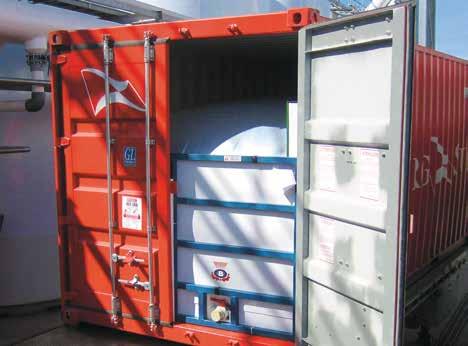
should therefore only be carried out with the appropriate equipment and following the right operating procedures.”
WHAT’S NOT GOOD IN A FLEXI
The Guidelines are quite clear that any product classified as a dangerous good under the International Maritime Dangerous Goods (IMDG) Code or other international regulation is not allowed for transport in flexitanks.
Great care should also be taken with combustible substances with a flashpoint higher than 60˚C and equal to or lower than 93˚C. “In general transportation in flexitanks is not recommended,” the Guidelines state. “It is a company decision to deviate from this recommendation after having carried out an in-depth risk assessment.”
A special risk assessment is also recommended in the case of substances that need to be heated before discharge. The temperature of the flexitank must not exceed the temperature specified by the manufacturer, which should be in line with the PAS 1008 standard.
Finally, there are products classified according to the Globally Harmonised System (GHS) of classification and labelling of chemicals that are not designated as dangerous in transport but which nevertheless present a health or environmental hazard; in Europe, this means any product that has an ‘H’ statement under the CLP Regulation. Specifically, Cefic says, those that have at least one H phrase relating to genetic defects, cancer, fertility, harm to breast-fed children, damage to organs, respiratory irritation or damage to the aquatic environment are not recommended for transport in flexitanks.
The Guidelines provide a series of checklists to enable those using flexitanks to do so as safely as possible, with due regard to cargo restrictions.
The Cefic Guidelines can be freely downloaded from the Cefic website at www.cefic.org/Documents/RESOURCES/ Guidelines/Transport-and-Logistics/Best%20 Practice%20Guidelines%20-%20General%20 Guidelines/The_use_of_flexitanks_for_ the_transport_of_non_dangerous_liquid_ chemicals_in_bulk.pdf. HCB
HCB MONTHLY | SEPTEMBER 2018 60 SAFETY
FLEXITANKS • EXPERIENCE WITH THE USE OF FLEXITANKS HAS IMPROVED THEIR SAFETY RECORD BUT, AS CEFIC NOTES, THEIR USE WITH NON-DANGEROUS CHEMICALS IS STILL RISKY

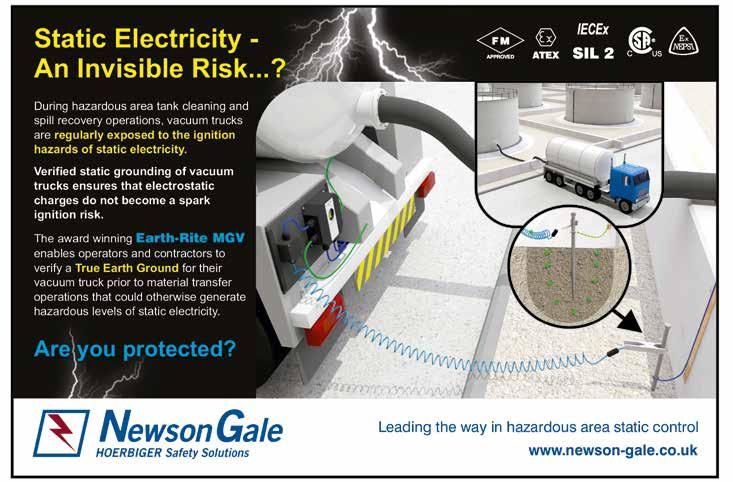
READY OR NOT…
FOR TWO DAYS every year, dangerous goods experts from across the UK and Ireland gather in the leafy wilds of Northamptonshire to discuss matters of common interest. The meeting, the UK’s main forum for the sector, is organised by the Vehicle Certification Agency (VCA) on behalf of the UK Department for Transport (DfT).

This year’s Dangerous Goods Seminar, the 33rd annual event, took place once more – though possibly for the last time –at the Daventry Court Hotel on 5 and 6 June and drew an enthusiastic and varied crowd of experienced and tyro dangerous goods professionals. It is always impressive to see that VCA manages to reach out to those new to the industry, offering an attractively low delegate fee (the government cannot be seen
to be making money from outreach events) and a cleverly designed programme to accommodate delegates of all levels of knowledge.
As ever, the seminar began with a primer session presented by Keith White of VCA’s Dangerous Goods Office, designed to help those new to the sector to understand the alphabet soup of acronyms, the structure of the regulations that govern the transport of dangerous goods across all modes, and the way in which the UK government interacts with the regulated industries and other stakeholders. As usual, senior regulators made themselves available during the breaks and over breakfast on the second day so that delegates to talk to them directly about problems and any issues they were having in applying the regulations.
START WITH ROAD
After a brief introduction by the seminar’s regular chairman, HCB’s editor-in-chief Peter Mackay, the serious business began with a series of updates on the main changes to have been agreed by the modal authorities over the past year, which will mostly take effect from the beginning of 2019. Many of these changes derive from the 20th revised edition of the UN Recommendations on the transport of dangerous goods – aka the ‘Model Regulations’ – which was adopted at the end of 2016 and published in early 2017. These changes are largely common to the different modal regulations.
Darren Freezor, head of the International Team at DfT’s Dangerous Goods Division, introduced some of the main changes that will appear in the 2019 text of ADR, which covers the transport of dangerous goods by road. Among these are the adoption of 12 new UN entries – UN 3537 to 3548 – for articles containing dangerous goods, nos. These new entries were adopted by the UN Sub-committee of Experts on the transport of dangerous goods (TDG) after a lot of hard work by the UK in particular, and aim to avoid the need to agree further UN entries for specific articles. They also aim to avoid the
HCB MONTHLY | SEPTEMBER 2018 62
CONFERENCE
REPORT
•
VCA’S ANNUAL DANGEROUS GOODS SEMINAR PROVIDED AN UPDATE ON THE REGULATIONS
AND
AN INSIGHT INTO A POST-BREXIT WORLD
use of UN 3363 for such articles, which fails to provide an idea of the hazards presented by particular articles.
The new entries for articles do not apply to explosives (Class 1), infectious substances (Division 6.2) or radioactives (Class 7). A multilateral special agreement, M312, to permit the use of the new entries ahead of the amendment’s entry into force next year was initiated by France in April 2018 and has so far been counter-signed by Germany and the UK, allowing the use of the new entries in domestic transport in those countries and in international transport between them.
The 2019 version of ADR will include a new Chapter 2.8, designed to mirror the provisions on the classification of corrosive substances in the same chapter of the Globally Harmonised System of Classification and Labelling of Chemicals (GHS). This will offer consistency throughout the supply chain, from manufacture through transport to the end user.

Greater clarity has been provided on the classification of ammonium-based fertilisers, particularly those that fall into Class 1 or Division 5.1. The changes include an ADRspecific key to the use of Part 3, Section 39 of the Manual of Tests and Criteria.
Some relief has been provided for those shipping fuel containment systems for vehicles – for instance, CNG, LPG or hydrogen tanks for cars. The packing provisions and Chapter 6.2 will not apply if certain conditions are met.
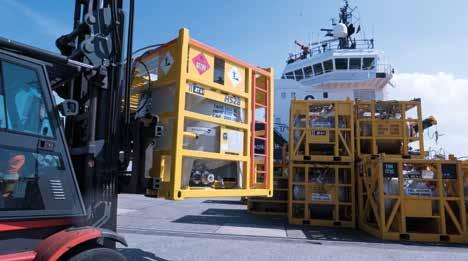
As ever, there are more changes to the provisions for the transport of lithium batteries. It has been confirmed that cargo transport units containing lithium batteries – which are being used for power storage rather than transport – will be assigned to UN 3536. There are some new exemptions for private household equipment.
There are also some changes to the provisions for the testing of cylinders. A new special provision 674 sets out requirements for samples of overmoulded cylinders to be used for tests, their traceability, the statistical assessment of test results and what to do in the case of failure. This approach will be monitored and may be extended to other types of cylinder in the future.
Finally, a new Chapter 7.1.7 has been added to cover substances stabilised by temperature control other than those that are already assigned to Division 4.1 or 5.2.
Darren concluded by reminding the audience that they should “never be afraid” to contact the department: emails should be addressed to dangerousgoodsenquiries@dft. gsi.gov.uk.
ALL AT SEA AGAIN
Changes to the International Maritime Dangerous Goods (IMDG) Code were introduced by Helen North, who has in recent years been working in the Maritime and Coastguard Agency (MCA) but has since the VCA seminar returned to DfT as deputy head of the Dangerous Goods Division. »
REGULATIONS 63 WWW.HCBLIVE.COM
IMDG Code Amendment 39-18 was adopted by the International Maritime Organisation (IMO) in May 2018, shortly before the VCA seminar. The number ’39-18’ means that it is the 39th amendment and it was adopted in 2018; confusingly, though, it takes effect on 1 January 2019, but only on a voluntary basis –Amendment 38-16 can still be used until 31 December 2019.
Amendment 39-18 harmonises with the 20th revised edition of the UN Model Regulations and so contains many of the same changes that the other modal regulations do. In addition, however, there are a number of changes specific to the sea mode, particularly in the area of stowage and segregation.
Amendment 39-18 includes for the first time provisions for what IMO is calling ‘road gas elements vehicles’ – these are similar to ‘battery-vehicles’ in RID and ADR, although the definition is different. This may be amended in future editions, Helen suggested. The provisions include a new definition in 1.2.1 and an amendment to 4.2.6 and Chapter 6.8. These ‘RGEVs’ are authorised only for use on short international voyages and the substances that they can carry are assigned to special provision 974.
The IMDG Code will harmonise with ADR in terms of size limits for viscous flammable liquids. This involves changes in 2.3.2.5 of the Code, which covers the assignment of packing groups to flammable liquids, and extends the maximum quantity per package from 30 litres to 450 litres.
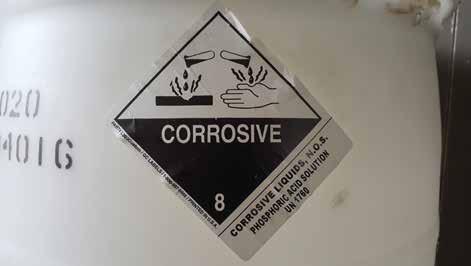
IMO has done some more work on segregation and has developed 18 Segregation Group Codes (SGG); these will be listed in column (16b) of the Dangerous Goods List alongside the existing 75 Segregation Codes (SG). There have been some changes to a few SG codes for clarity. There is also a new segregation exemption table in 7.2.6.3.4.
In column (16a) there have been some changes to the stowage categories for articles of Class 1, which are designed to remove some unintended tightening of the requirements. A new SW30 has been adopted for jet perforating guns (UN 0124) to allow for easier transport to and from offshore installations.
Special provision 29 has been revised to align with the UN Model Regulations; the additional text referring to bales has been moved to a new SP 973.
The IMO takes a different view of SP 363, which in the UN Model Regulations merely states: “No other requirements of these Regulations apply”. In the IMDG Code, however, this is followed with the words: “… except for SP 972, Chapter 5.4, part 7 and column 16a and 16b of the Dangerous Goods List.” It also includes size specifications for the marine pollutant mark for UN 3530.
There are some amendments to the documentation required for excepted packages of Class 7 material and a new 5.4.3.2 dealing with the location of excepted packages.
Section 7.3.7 on cargo transport units under temperature control has been completely restructured to reflect the UN changes on polymerising substances. Finally, the Supplement contains a new consolidated version of the Emergency Schedules (EmS) and Medical First Aid Guide (MFAG) that takes into account revisions made in the past four years.
TRAINED FOR FLIGHT
Eric Gillett, policy specialist on dangerous goods for the UK Civil Aviation Authority (CAA), spoke at length about competencybased training. The International Civil Aviation Organisation (ICAO) has introduced this concept in many areas of aviation regulation, including pilot training, and is now planning to extend it to dangerous goods.
Currently, the ICAO Technical Instructions list out categories of personnel and indicate the level of training each category is required to receive, although this is not all-encompassing. ICAO also lists those entities whose personnel require training and the ‘minimum aspects’ that must be covered. However, it is being increasingly acknowledged that tests to verify trainees’ understanding may not verify that they are competent to carry out their roles; it is also felt that some organisations train their personnel simply to pass the test, rather than to be competent.
The aim of competency-based training is to ensure that trained personnel can demonstrate through their behaviour that they are competent. However, there are some differences between the current requirements and the proposed text that has been put forward by ICAO. Implementation has now been delayed from its proposed January 2019 deadline to give the ICAO Dangerous Goods Panel time to complete further work and confer with other panels.
It seems likely, Eric said, that implementation of competency-based training requirements will not take place before 2021;
HCB MONTHLY | SEPTEMBER 2018 64
ABOVE: CHANGES TO THE PROVISIONS FOR THE CLASSIFICATION OF CORROSIVE SUBSTANCES, TO ALIGN WITH GHS, SHOULD SIMPLIFY COMPLIANCE THROUGHOUT THE SUPPLY CHAIN
if this is the case, training programmes developed prior to 2021 will be able to be used until 2023, at which point competency-based training will become mandatory.
The UK CAA believes that competencybased training could enhance safety in the transport of dangerous goods by air, but also feels that CAA-approved training courses are already based on competence, which can only be tested through practical activities. The main challenge lies in open-access shipper courses, Eric said.

CAA is planning to develop and publish guidance on competency-based training for those categories of personnel currently identified in the Technical Instructions; this will tie together the regulatory provisions and specimen examples of training specifications, adapted competency models, and competency performance criteria that reference observable behaviour. This will be made available as and when ICAO finalises the requirements.
AIR MODE CHANGES
Eric moved on to look at some of the changes that will appear in the 2019-2020 edition of the Technical Instructions. Unlike the other modes, these take effect promptly on 1 January 2019. They do, though, rest to a
large degree on the changes in the 20th revised edition of the UN Model Regulations, including the use of the word ‘hazard’ rather than ‘risk’ throughout the text.
Perhaps not surprisingly, there are plenty of changes to the lithium battery provisions in the 2019-2020 text. Packing instructions 965 (for lithium ion cells and batteries) and 968 (for lithium metal) have been amended; section IA and IB cells and batteries must not be packed in the same outer packaging with substances and articles of classes/ divisions 1 (other than 1.4S), 2.1, 3, 4.1 or 5.1; section II cells and batteries must not be packed in the same outer packaging with any other dangerous goods.
To clarify what is meant by ‘packed with’, packing instructions 966 and 969 have been amended to specify that the number of cells or batteries in each package “must not exceed the appropriate number required for the equipment’s operation, plus two spare sets”.
New stowage provisions state that section IA and IB cells or batteries must not be stowed next to or in a position that would allow interaction with packages or overpacks containing dangerous goods that bear a hazard label of classes/divisions 1 (other than 1.4S), 2.1, 3, 4.1 or 5.1. »

REGULATIONS 65 WWW.HCBLIVE.COM
The notification to the pilot in command (NOTOC) will have to specify the aerodrome where packages of UN 3480 and 3090 lithium batteries are to be unloaded.
More detail has been provided for the loading of battery-powered mobility aids, particularly relating to the removal and securement of batteries and cabling; it is now specified that only one spare battery may be carried.

Elsewhere, special provision A78, which deals with radioactive materials with one or more subsidiary hazards, has been revised. Packing Instruction 951 has been amended to refer shippers to need to comply with the relevant parts of PI 950 for vehicles powered by both a flammable liquid and a flammable gas.
There is some relaxation in the segregation requirement for UN 3528 engines and machinery, which no longer will need to be segregated from packages containing dangerous goods of Division 5.1.
The passenger provisions have been revised and simplified. It includes a clarification that dangerous goods are forbidden unless specifically listed in Table 8-1 and for personal use only. The newfangled battery-powered baggage, when equipped with a lithium metal battery or batteries exceeding 0.3 g lithium content or 2.7 Wh must be carried in the cabin, unless the battery/ies are removed.
KEEP IT IN THE BOX
There are likely to be yet more changes to the lithium battery provisions in the future but at least the regulators appear to be trying to take a more practical approach. Liz Girling from VCA’s Dangerous Goods Office brought the meeting up to date with the latest thinking.
The problem with lithium batteries is that there is a danger of a thermal runaway in the case of damage to the batteries, overcharging, short-circuits or protracted use.
Once a thermal runaway starts, aircraft fire suppression systems cannot cope.
One response is to take the same approach as with explosives: to contain the hazard within a container. At the end of 2015, the UN Sub-committee of experts decided to look at developing a packaging standard and awarded a contract to the Society of Automotive Engineers (SAE) – this was thought to be a more rapid route to a standard, as SAE expected to come up with something within 18 months. The project was initiated in March 2016 but, Liz said, progress has been slow, despite – or perhaps because of? – regular monthly teleconferences and periodic in-person meetings.
SAE is currently working on a fifth draft of the standard. Liz explained that there are lot of interests involved and they may not always be pulling in the same direction; in addition, she said, there has been an element of mission creep, with the group now looking also at battery testing.
There are a number of problems with the SAE draft standard, Liz said – although this may have changed by now. Firstly, it is built around a very specific piece of testing equipment, which is not an ideal situation; that equipment is also very expensive, which will have to be reflected in the cost of testing.
The test acceptance criteria are largely based on consideration of air transport but take into account abnormal conditions – the transport regulations only consider hazards that might appear during the “normal conditions of transport”. The draft also includes some “rather subjective” pass/fail criteria, Liz said. Battery suppliers are concerned that it will increase costs through the supply chain.
The UN Sub-committee of Experts is now taking an alternative approach through an inter-sessional working group, which is aiming to create a series of classification tests that could be used to create what would be effectively packing groups for lithium batteries. The working group is looking at properties such as the likely initiation of a thermal runaway and the impact of such an event, the potential for runaway to spread to adjacent batteries, the effect of the volume and comparative energy density of different consignments, and so on.
In an ideal world, the issue would be solved by changing battery technology, and there are movements in this direction. Solid state lithium batteries, for instance, have a much lower risk of thermal runaway but, currently, are regulated in the same way as other lithium batteries. Other battery chemistries exist, such as sodium ion batteries, which can be completely shorted out with no risk during transport.
The UK, though, believes that a simpler solution lies in packaging provisions; Liz remarked that when Chapter 6.1 was developed, it dealt with the known risks at the time – lithium batteries were then unknown. Packing instructions have already been developed to deal with damaged and defective lithium batteries, which include
HCB MONTHLY | SEPTEMBER 2018 66
ABOVE: NEW TESTING PROVISIONS FOR OVER-MOULDED CYLINDERS MAY PREFIGURE CHANGES TO OTHER CYLINDER TESTING REQUIREMENTS
additional tests. The UK is considering a proposal to the UN that much of this new text could be moved into Chapter 6.1, with a few modifications and possibly some additional package tests. The results of those tests could be indicated by a new prefix or suffix on the package, with an additional ‘rating’ mark to help shippers and enforcement personnel.
OFF THE CLIFF
It would not have been possible to hold an event of this kind this year without a mention of the UK’s planned exit from the EU; Roh Hathlia, head of DfT’s Dangerous Goods Division, explained the plans with help from Darren Freezor.
Firstly, Brexit should not impact the dangerous goods regulations. ADR (road) and RID (rail) will continue to be applied to domestic and international transport via the Carriage of Dangerous Goods etc (CDG) Regulations. ADR and RID are drawn up by supra-national bodies rather than the EU, although the UK is currently required by the EU Framework Directive to apply them to domestic transport.
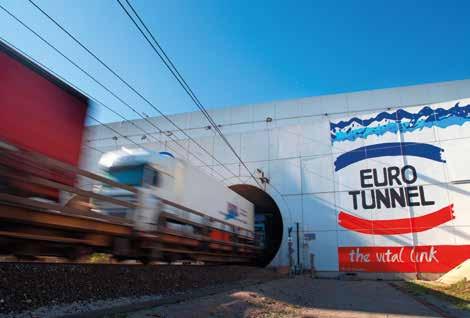
What will have to change is that the texts of the CDG 2009 and 2011 regulations will need to be amended to remove references to EU directives and make direct reference to the regulatory agreements.
It is now planned that the Carriage of Dangerous Goods and Use of Transportable Pressure Equipment (Amendment) (EU Exit) Regulations 2019 will be laid in parliament early in 2019 – hopefully early in February. It will be a small statutory instrument (SI), Roh said: it will include changes to definitions and the removal of some clauses referring to the EU. This schedule should give just enough time to have the revised legislation in place before the UK’s exit from the EU, planned for 29 March 2019.
The UK is also taking the opportunity to re-introduce a requirement for road tankers carrying petroleum to be fitted with vapour recovery equipment. This will be done via a separate SI from the Department for Business, Energy and Industrial Strategy (BEIS), due to be laid in parliament late in 2018.
[A consultation document regarding the CDG changes was opened for comment on 13 August; the comment period closed on 6 September.] HCB
The second part of this report on the VCA Dangerous Goods Seminar in next month’s issue will look at presentations relating to enforcement, inspection and other matters.

REGULATIONS 67 WWW.HCBLIVE.COM
ALL
THE WORLD
and the calendar of meetings for 2018.
December 2018 will mark the end of the current regulatory biennium and the agreement of the next, 21st revised edition of the UN Model Regulations; these are the recommended rules that are transposed to a large extent into the various modal, national and regional regulations.
The major areas of activity during the 2017/2018 biennium have included:
THE ANNUAL FORUM of the Council on Safe Transportation of Hazardous Articles (COSTHA) provides an excellent opportunity for the Council’s members and other interested delegates to get up to speed on what is happening in their backyard in North America. This year’s event was no exception, as detailed in the first part of this report (HCB August 2018, page 52).
But many of COSTHA’s members operate internationally and it is just as important for them to be kept informed of regulatory
developments in the rest of the world. This year COSTHA had brought speakers from as far afield as Brazil, Germany and China to update the audience in Weston, Florida this past 22 to 26 April.
The international regulatory briefing session was kicked off by Shane Kelley, acting director of the Standards and Rulemaking Division at the Pipeline and Hazardous Materials Safety Administration (PHMSA), the unit within the US Department of Transportation (DOT) that has multimodal oversight of the transport of hazardous materials. He was aided by Kevin Leary, transportation regulatory specialist at PHMSA, who explained to delegates the system of global multimodal regulation of the supply, use and transport of dangerous goods
• Work to amend the Manual of Tests and Criteria to make it relevant for both transport and use
• Work on Chapter 2.1 of the Globally Harmonised System (GHS) of classification and labelling of chemicals to accommodate the categorisation of explosives

• Continuing work relating to infectious waste of Category A
•
Development of a hazard-based classification system for lithium batteries in transport, and
•
Provisions relevant for packages that conform to multiple design types. The changes that will be adopted this coming December will be transposed into the regulations that will start to enter force at the beginning of 2021.
HCB MONTHLY | SEPTEMBER 2018 68
OVER
CONFERENCE REPORT • COSTHA’S 2018 ANNUAL FORUM GAVE DELEGATES THE CHANCE TO SEE WHAT IS GOING ON IN HAZMAT IN CHINA, EUROPE AND SOUTH AMERICA SHIPPERS HAVE TO BE AWARE THAT DOMESTIC US RULES DO NOT APPLY ELSEWHERE IN THE WORLD
THEORY TO PRACTICE
The extent to which those model regulations are transposed does, though, vary considerably. Volker Krampe, corporate safety adviser for Beiersdorf in Hamburg and a regular trade association representative at meetings of the UN Subcommittees on the Transport of Dangerous Goods (TDG) and GHS, explained how and why Germany’s domestic rules do not always follow the model.
Germany is a member of the EU and, as such, it applies the modal European rules – ADR for road, RID for rail and ADN for inland waterways – to its domestic transport as well as international movements. This is done through the Federal Law on Hazardous Materials, Gefahrgutbeförderungsgesetz, and the various federal ordinances for road/rail/ inland waterway transport, sea transport, safety advisers and federal exemptions.
A federal ordinance for air transport is a work in progress.
But Germany, like other EU states, is permitted to vary from the UN model if the additional requirements are mandatory and are more strict than the international standards. The downside of this is that those additional provisions may not be globally transparent.
For instance, Krampe said, two incidents led to additional national requirements.
The first of these was the propylene tanker explosion at the Los Alfaques campsite in Spain in November 1978; more than 200 people were killed, many of them German tourists. In response, Germany toughened the requirements for driver training and examination and began to introduce requirements for the routeing of dangerous goods and to require dangerous goods to be carried by rail or inland waterway, wherever possible, as an alternative to road.
The second incident took place in July 1987 in Herborn, when six people died after a tanker accident and explosion. The German federal government responded with additional requirements for speed limiters and braking systems and introduced the concept of the dangerous goods safety adviser (DGSA), which was subsequently introduced across the EU.
Those who need to know the different rules in place for surface transport in Germany can find out by looking at the relevant ordinance, GGVSEB, although this is a lengthy document and the provisions are not highlighted. Derogations from the surface mode regulations are, though, notified to the EU commission in accordance with the requirements.
Krampe looked specifically at the DGSA requirements which, as noted, were invented by Germany and were originally applicable to all transport modes. The requirements were adopted into ADR, RID and ADN but Germany still applies them to maritime transport. The good news is that it has removed them from air transport.
Krampe said that it is, in his view, imperative that all countries apply a consistent set of regulations for the transport of dangerous goods. Insofar as that is not possible, he urged the publication of all deviations from those regulations, ideally in English, available to all at a single point.
WHERE NOW FOR THE UK?
A slightly different perspective was provided by John Mairs, soon-to-be-retiring deputy head of the Dangerous Goods Division in the UK Department for Transport (DfT). The UK faces some similar challenges, he said, and it
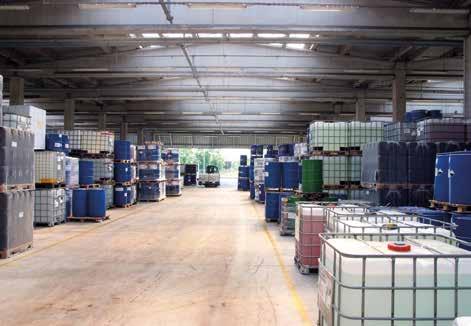
is his department’s task to face those within the framework of the existing regulations.
Many of those challenges are what Mairs described as ‘traditional’. Of late these have included:
• Facilitating the destruction of chemical weapons
• Disposing of material potentially infected with the Ebola virus
• Handling and disposal of materials contaminated with nerve agents, and
• Balancing public safety and the supply of gasoline when it emerged that a significant portion of the UK tank truck fleet was non-compliant.
Industry, though, is nothing if not innovative and DfT has also been faced with the question of how to deal with some novel challenges, such as the rise in internet sales and the corresponding increase in courier van services, the use of autonomous vehicles and what this means for ‘driver’ training, the platooning of trucks, new packaging materials, alternatives to traditional inspection techniques, innovative fuels and energy storage systems, and the emergence of hydrogen as a viable alternative to carbonbased fuels.
But no presentation on the UK could these days be complete without at least some mention of the country’s intention to leave »
REGULATIONS 69 WWW.HCBLIVE.COM
the EU – ‘Brexit’ is not far away. The date for that exit is 29 March 2019, at which point the UK will also leave Euratom; the position with regards to the European Chemicals Agency (ECHA) is still unclear.
In broad terms, though, not much will change: the UK will still apply the existing modal regulations for dangerous goods transport, though domestic legislation will need to be amended to link directly to ADR and RID rather than via the European Directive.

More problematic is likely to be the situation with regard to transportable pressure equipment – gas cylinders and the like. If done properly, there will be mutual recognition of notified bodies but, in the case of what Mairs termed a “bad divorce settlement”, it may be that the EU would not recognise UK notified bodies, which would create a lot of work for UK industry (and DfT) to maintain the ability to use UK-sourced equipment in the rest of the world.
INDEFINITE ARTICLES
The UK plays a significant role in the development of the UN model regulations and has in recent years taken the lead in solving some problematic issues. The latest of these, as Mairs explained, concerns dangerous goods in articles.
There were a number of problems. Firstly, manufacturers of articles may well be unaware that the rules for the transport of
dangerous goods should apply and they can often be shipped undeclared; alternatively, they have often been mis-declared as UN 3363 dangerous goods in apparatus. Secondly, articles containing dangerous goods for which there is no limited quantity value always require competent authority approval, which is both time-consuming and can result in unpredictable results. There was also a feeling that a plethora of new, unrelated UN entries were being agreed to cope with the number of new articles being developed; in recent years these have included items as diverse as asymmetric capacitors, neutron detection devices and confetti shooters.
The solution offered, which after a great deal of horse-trading has largely been accepted, was to adopt a set of 12 new UN entries, one for each UN Class or combination thereof, excluding explosives and radioactives. There is a new special provision that details when competent authority approval of the packaging of such articles is required, and a new Packing Instruction that is generally applicable to articles, based on the Packing Group II standard. A new Large Packing Instruction is also included. UN 3633 and special provision SP 301 have been retained, despite proposals to amend the latter.
This new approach was adopted by the UN TDG Sub-committee in December 2016 and included in the 20th revised edition of the Model Regulations. The International Maritime Organisation (IMO) has adopted
the system into the International Maritime Dangerous Goods (IMDG) Code as from 2019; the International Civil Aviation Organisation (ICAO) has done the same for its Technical Instructions, other than for those articles that contain lithium ion batteries. Europe, however, has decided to delay full implementation, with the new entries having a two-year transition period.
The UN will be keeping an eye on how the new system performs in use and, as confidence grows, may review the requirements for competent authority approval.
WHAT’S HOT IN BRAZIL
Brazil is one of a number of countries in Latin America that applies some or all of the provisions of ADR in its domestic regulations for the land transport of dangerous goods. Rodrigo Amorim, regulatory specialist at the National Land Transport Agency (ANTT), provided an update on where Brazil stands now.
Brazil’s Regulations for the Transport of Dangerous Goods by Land are based on the UN Model Regulations, in respect of classification, limited quantities, packing and tank provisions, documentation requirements, and the construction and testing of packagings. It uses the 2017 edition of ADR in respect of limited quantities per transport unit, the placarding and marking of vehicles, and the certification of tank-vehicles.
The latest update was started by a consultation and public hearing in April 2016, which involved the participation of the competent authorities, carriers, consignors and trade associations. Amendments were adopted that took into account the 18th and 19th revised editions of the UN Model Regulations. The amendments were published as ANTT Resolution 5.232 in December 2016, taking effect on 16 December 2017.
Amorim highlighted some specific requirements that overseas shippers need to be aware of. There is a minimum set of equipment that must be carried on the vehicle for use in emergency, including personal protective equipment, warnings signs and fire extinguishers. Provisions for the marking, labelling and placarding of consignments are
HCB MONTHLY | SEPTEMBER 2018 70
found in Chapters 5.2 and 5.3 of Resolution 5.232; these include an orange plate bearing the hazard identification code and UN number, as per ADR.
Shippers should also be aware of the documentation requirements, particularly the provision that all documents must be written in Portuguese! As well as the usual transport document, consignments must also be accompanied by an Emergency Form showing information for use in an emergency; including the chemical properties of the product(s) being carried, any chemical incompatibility, measures to be taken in the event of leakage from the package/vehicle or human contact with the substance, and a contact number. The format of this form is specified in the national standard ANBT 7503.
The Land TDG Regulations also include very specific exemptions for dangerous goods carried in limited quantities, which can be found in sections 3.4.2 and 3.4.3 of Resolution 5.232.
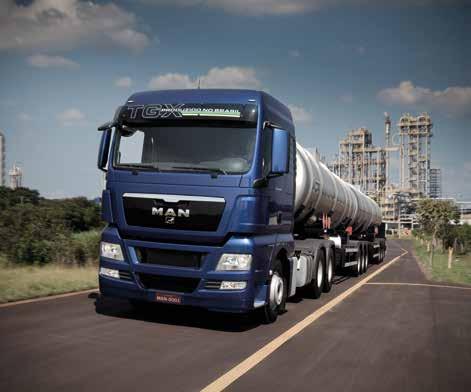
“Brazil has made meaningful changes in this latest update and the Brazilian government aims to keep these updates as close as possible to international provisions in order to facilitate dangerous goods transport in the country and avoid barriers to the global movement of dangerous goods,” Amorim said. He also said the government is open to discussions and keen to hear from the international community with ideas as to how its national regulations can be improved.
Amorim’s update on Brazil’s regulations was supplemented by a presentation by Tatiana Alvim, also a regulatory specialist at ANTT, on the roadside enforcement of those regulations. Enforcement inspections mainly take place at weigh stations, she explained; enforcement personnel are authorised to levy fines for non-compliance, both on the carrier and consignor. The main issues that are found relate to documentation, the availability of safety equipment and personal protective equipment, and placarding; many in the audience recognised the same issues in their own territory.
SMALL IN CHINA
For those shipping dangerous goods to China, the big news is that the country has at last begun observing international standards on limited (LQ) and excepted quantities (EQ), which was the focus of a joint presentation by a delegation from the Ministry of Transport (MOT) featuring Xiaonan Guan, Qiu Meng and Li Donghang. They started with some astonishing figures: there are more than 11,500 road carriers handling dangerous goods in China, with more than 1.5 million people employed in the sector; last year more than 1.1bn tonnes of dangerous goods were moved within the country.
Although LQ and EQ are seen as newcomers to Chinese regulations, things have been moving in that direction for some time. MOT and other ministries have extended small volume exemptions for pesticides, wet cottons and a few other dangerous goods in road transport since 2009, for instance, and two national standards were published in 2012: GB 28644.1 on EQ and GB 28644.2 on LQ.
These standards are now being translated into regulation, firstly through the Hazmat Road Transport Safety Management Measures, which provides LQ/EQ exemptions from requirements for packaging, marking and package testing. The shipper must still provide either a packaging performance test report or a written statement of compliance. The exemptions do not apply to ‘hyper-toxic’ chemicals, Class 1 explosives or Division 6.2 infectious substances, nor to LQ shipped in a mixed load with fully regulated materials. The upper limit for EQ per consignment is 1,000 pieces and for LQ a mass of 8 tonnes. These measures are expected to be adopted and published later in 2018.
Two guides have been prepared to explain the LQ/EQ exemptions and will be published as supporting guidance once the measures are implemented. MOT is working on adding details in the dangerous goods list, based on the quantity limits in the 2015 edition of ADR. HCB
The 2019 COSTHA Annual Forum will take place on 7 to 11 April in Long Beach, California; full details can be found at www.costha.com.
REGULATIONS 71 WWW.HCBLIVE.COM
BRAZIL HAS RECENTLY UPDATED AND HARMONISED ITS HAZMAT REGULATIONS
NOT OTHERWISE SPECIFIED
WHAT A WAY TO GO
About 800 fish were killed in Kentucky in June after a dramatic incident at the Barton 1792 Distillery in Bardstown. A stack of 9,000 barrels of bourbon and brandy collapsed, many of them falling into the nearby Withrow Creek and at least some of them leaking booze into the water.
The county fire chief said that officials reacted quickly (we bet they did), hoping to catch the alcohol before it hit the water but failed to stem the tide. Interestingly, environmental officials noted that fish were beginning to move back into the area the next day. Perhaps they’d gotten a taste for the stuff.
KEEP YOUR POWDER DRY
A nine-year old boy ended up in hospital in Hinsdale, New York in June after suffering chemical burns on his feet. The trouble all started when his Sketchers S-Light sneakers got wet during a water activities day at his school. Older readers might not know this, but such footwear features little bulbs that light up as the wearer walks, creating a sparkly effect much admired by attentionhungry youngsters.
The problem is that these bulbs are powered by our old friend, the lithium battery. When the boy’s sneakers got wet, the battery malfunctioned and leaked acid. According to reports, it took a couple of days of wearing the same pair of sneakers before it became clear why his feet were hurting, at which point the boy was administered an antibiotic cream (which seems pointless) to soothe the pain.
There are a couple of lessons to be drawn from this: lithium batteries are bad, and –as any good shoemaker will tell you – it is not a good idea to wear the same shoes day after day.
THERE MAY BE A BANG
Roads were closed in Warren, Michigan one day in May after someone stopped by the Sussex SavMor pharmacy to drop off an old jar, which they thought might sit nicely with the store’s display of old medicine jugs and remedies. What caused the alert was the fact that the kind donation contained a large quantity of ammonium nitrate – “larger than what we would have accepted,” said an employee at the pharmacy.
The fire department was called, and crews promptly asked for backup from the county hazmat team and local police. The incident passed off without injury.
Local press photos showed pictures of the pharmacy, which seems a rather grand description for a battered breezeblock building that might reasonably be thought to be supplying locals with illegal pharmaceuticals. Maybe there’s more to this story than meets the eye.
SNAKE IN THE GRASS
This last story comes from Finland, though we have heard similar tales from the backwoods areas of North America before.
A house burned down in Siuntio in June after the owner tried to get rid of a snake in his garden by spraying it with gasoline. The fuel also landed on a nearby lawnmower that was warm enough to cause an ignition.
The flames spread rapidly across the dry grass of the garden, reaching the wooden house and setting fire to the outside wall and attic. Damages were put at some €15,000.
Reports do not reveal if the owner was successful in his attempts to make his property snake-free, but he will probably not be staying there for a while.
HCB MONTHLY | SEPTEMBER 2018 72 BACK PAGE
ADVERTISERS INDEX ATEC Steel 12 Blackmer 37 Eddyfi Technologies 15 Freight Merchandising Services 61 HMT 16/17 IATA OBC Intermodal Europe 02 Joint Tank Services 39 Labeline 63, 65,67 Labeline Biennial IFC Newson Gale 61 Skolnik Industries 31 Tank Storage Association 21






































































